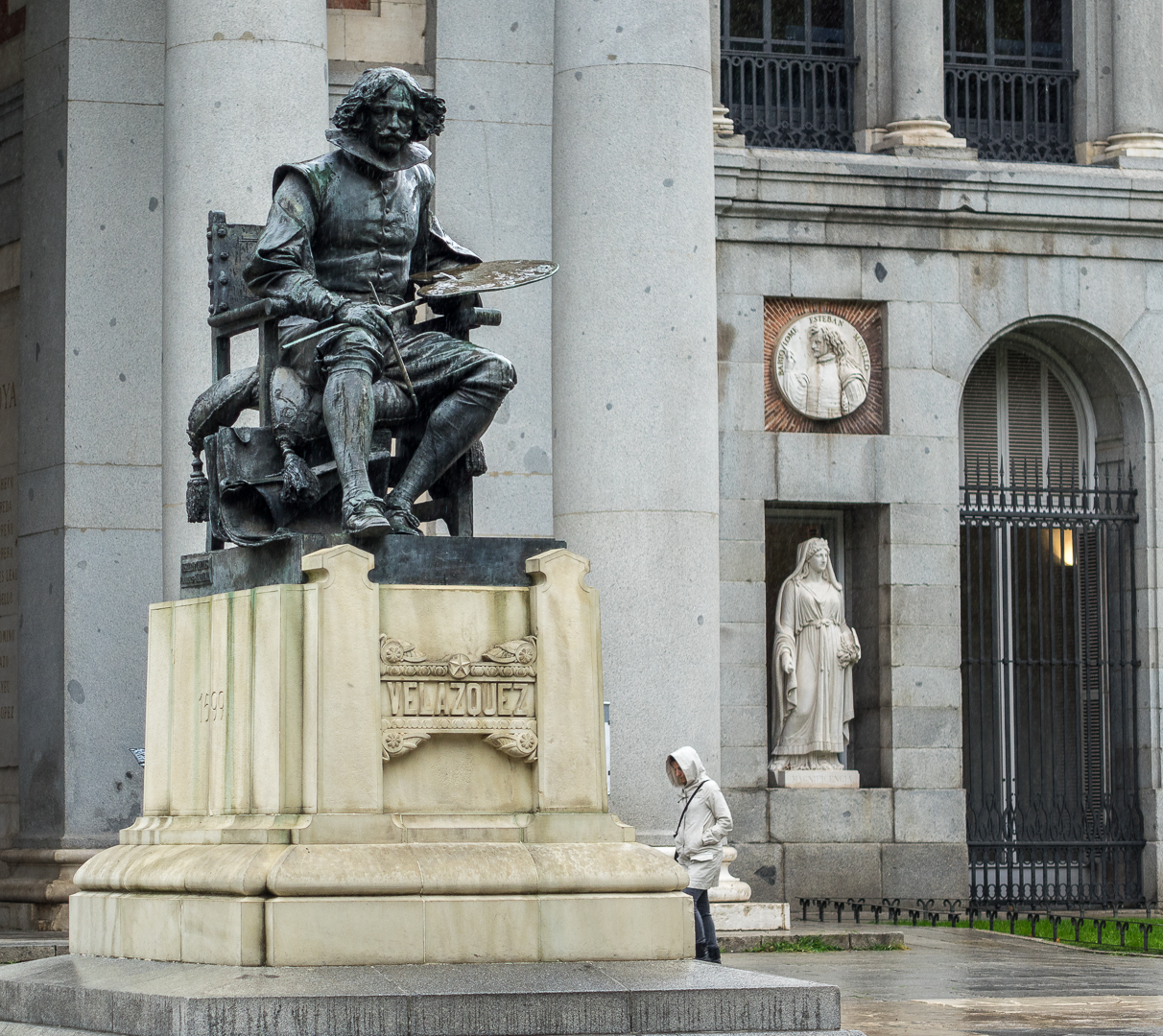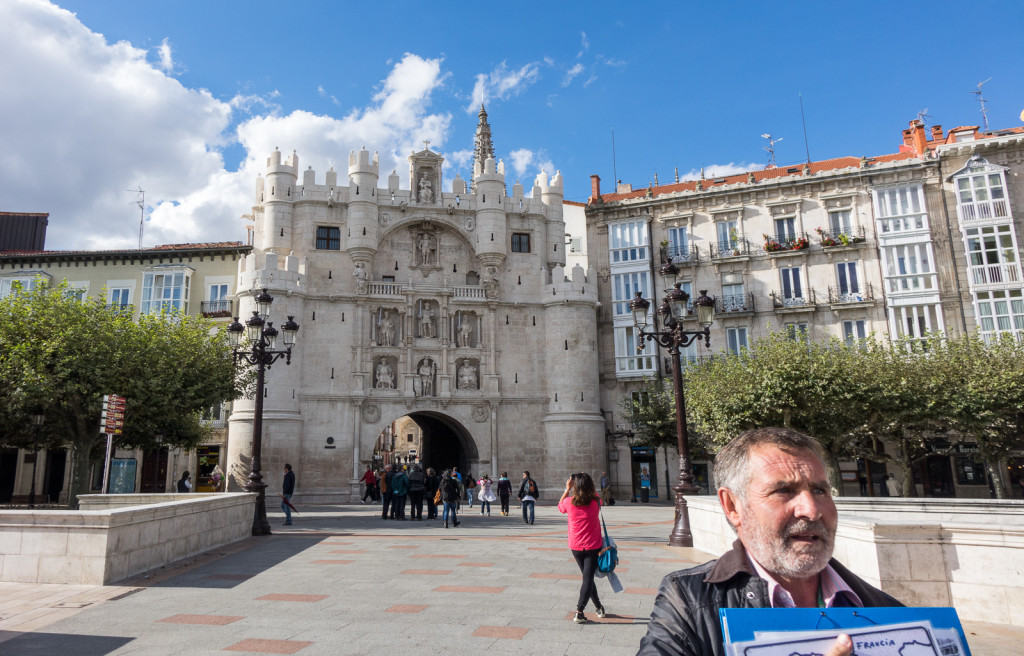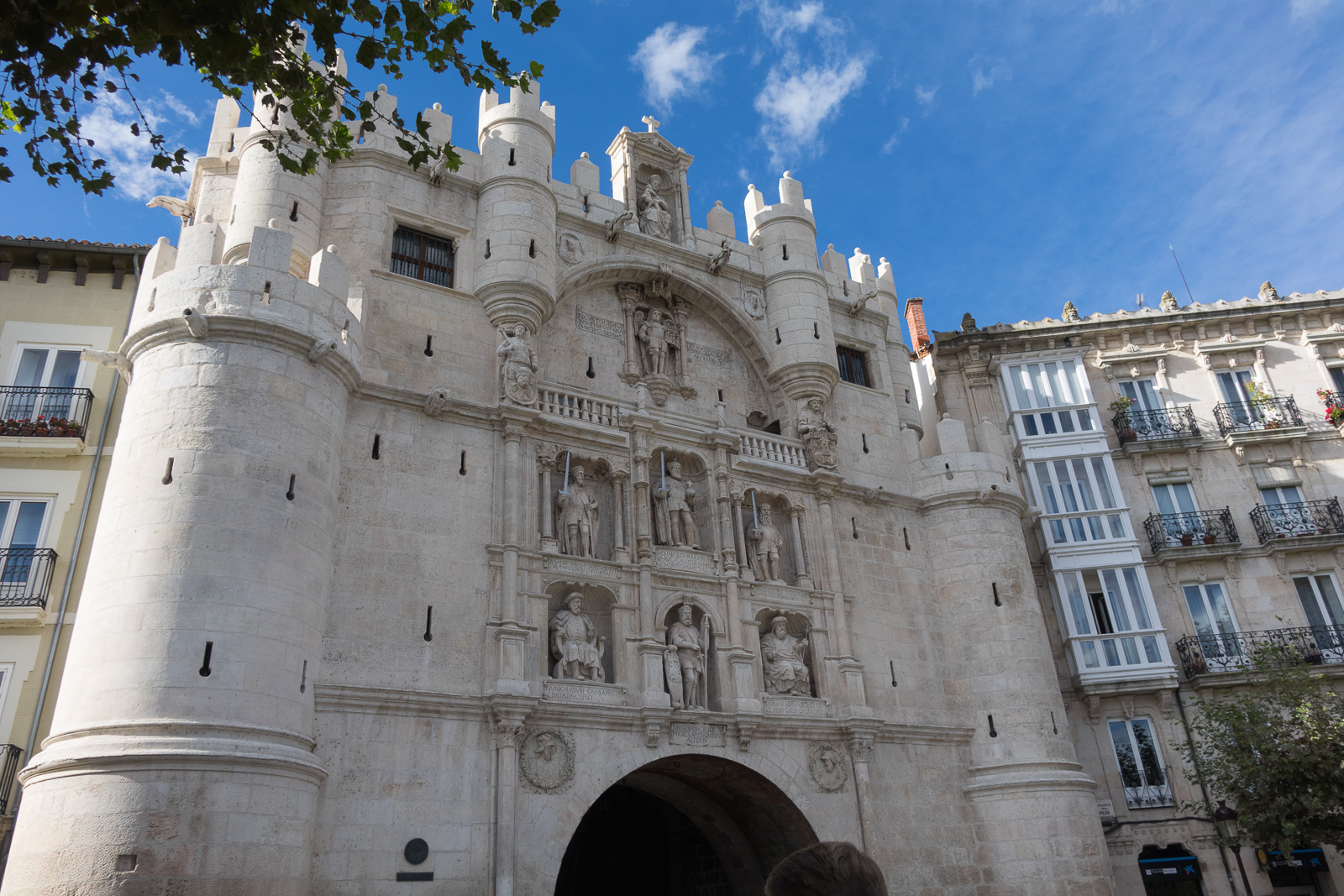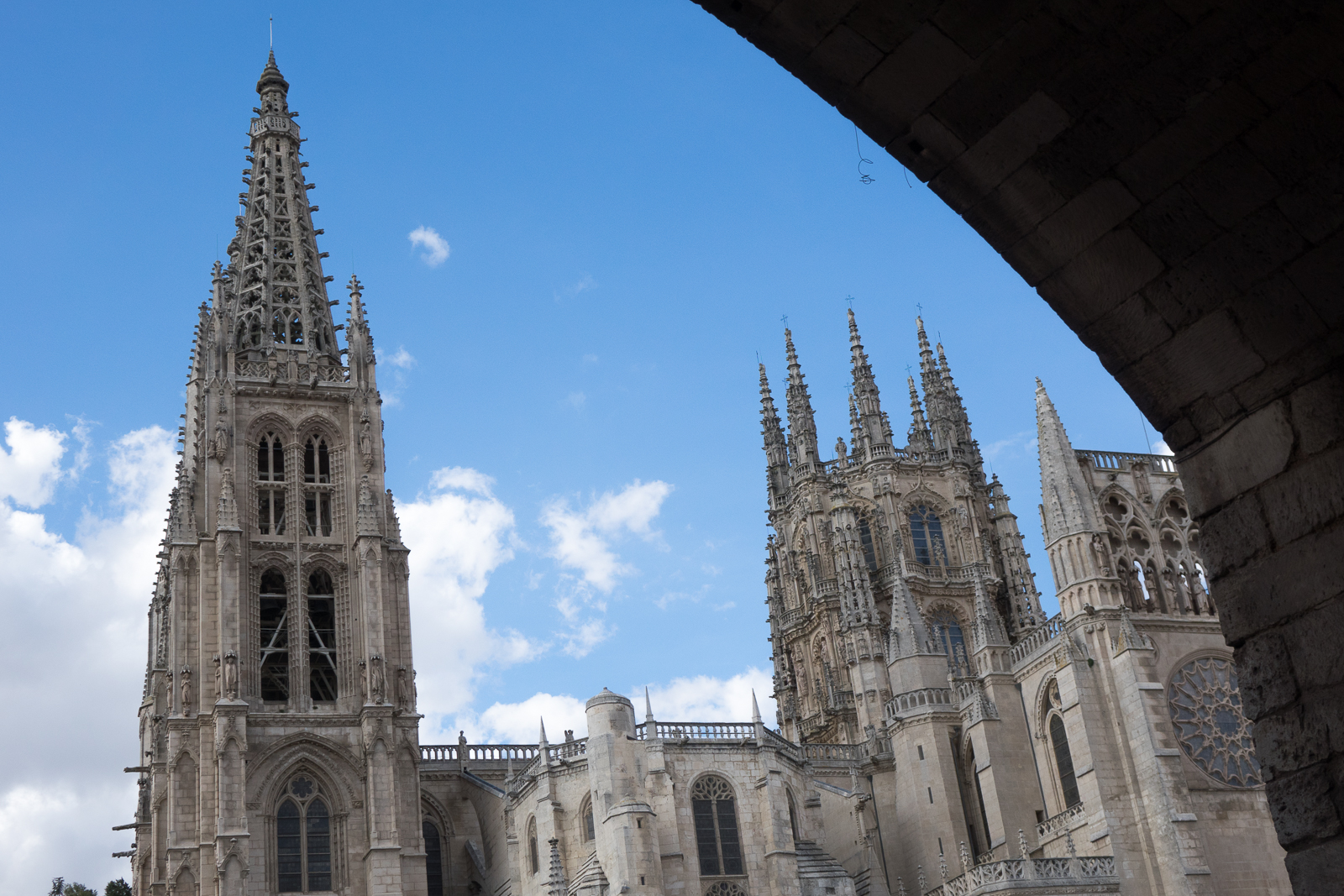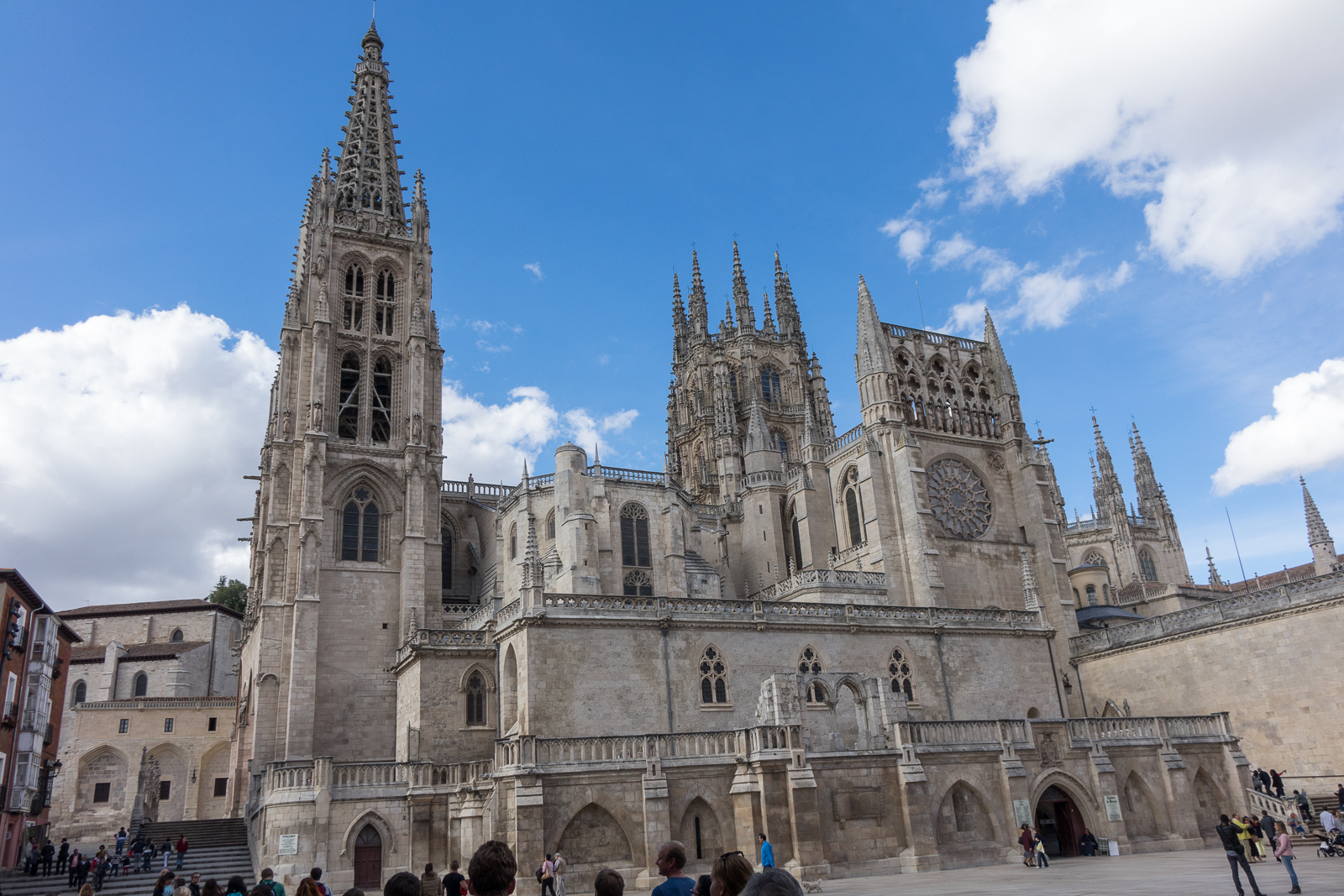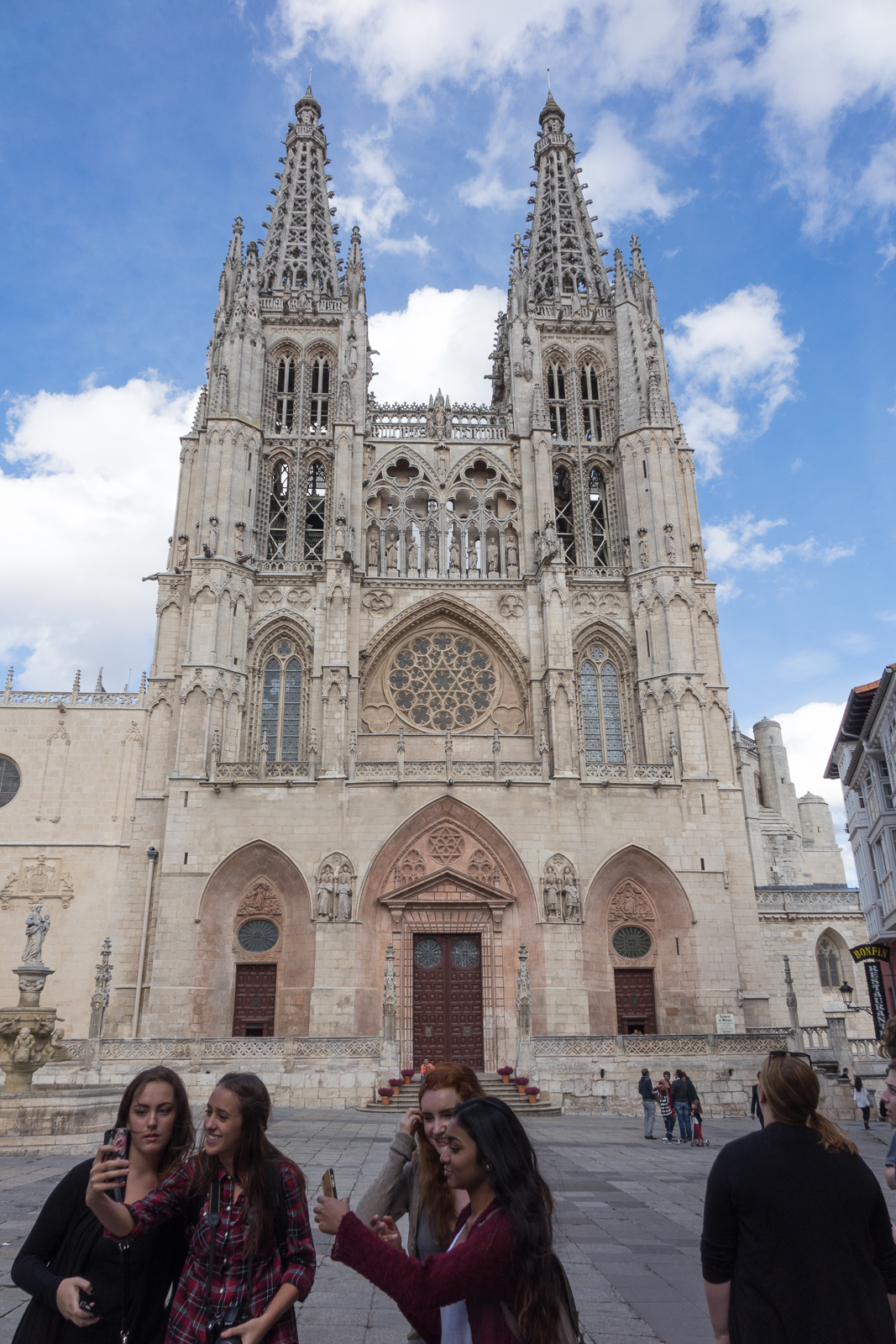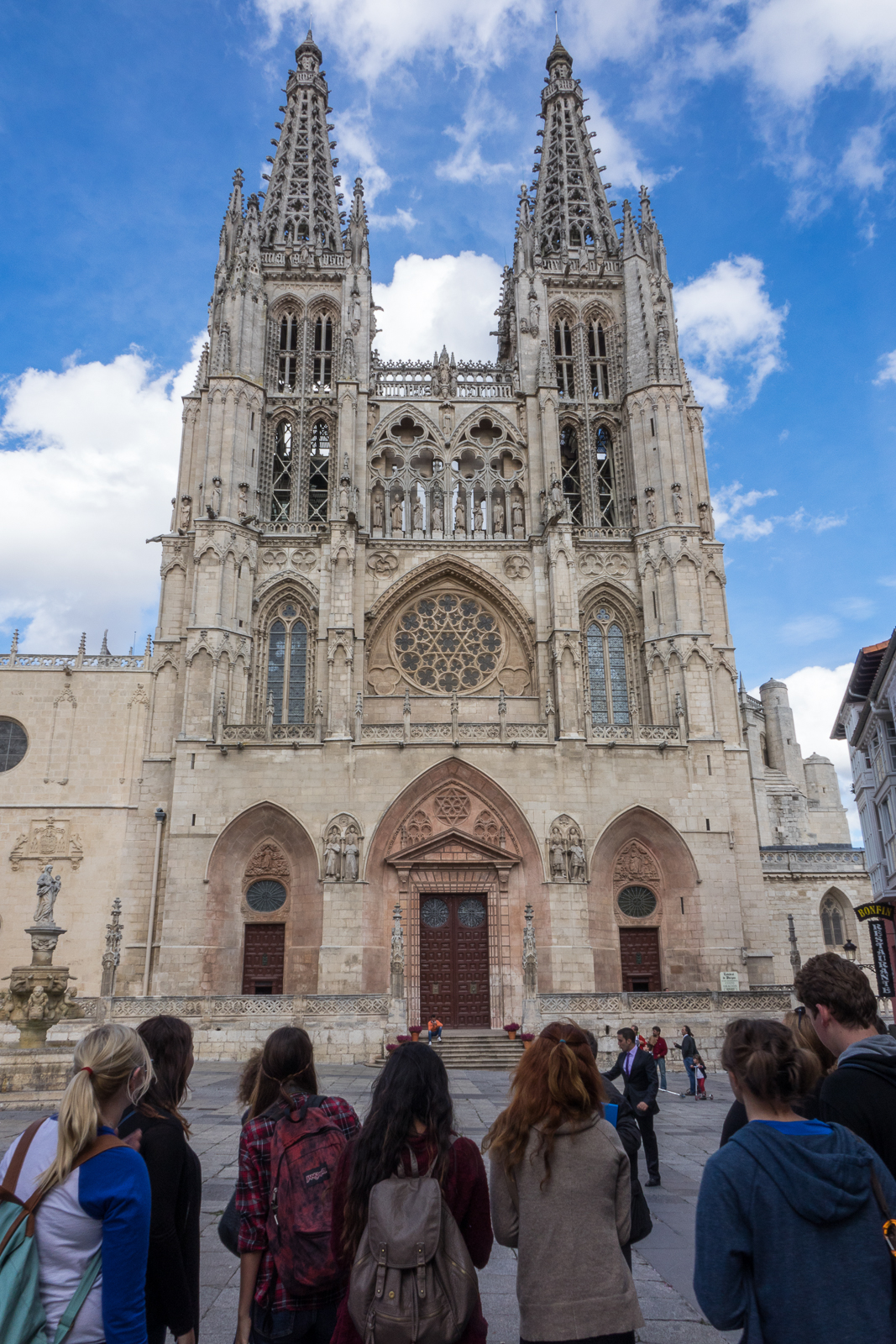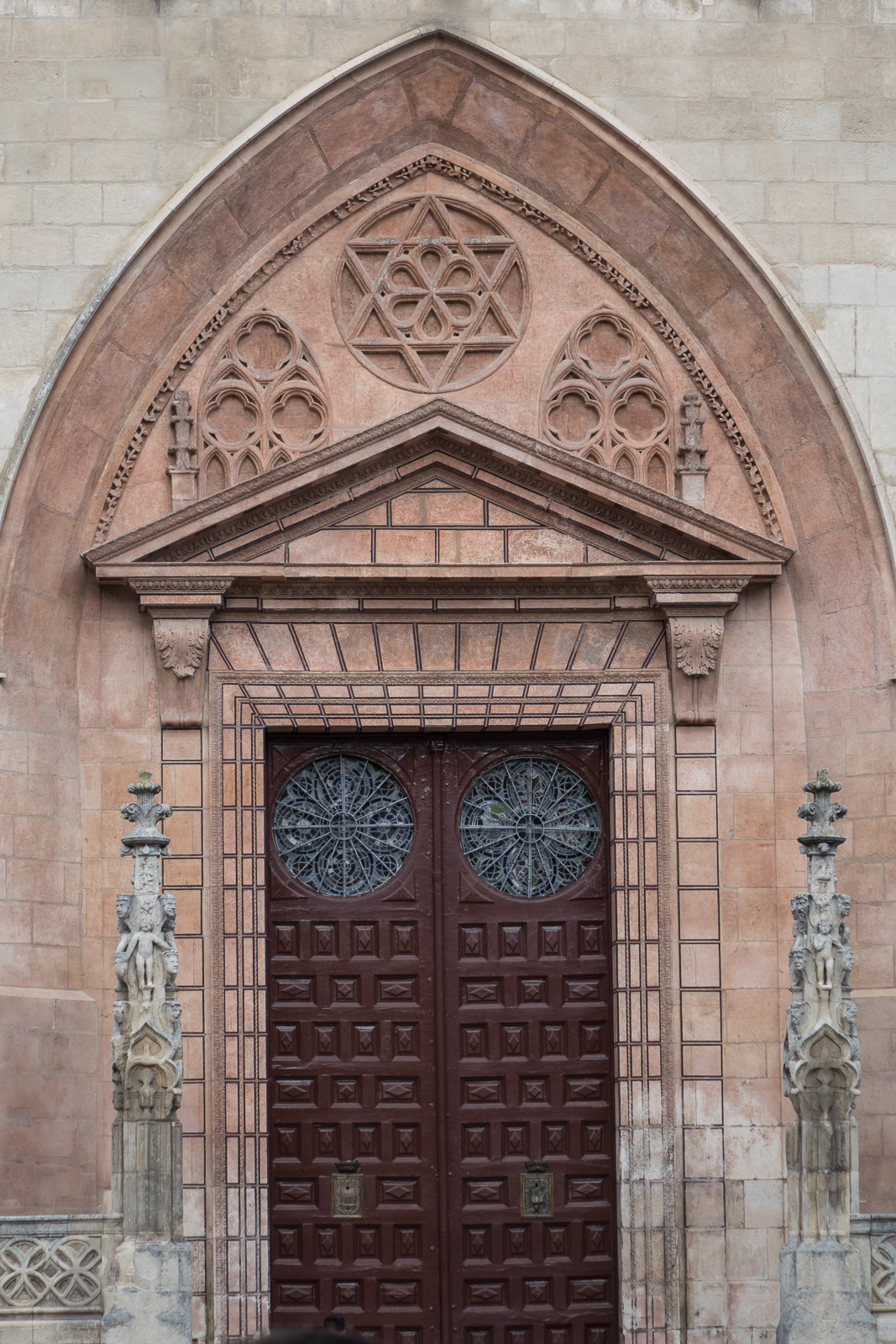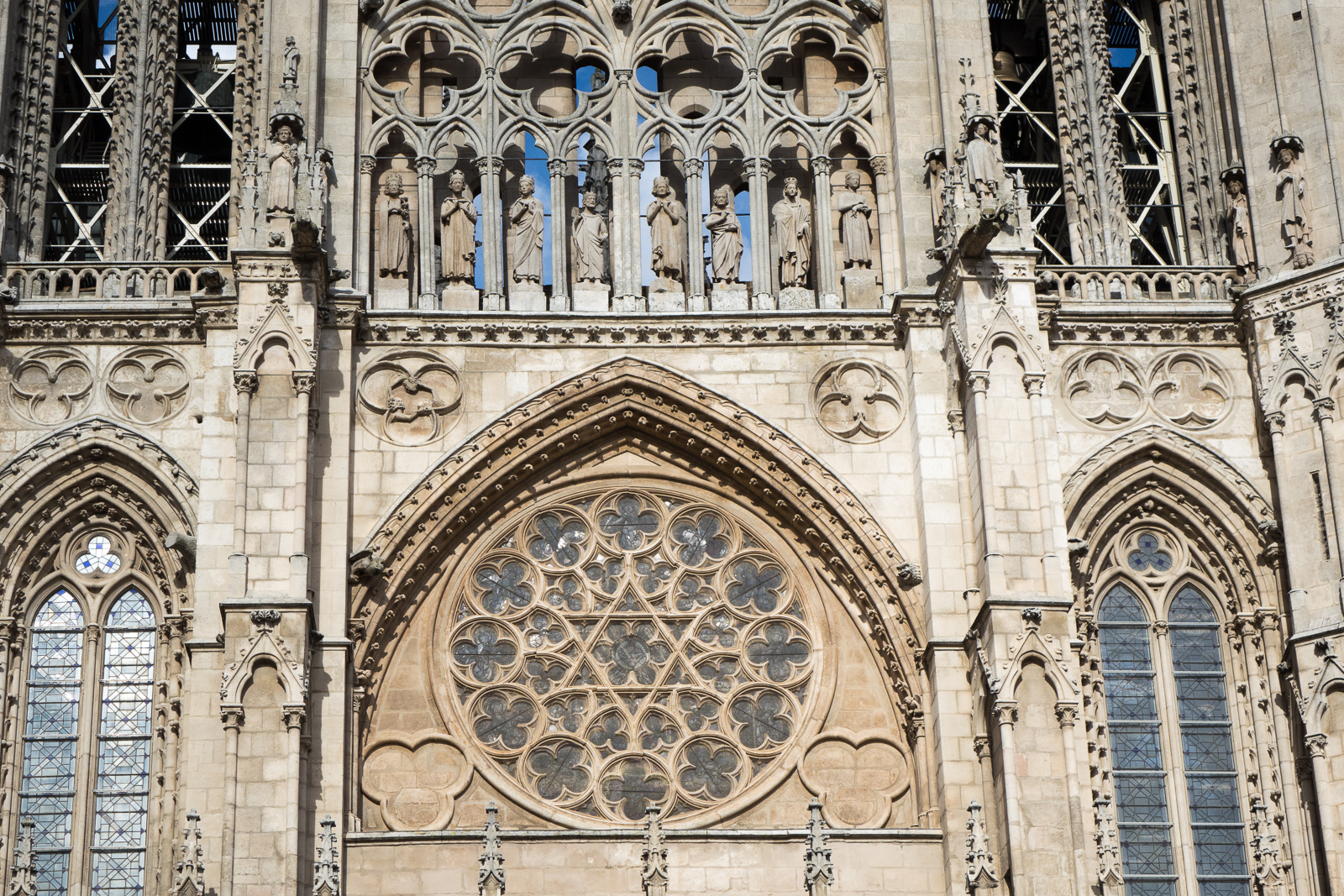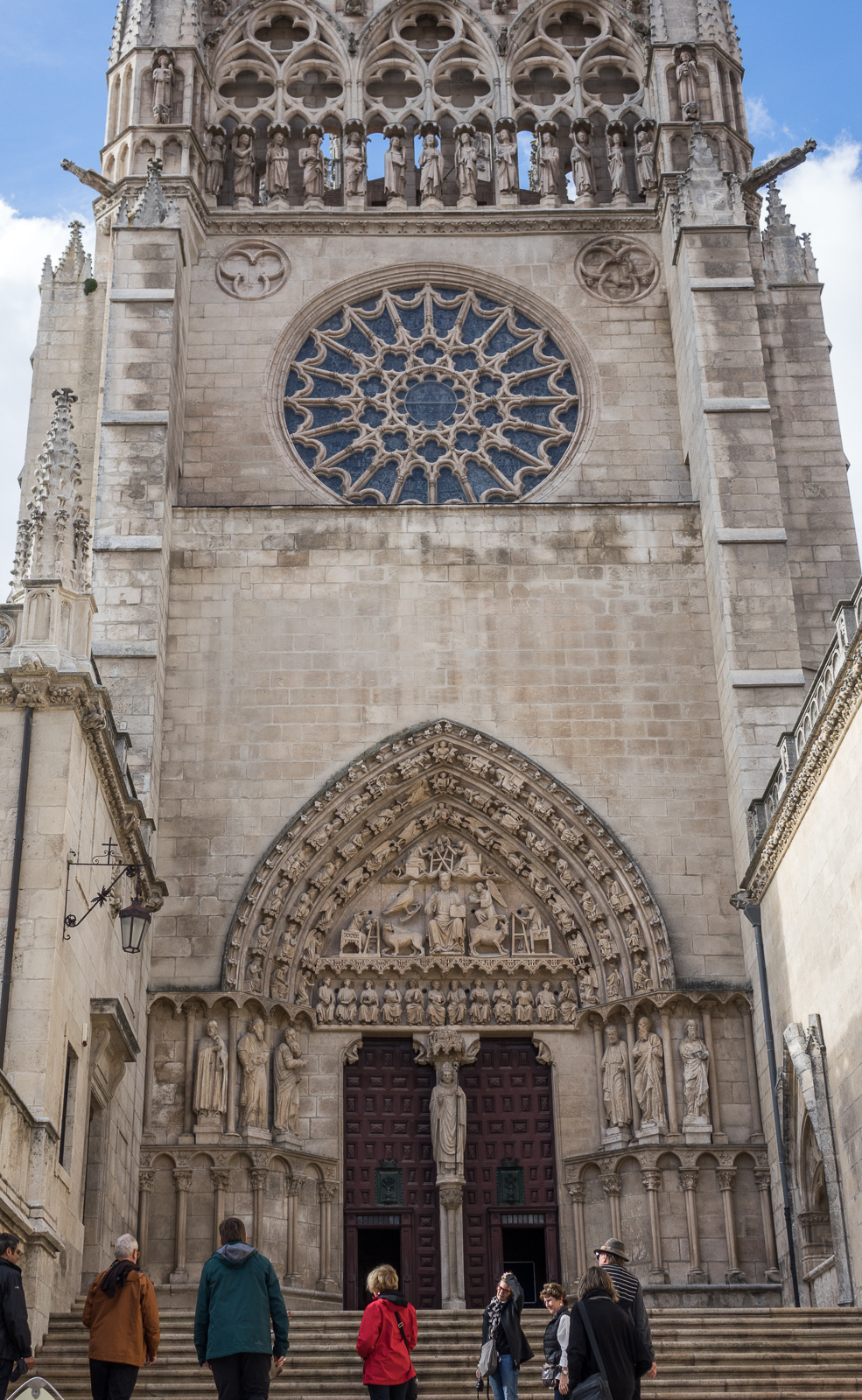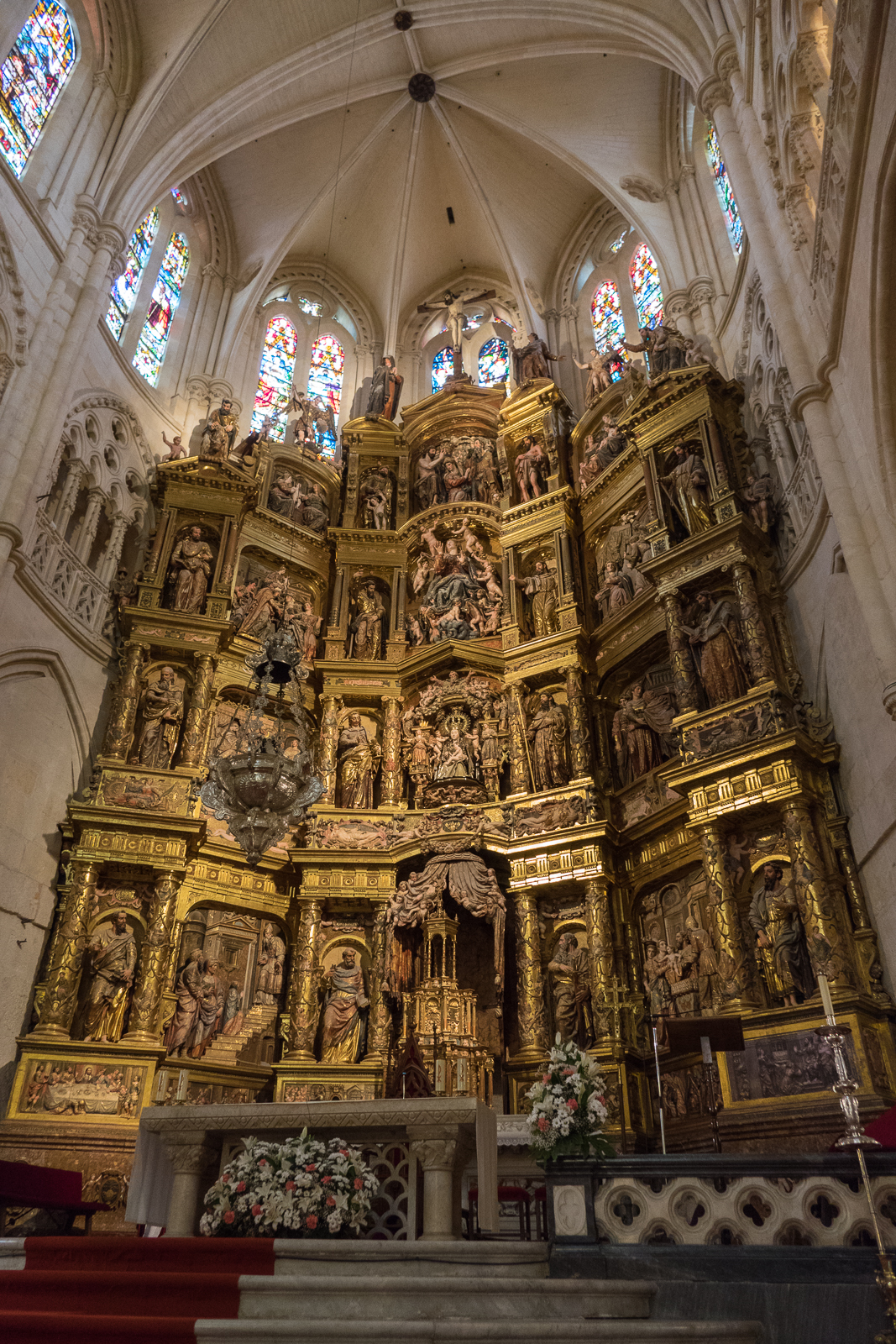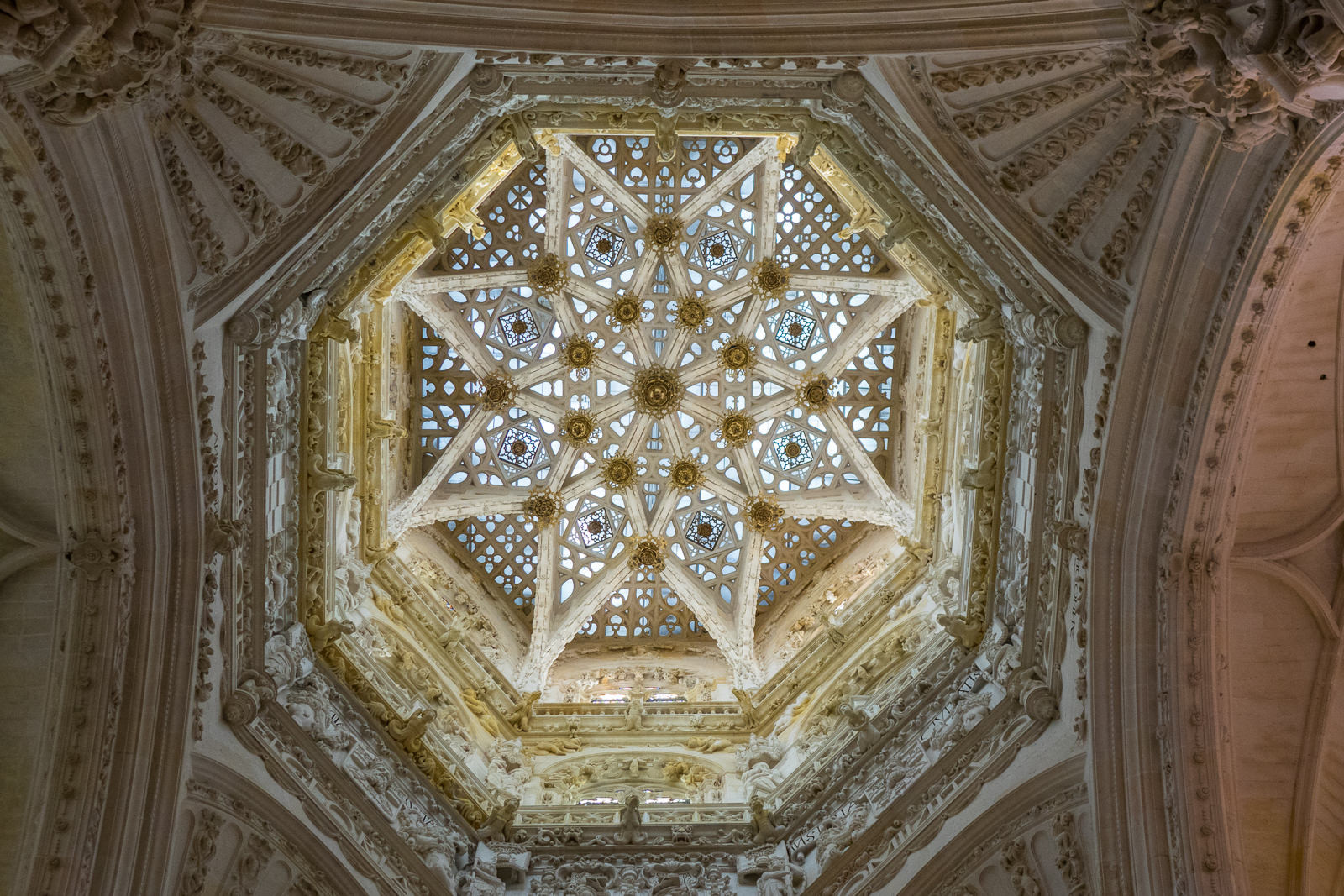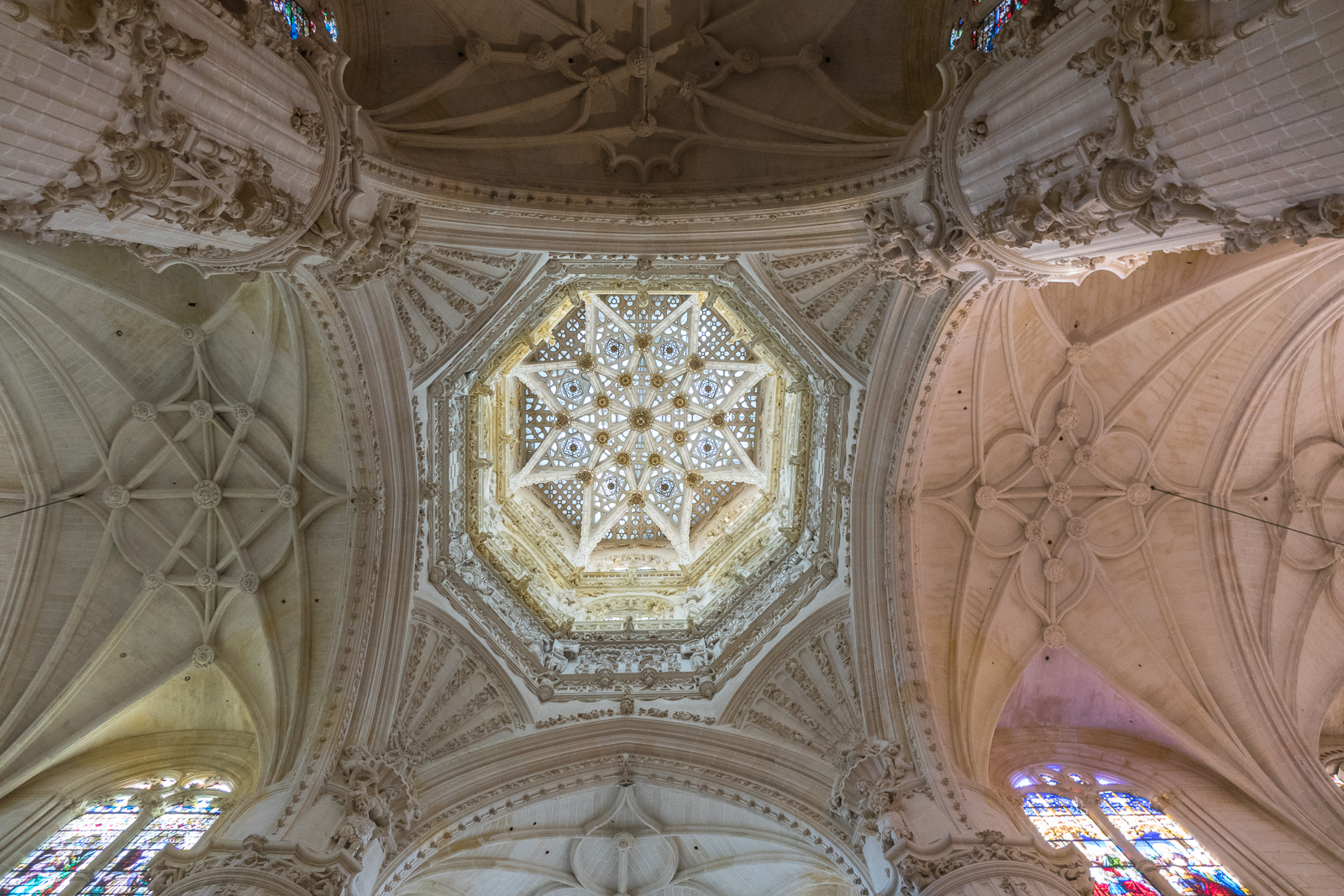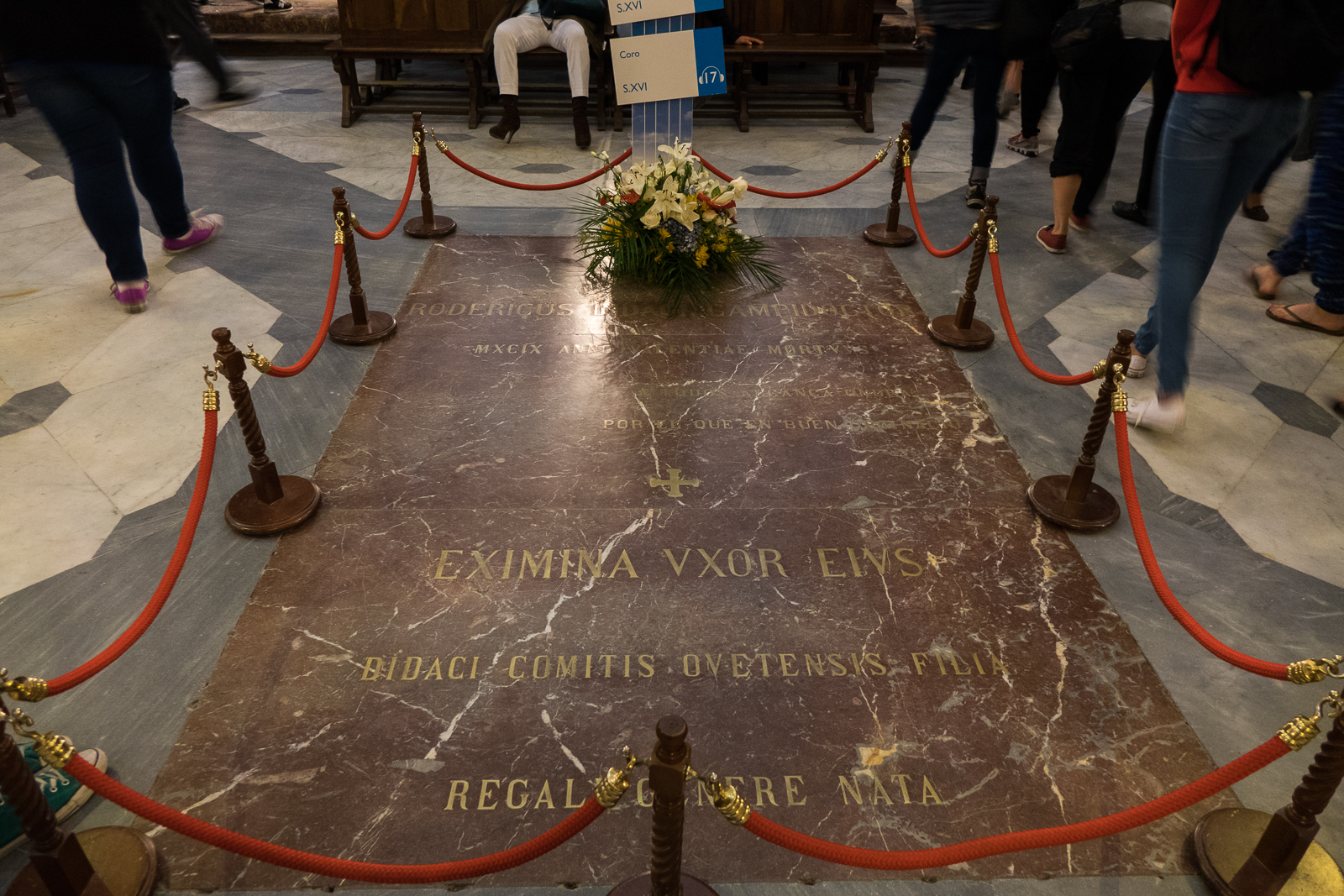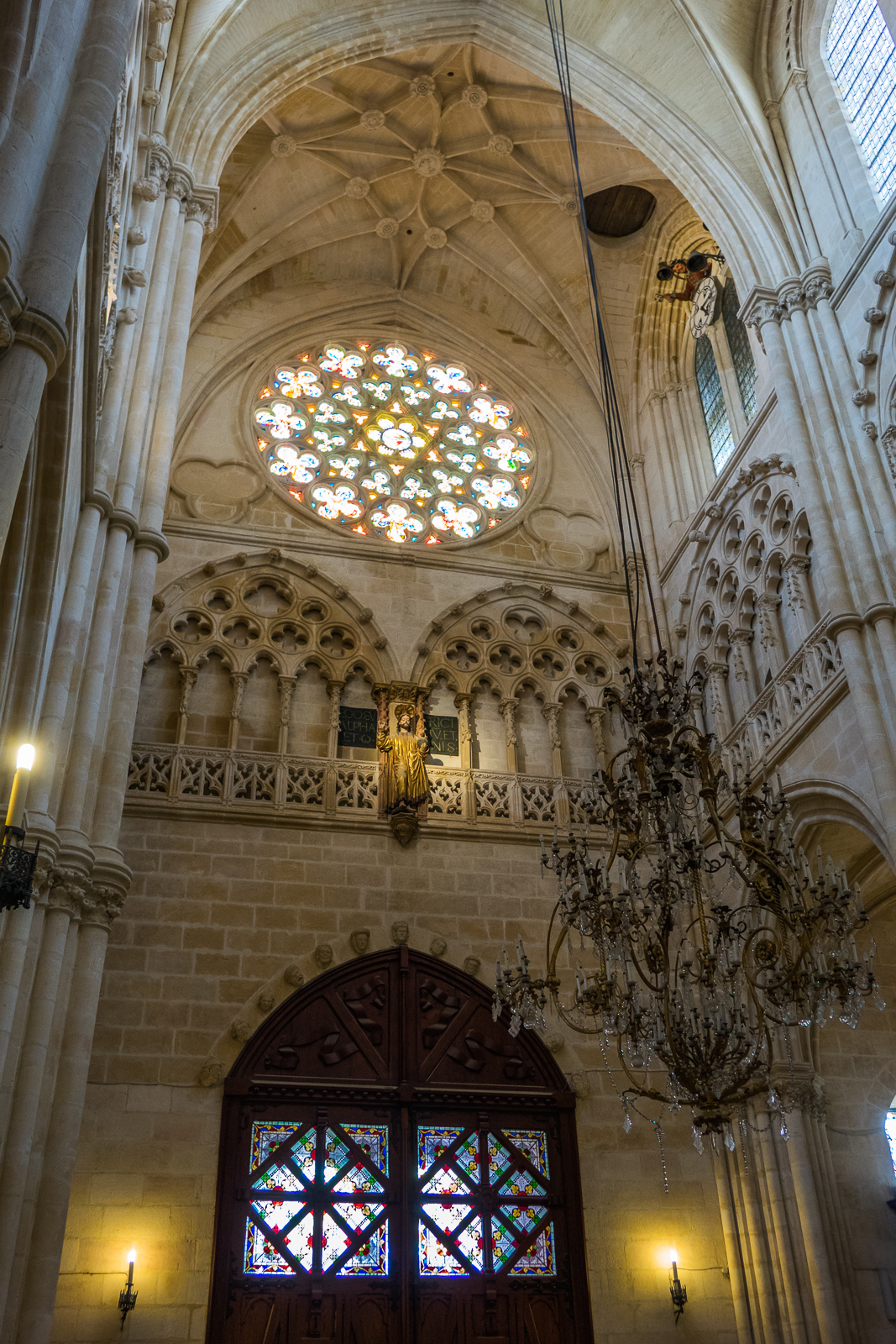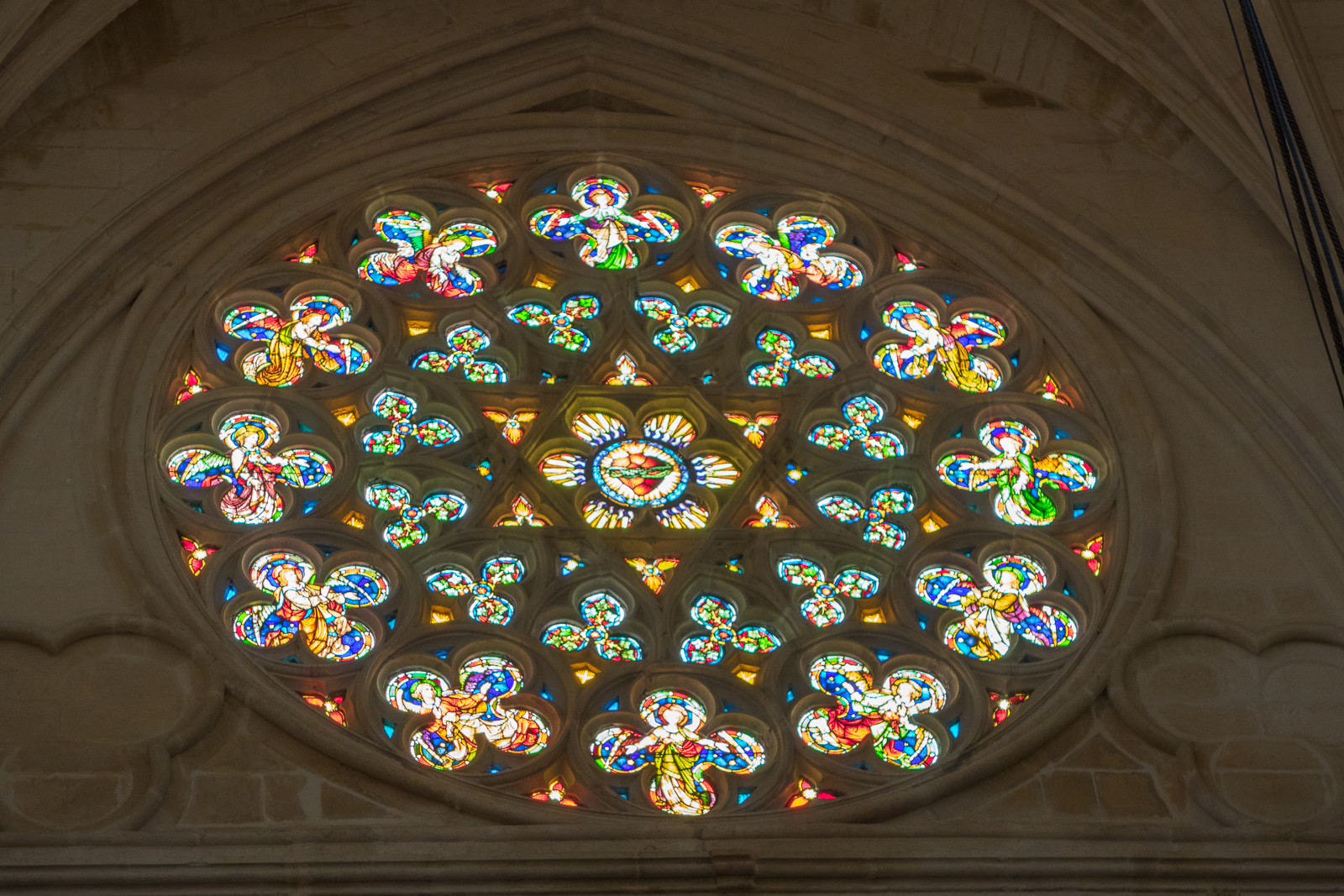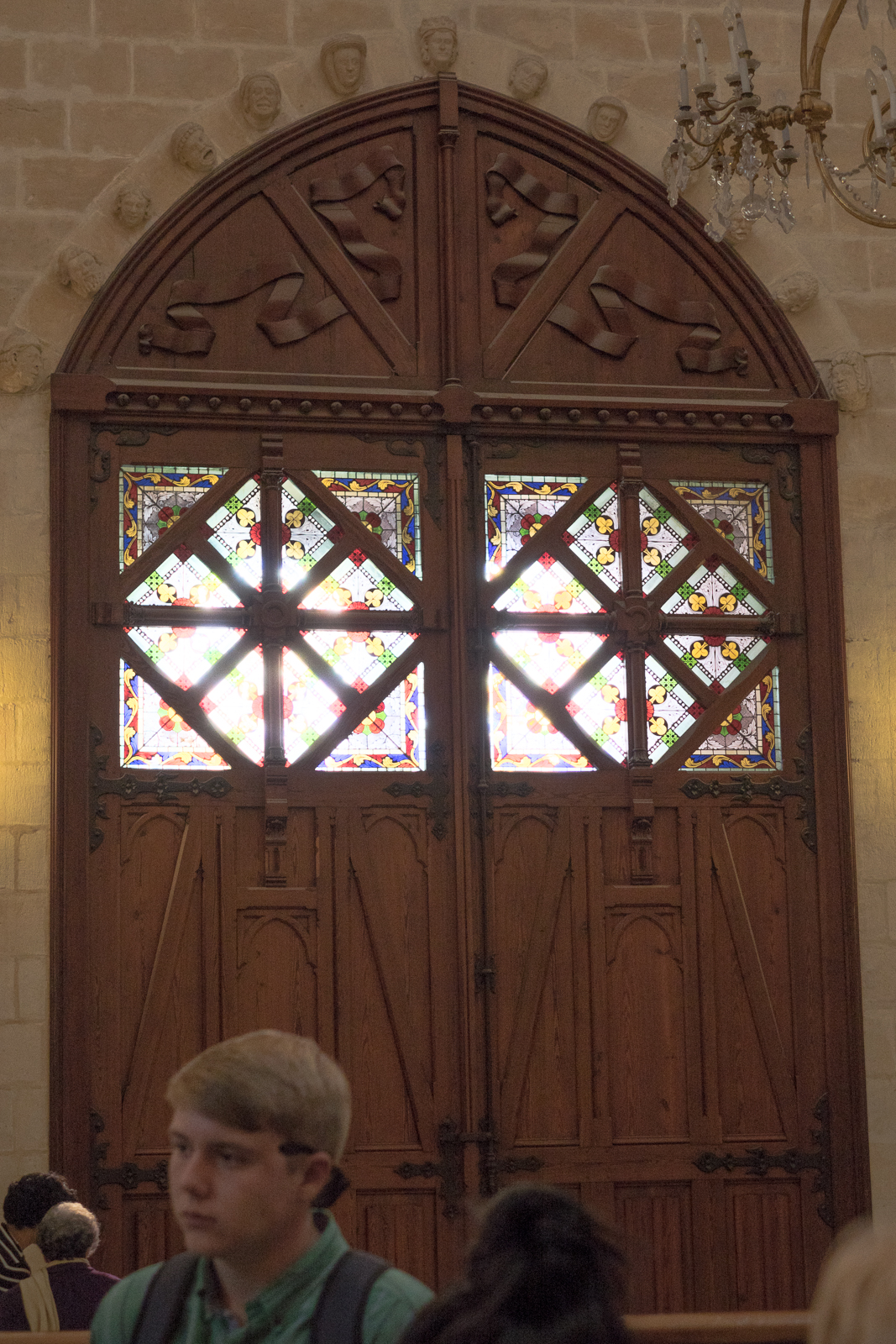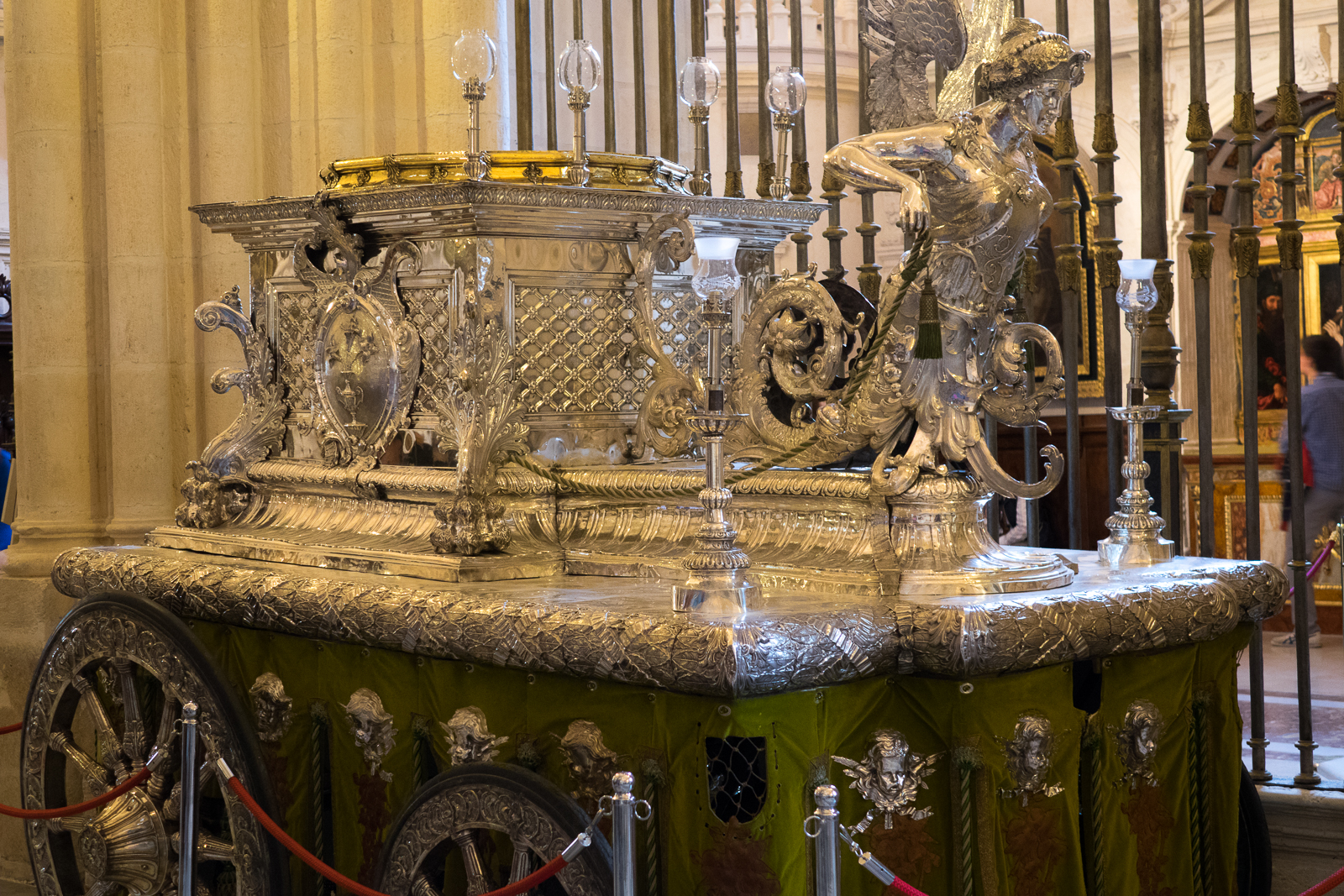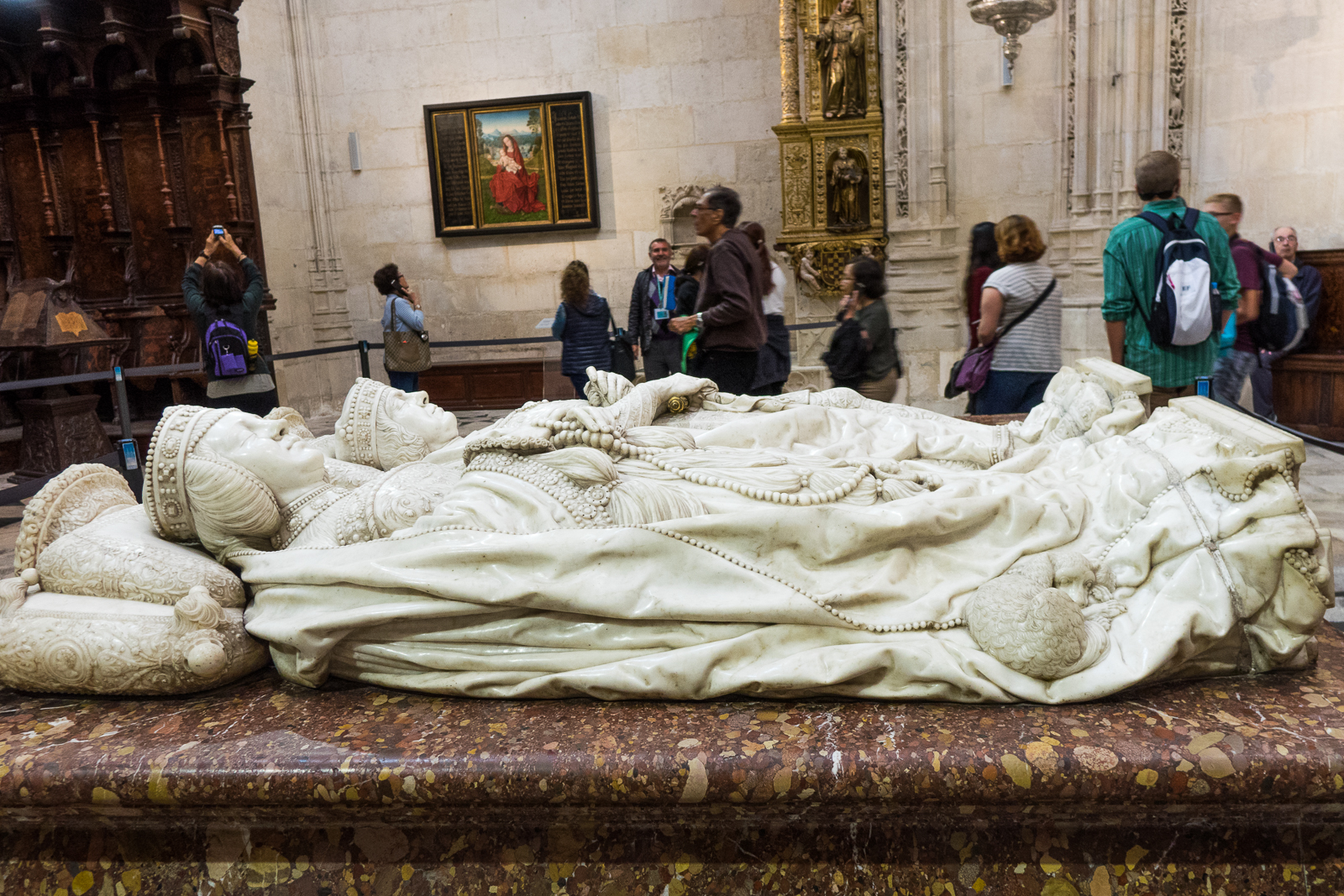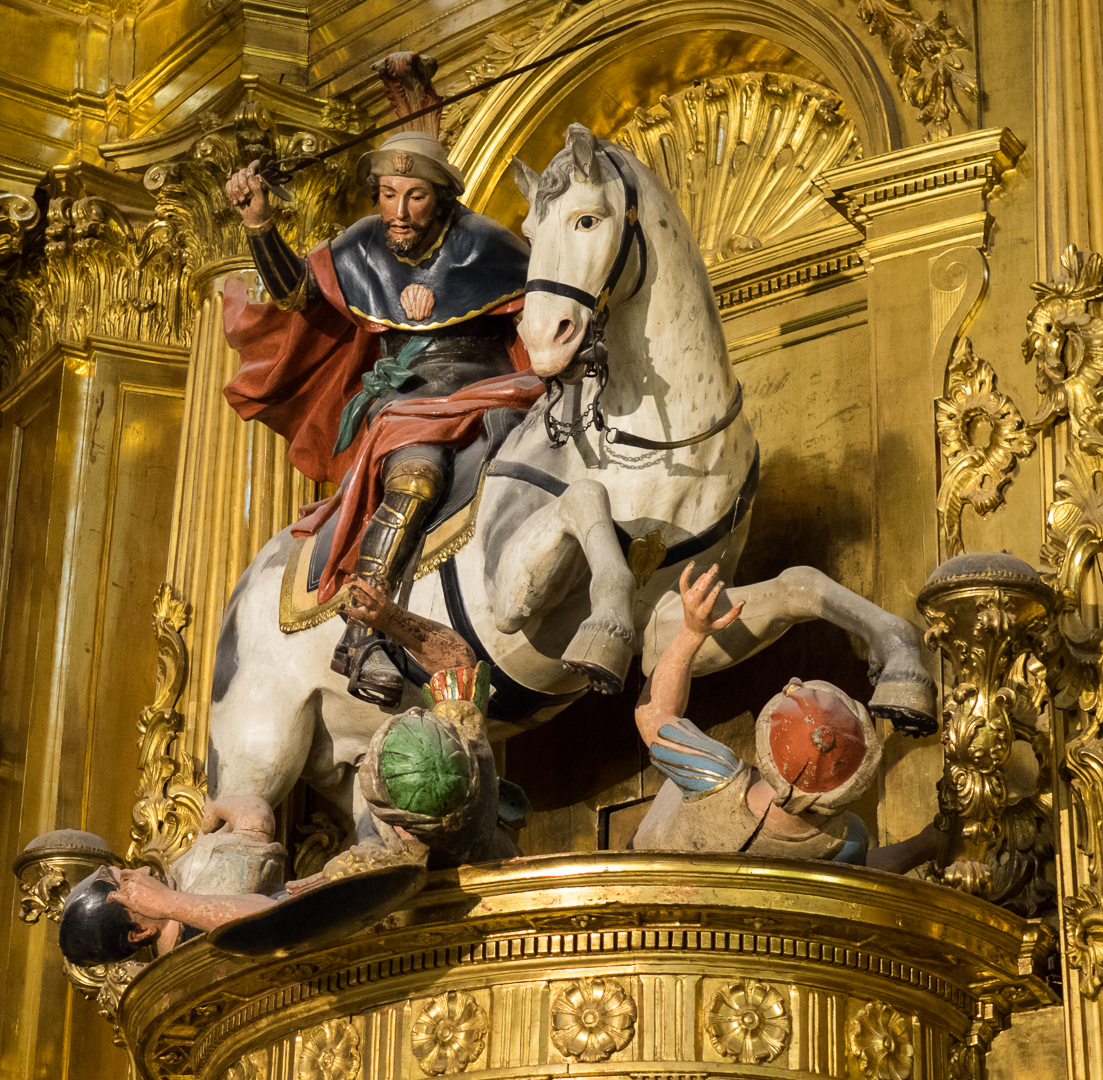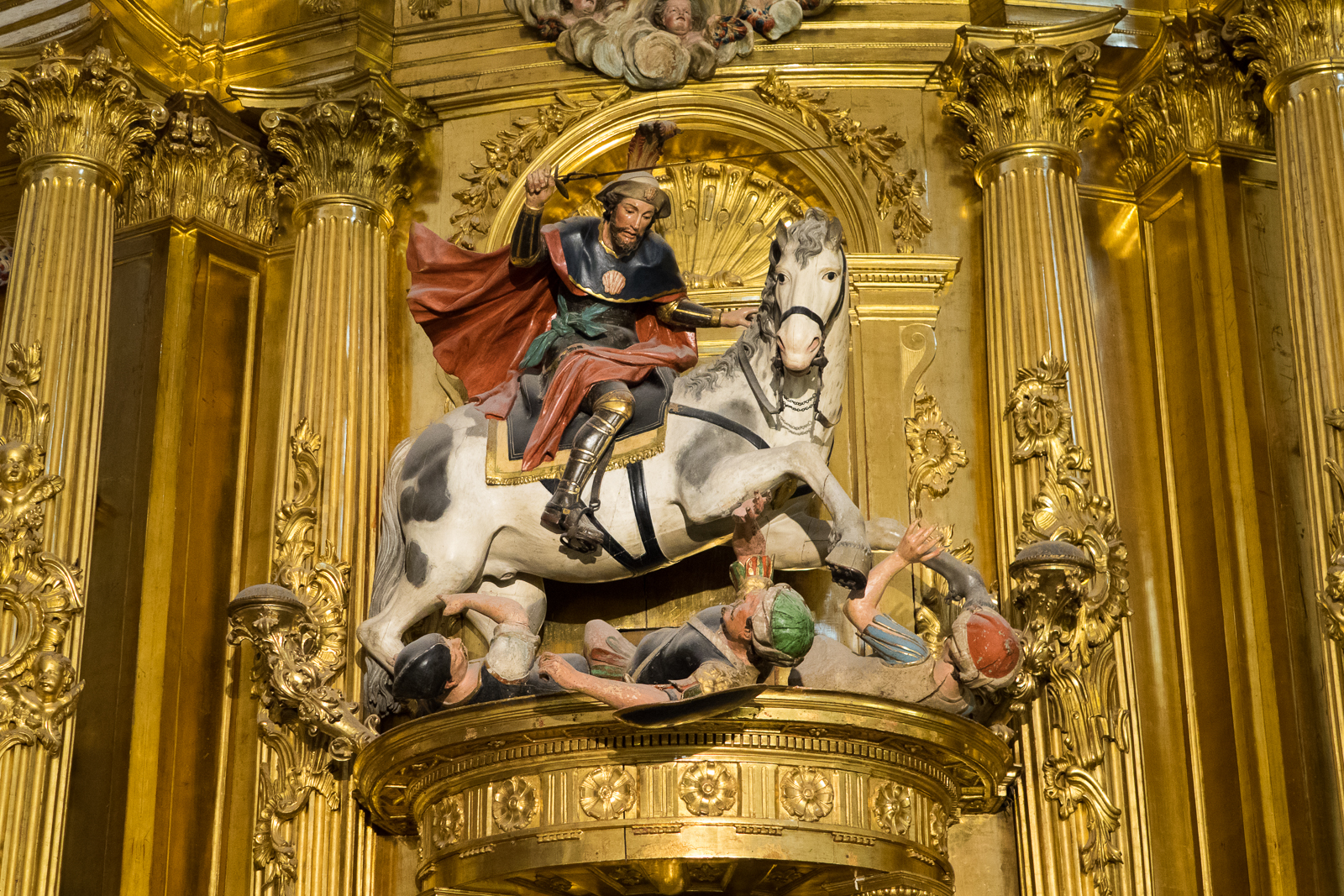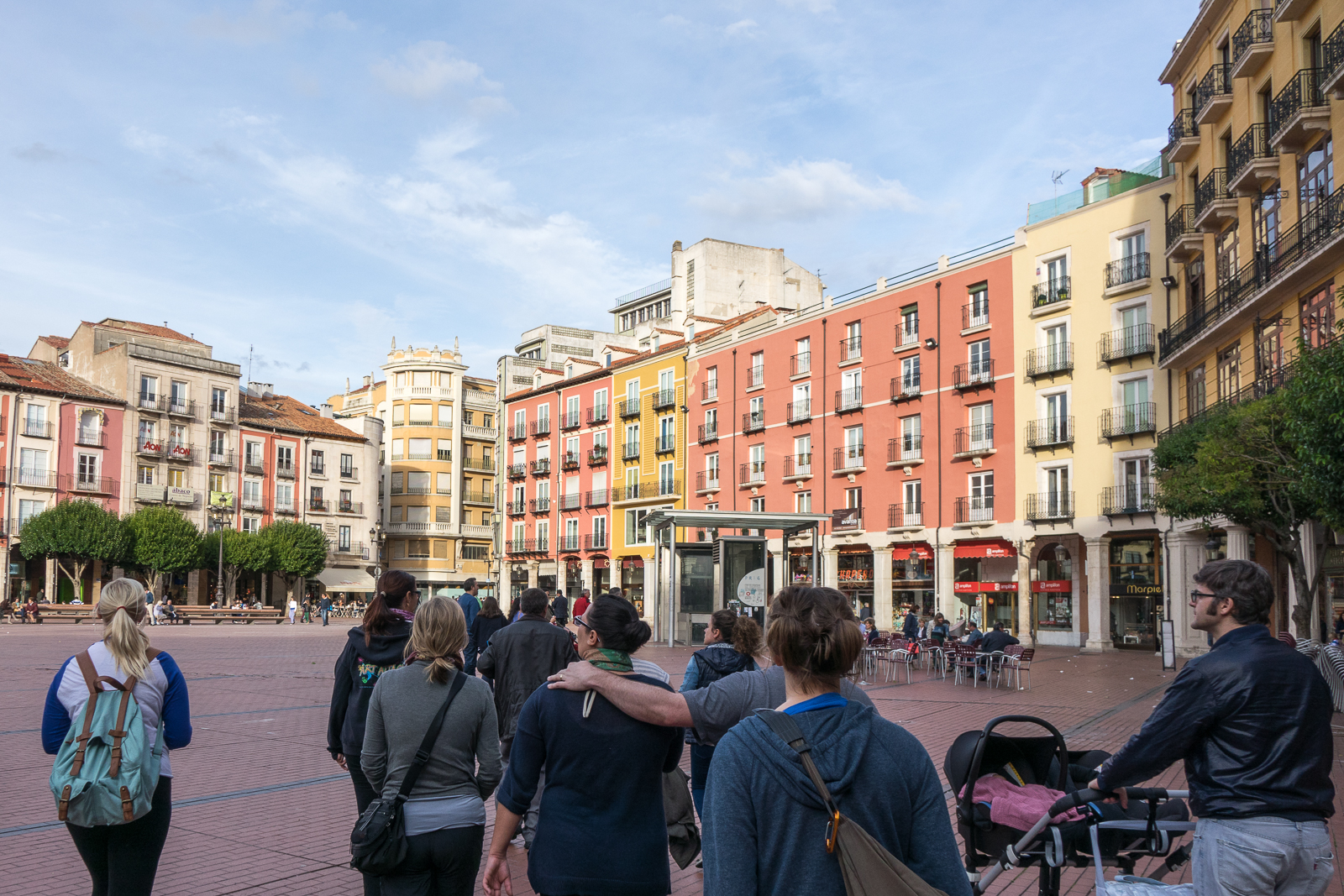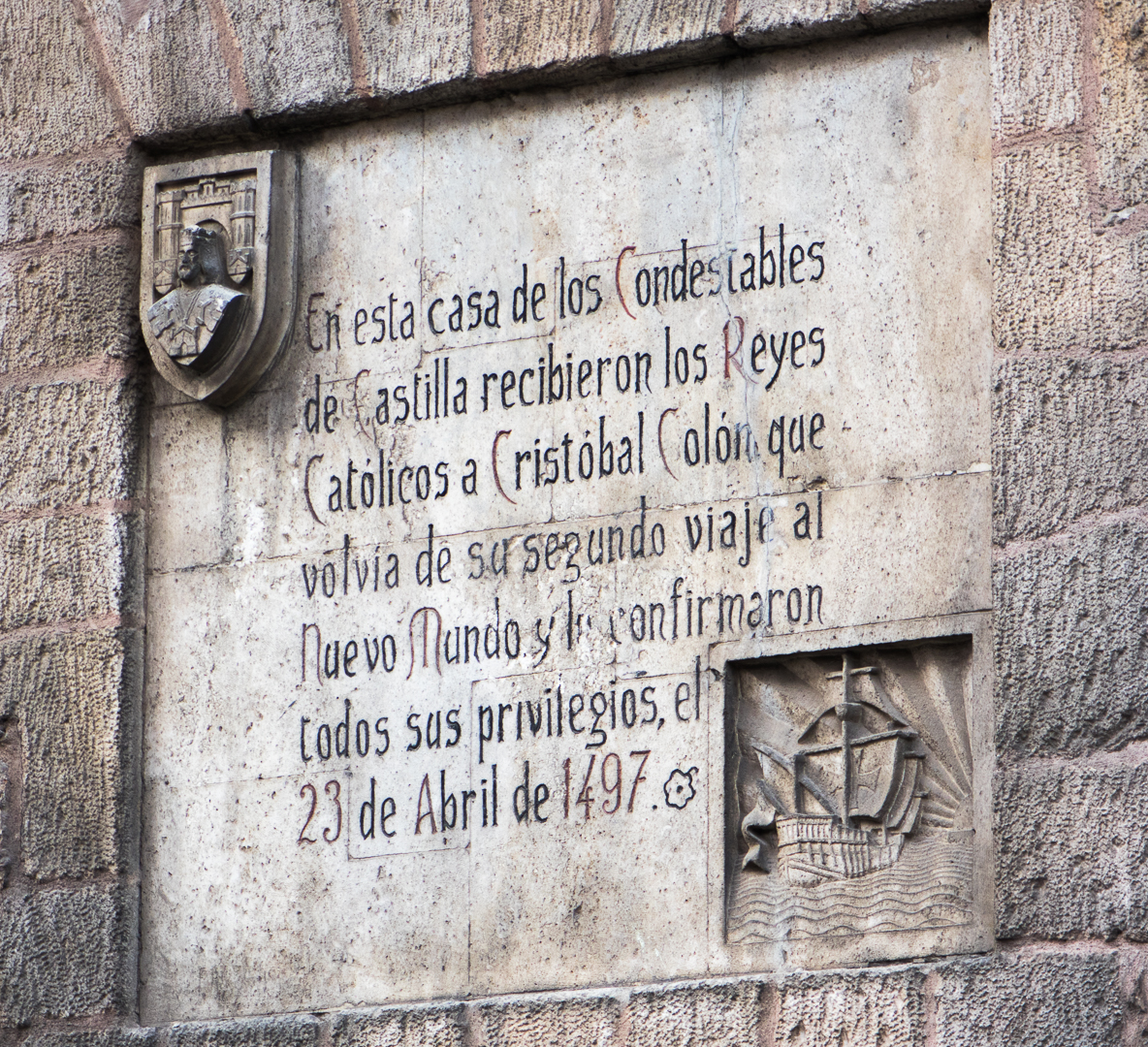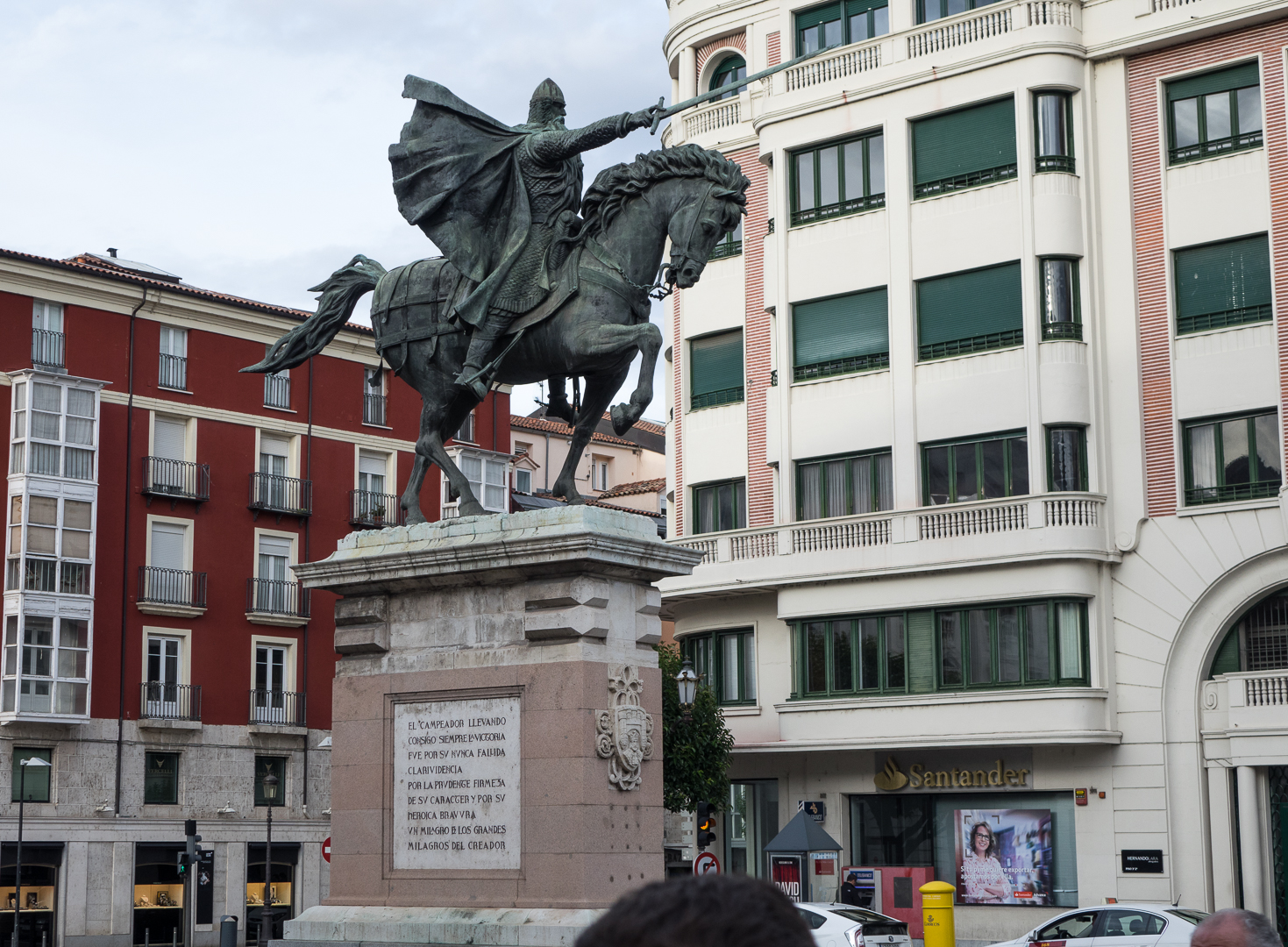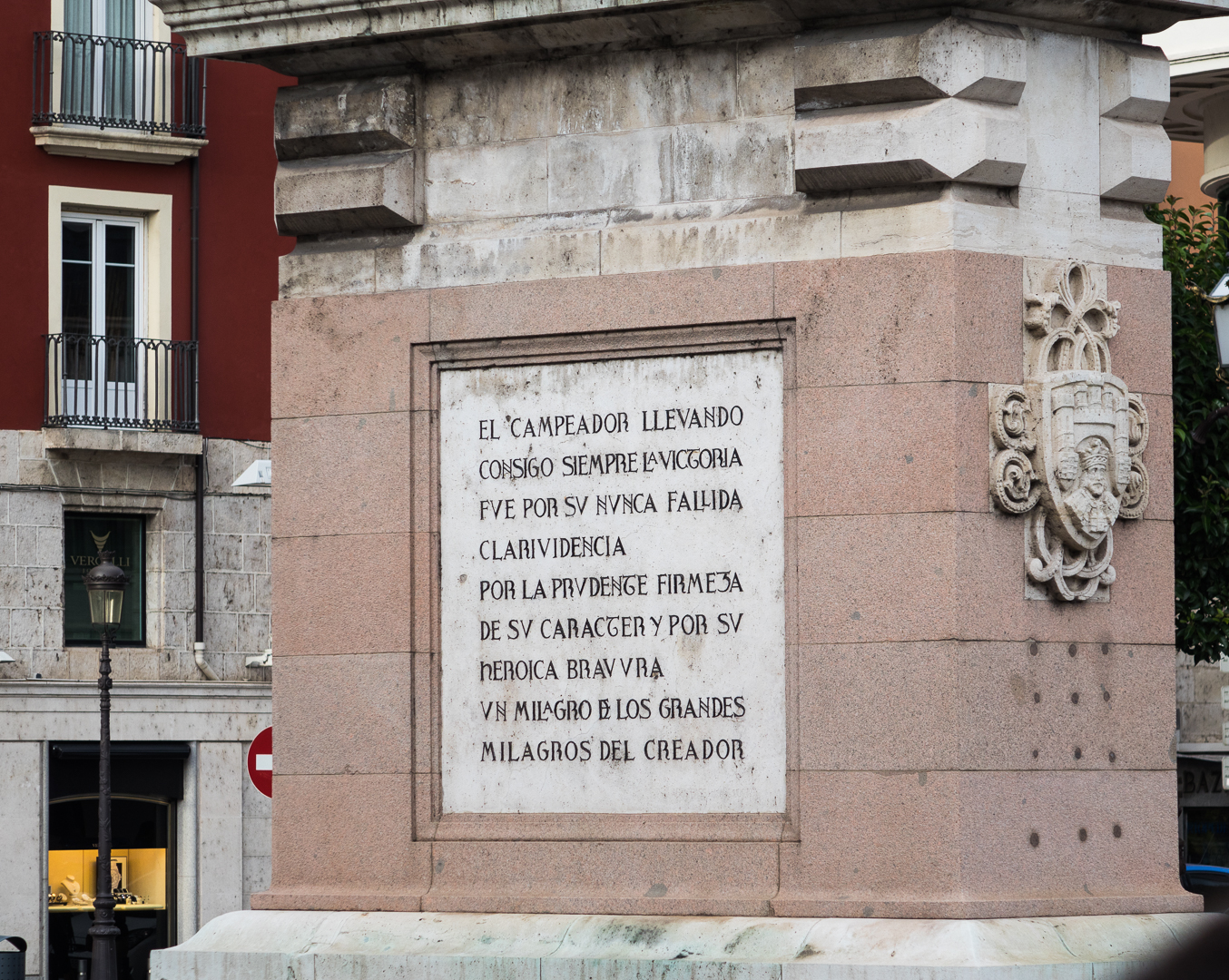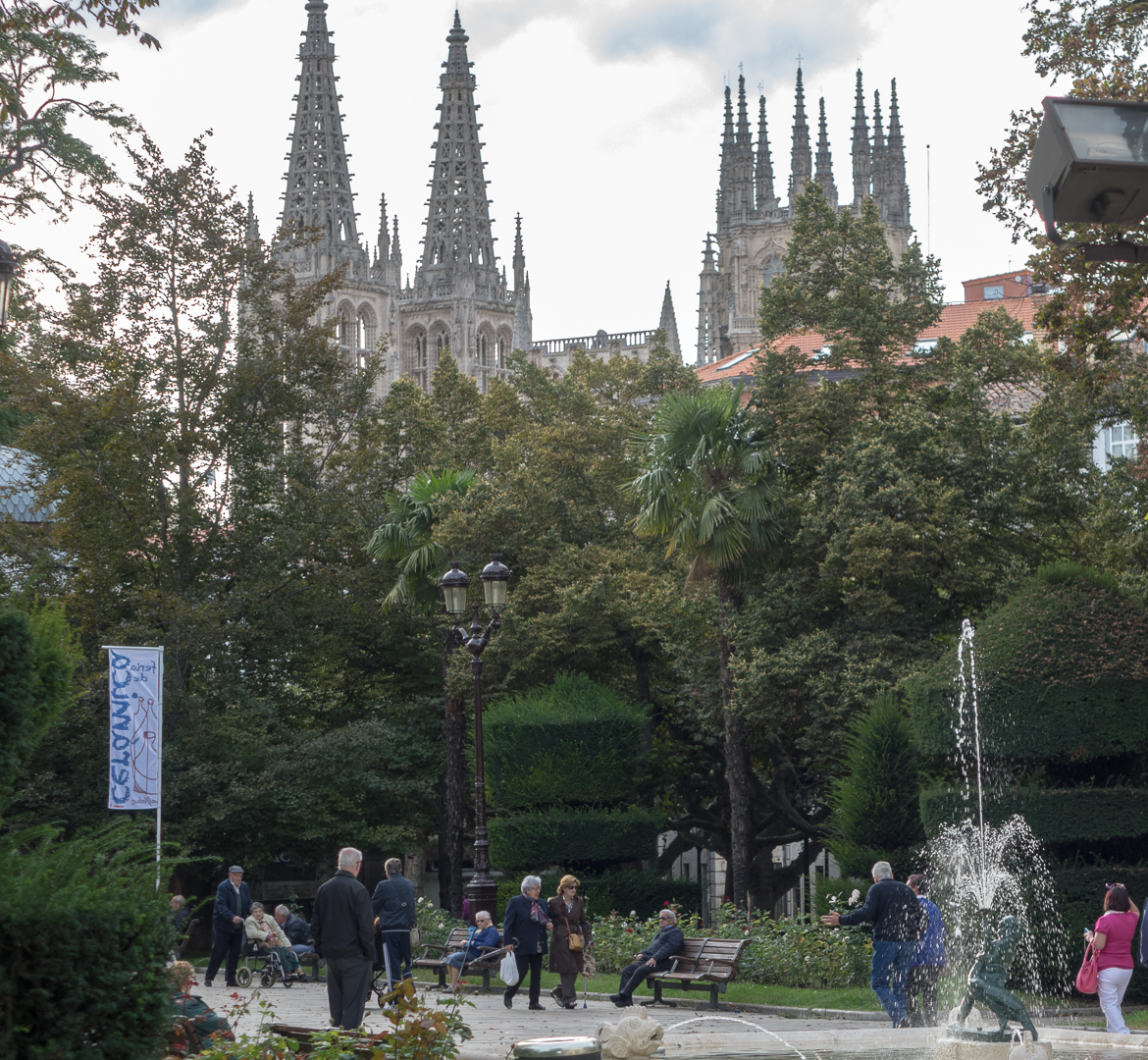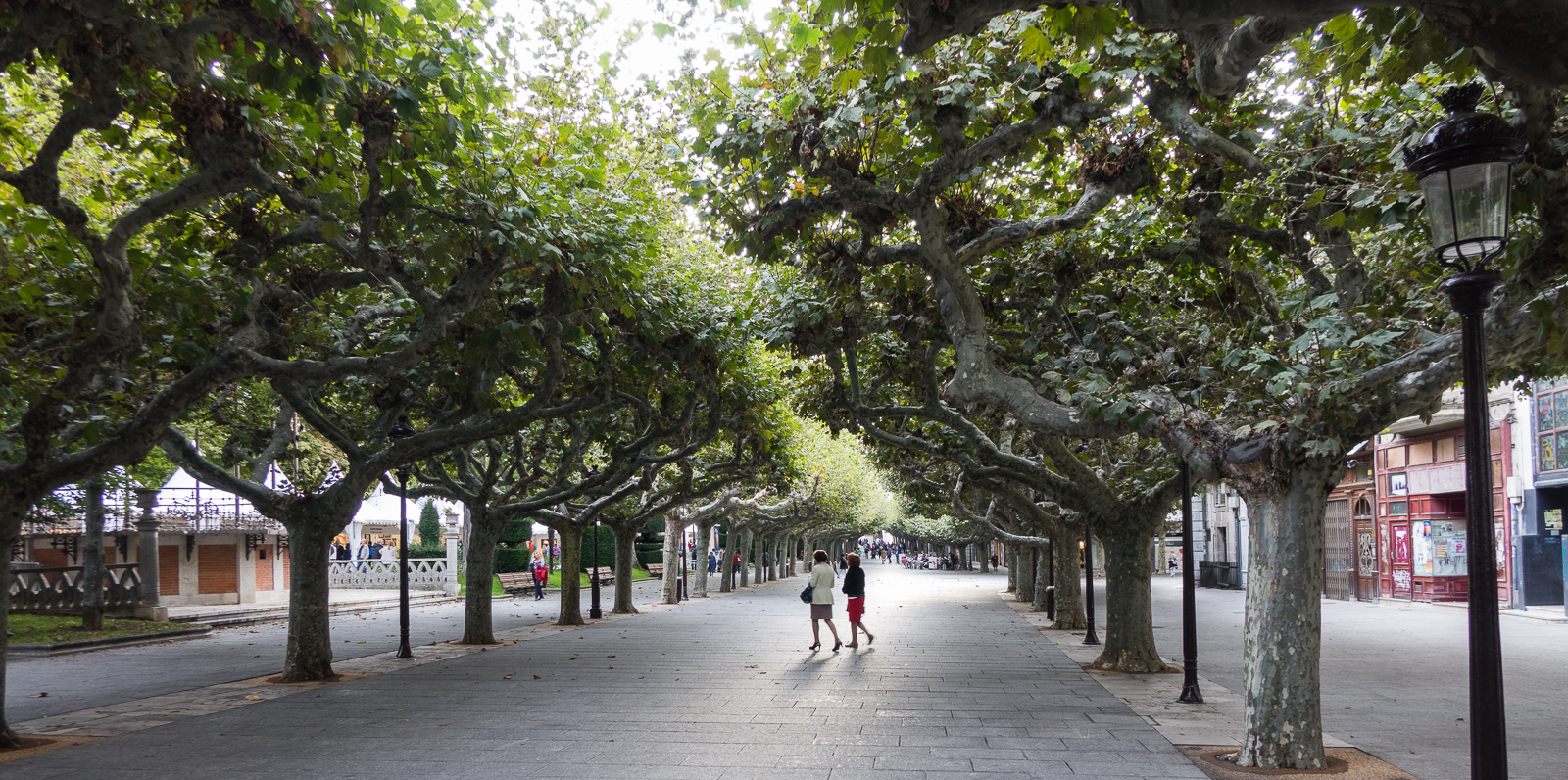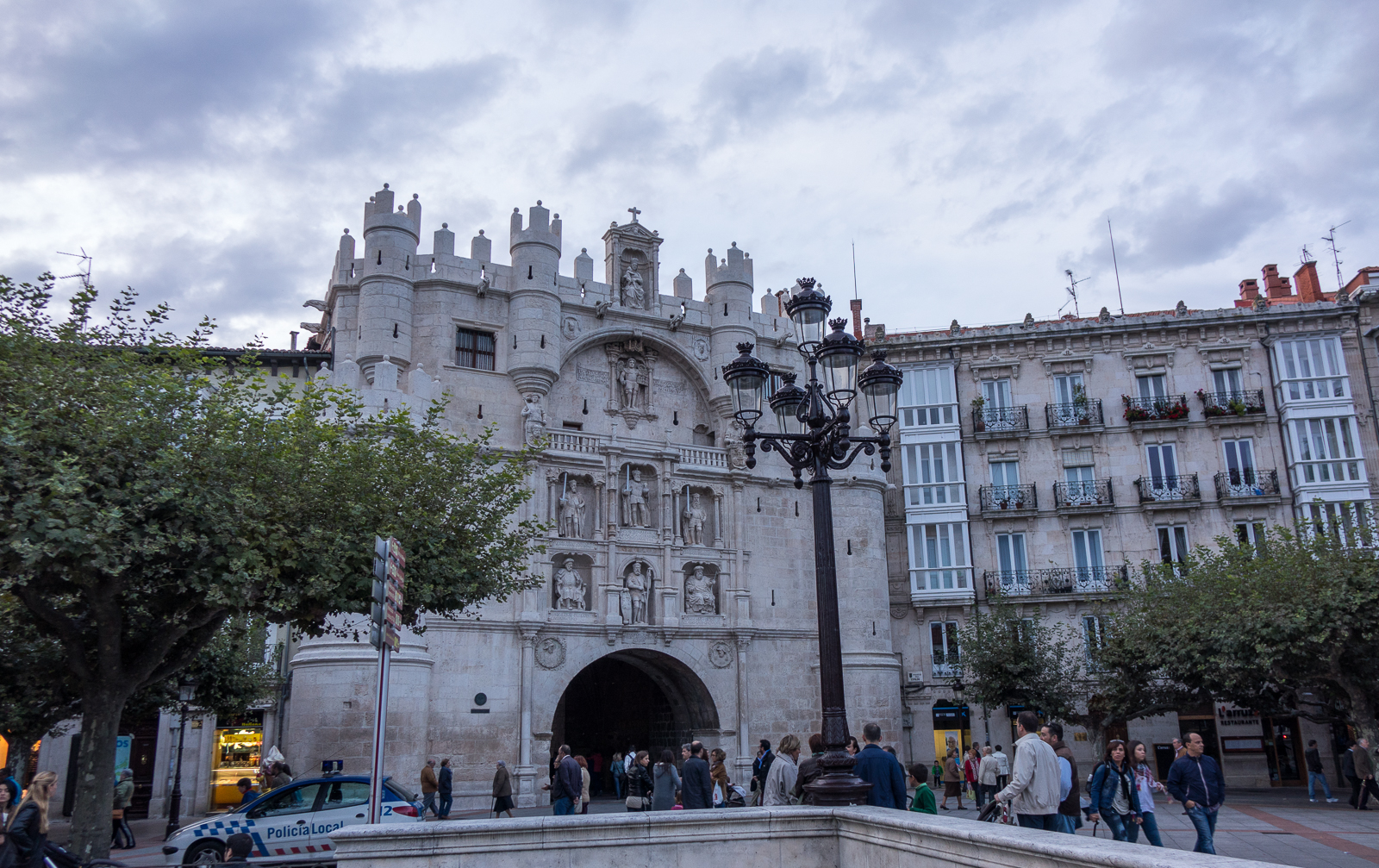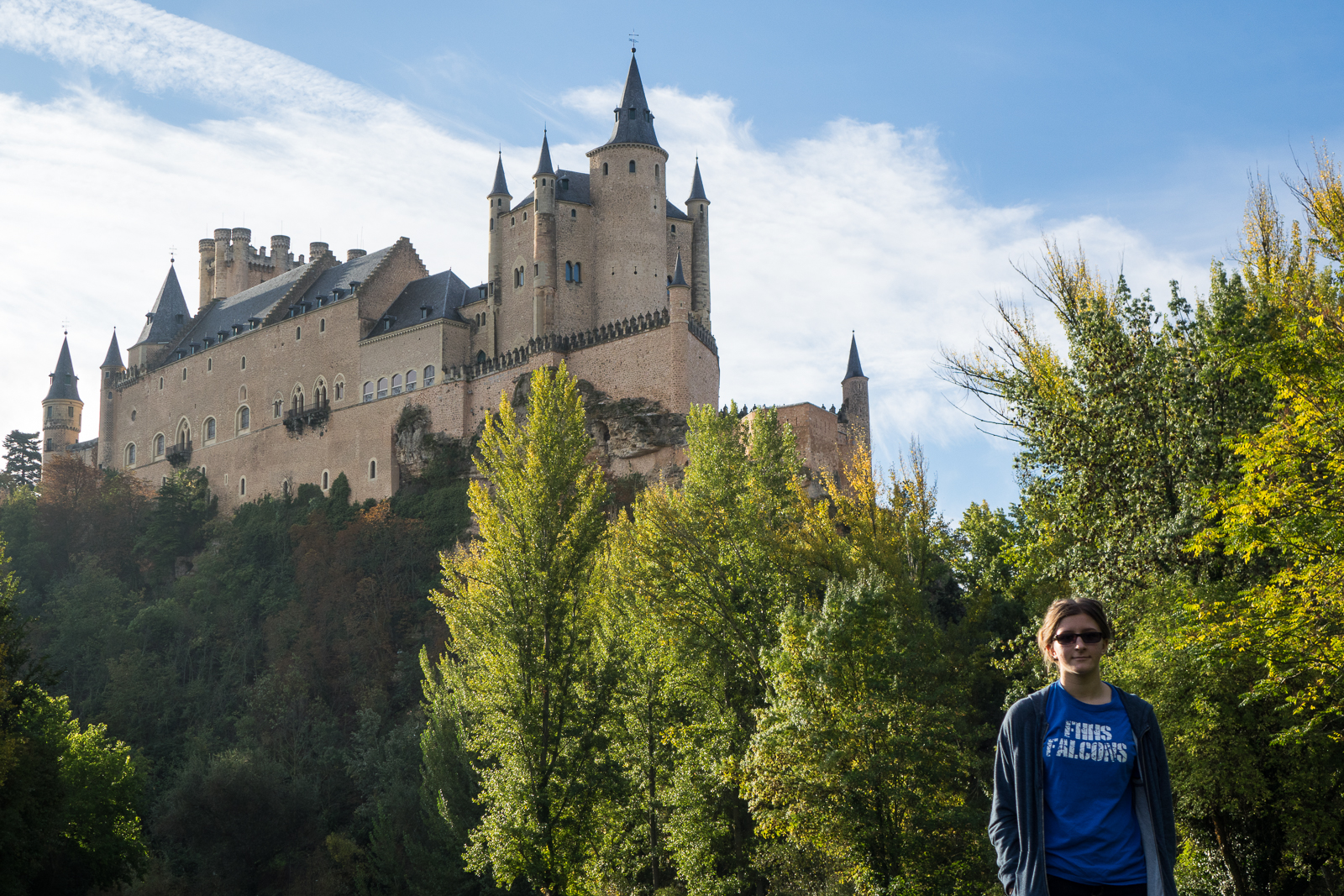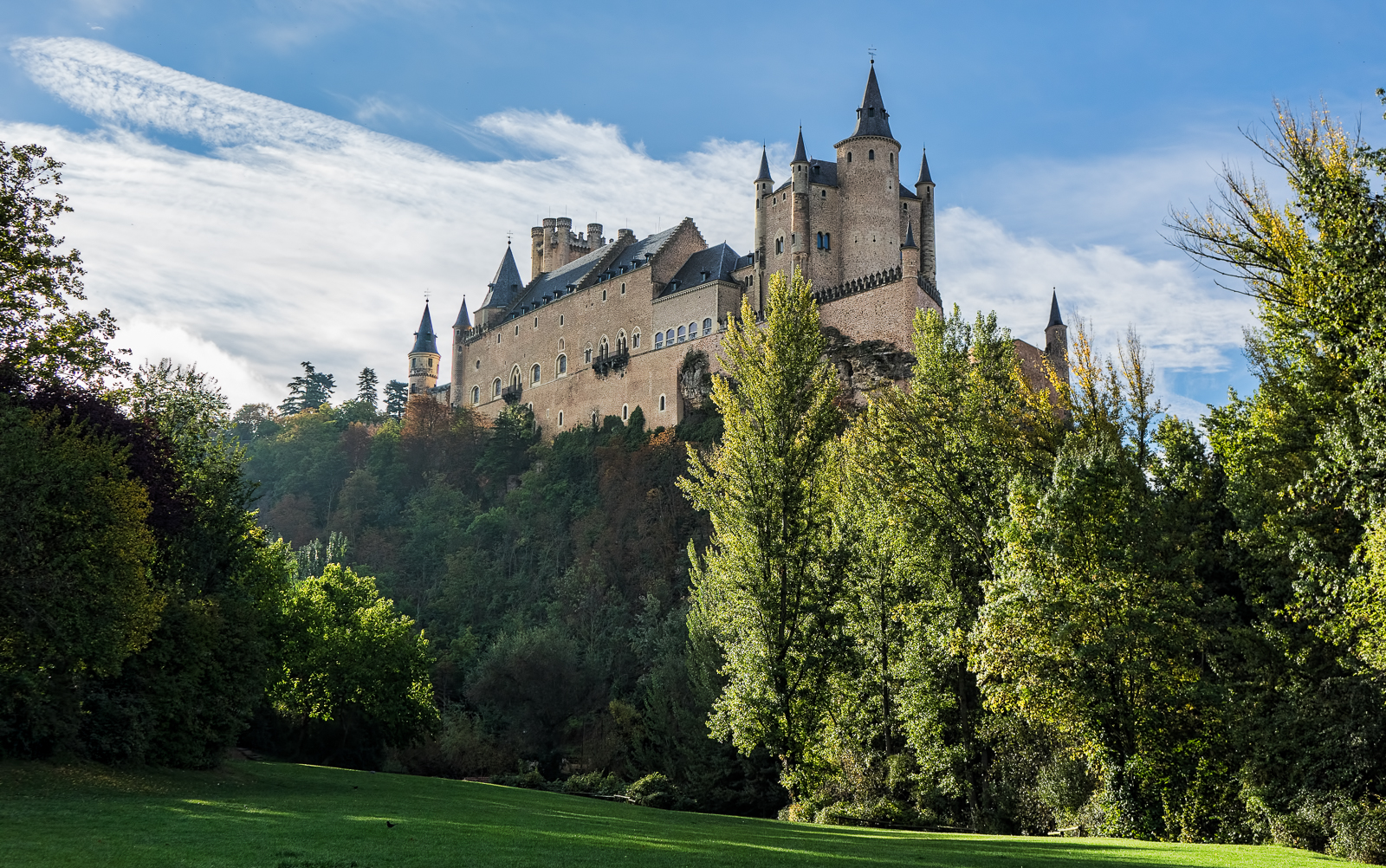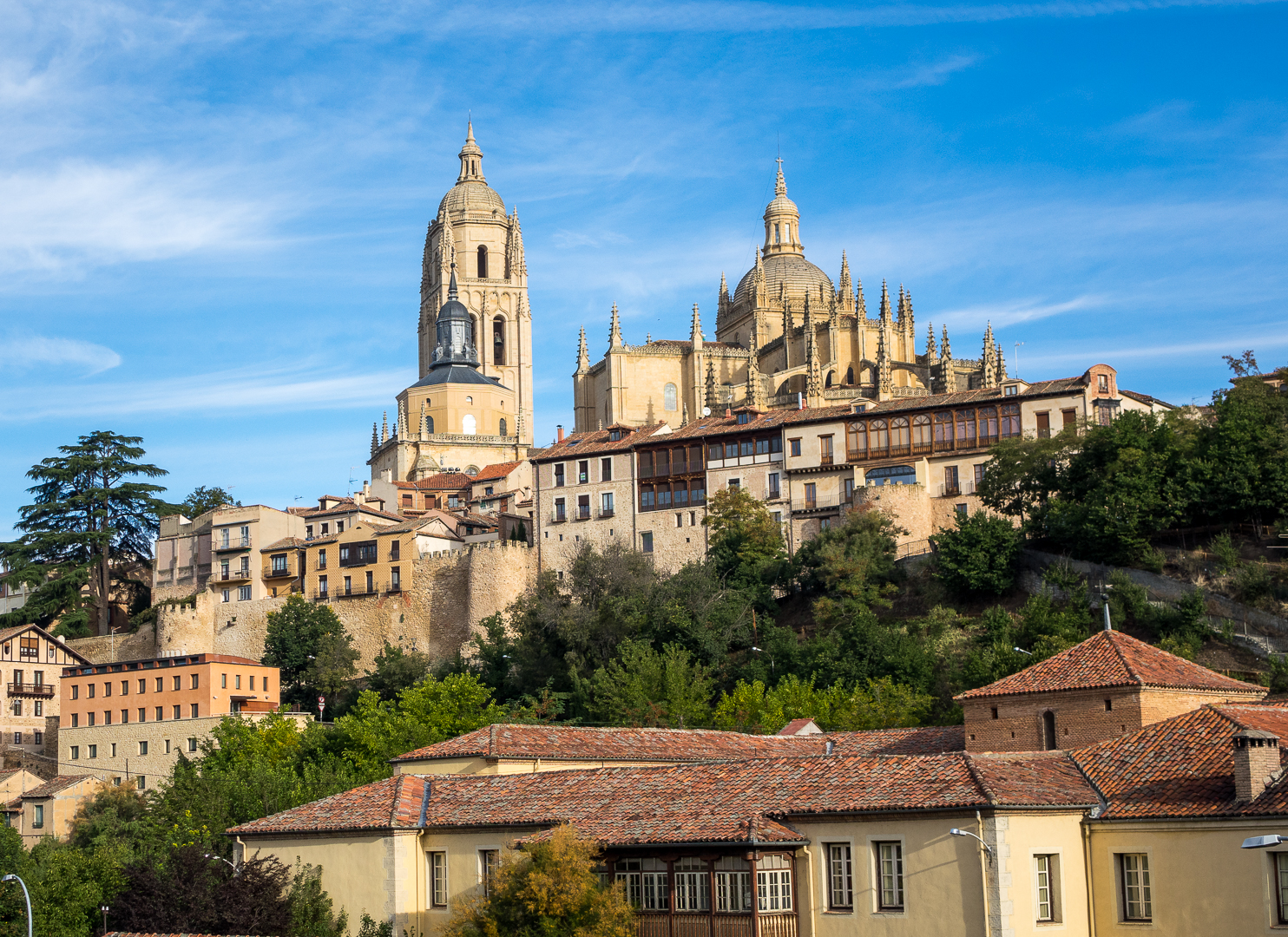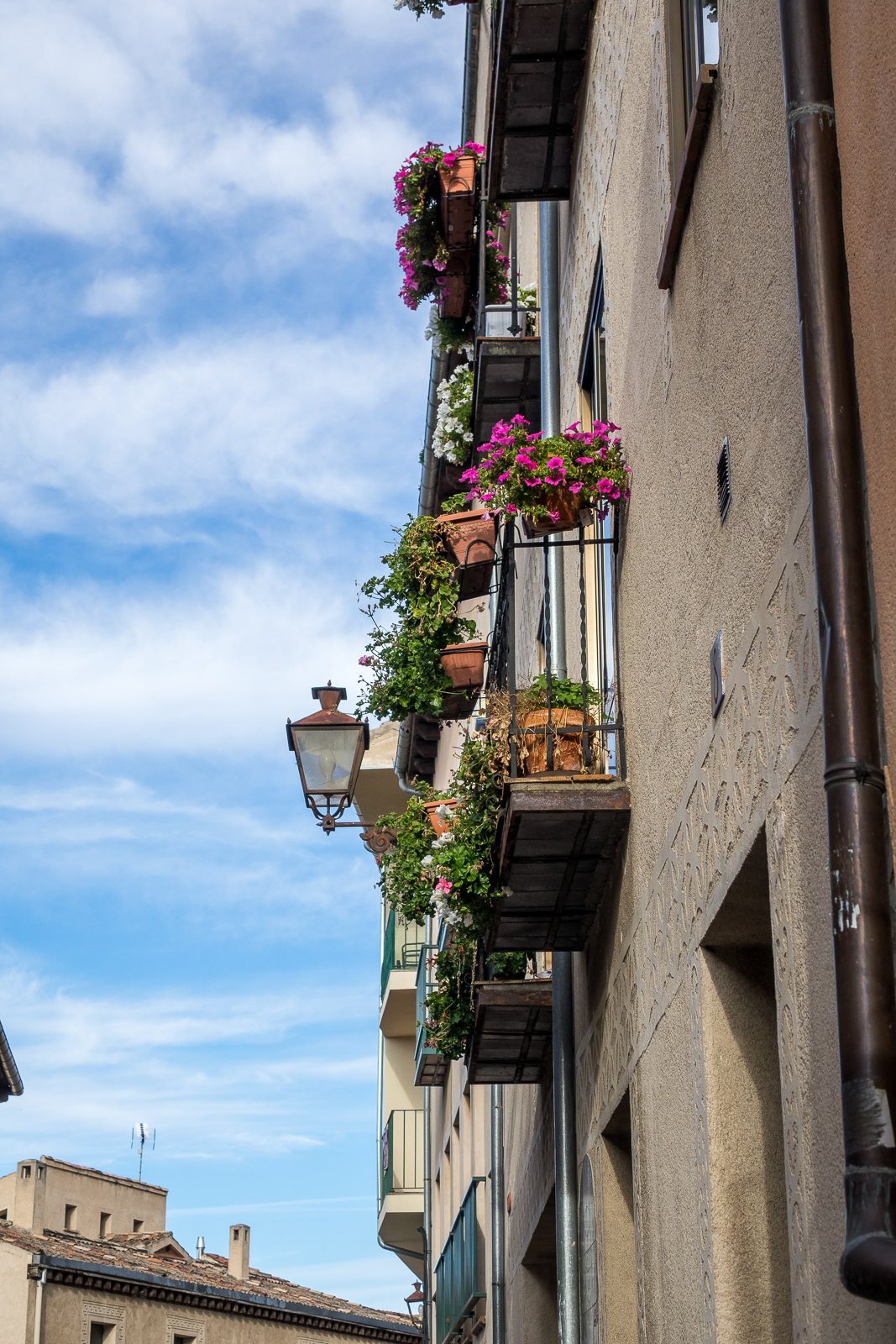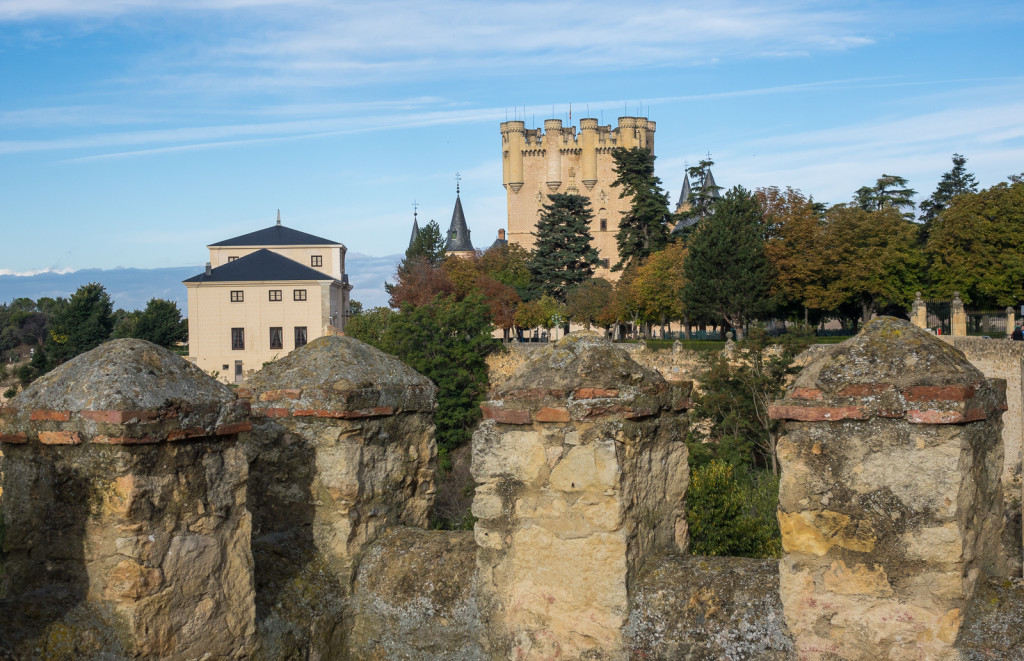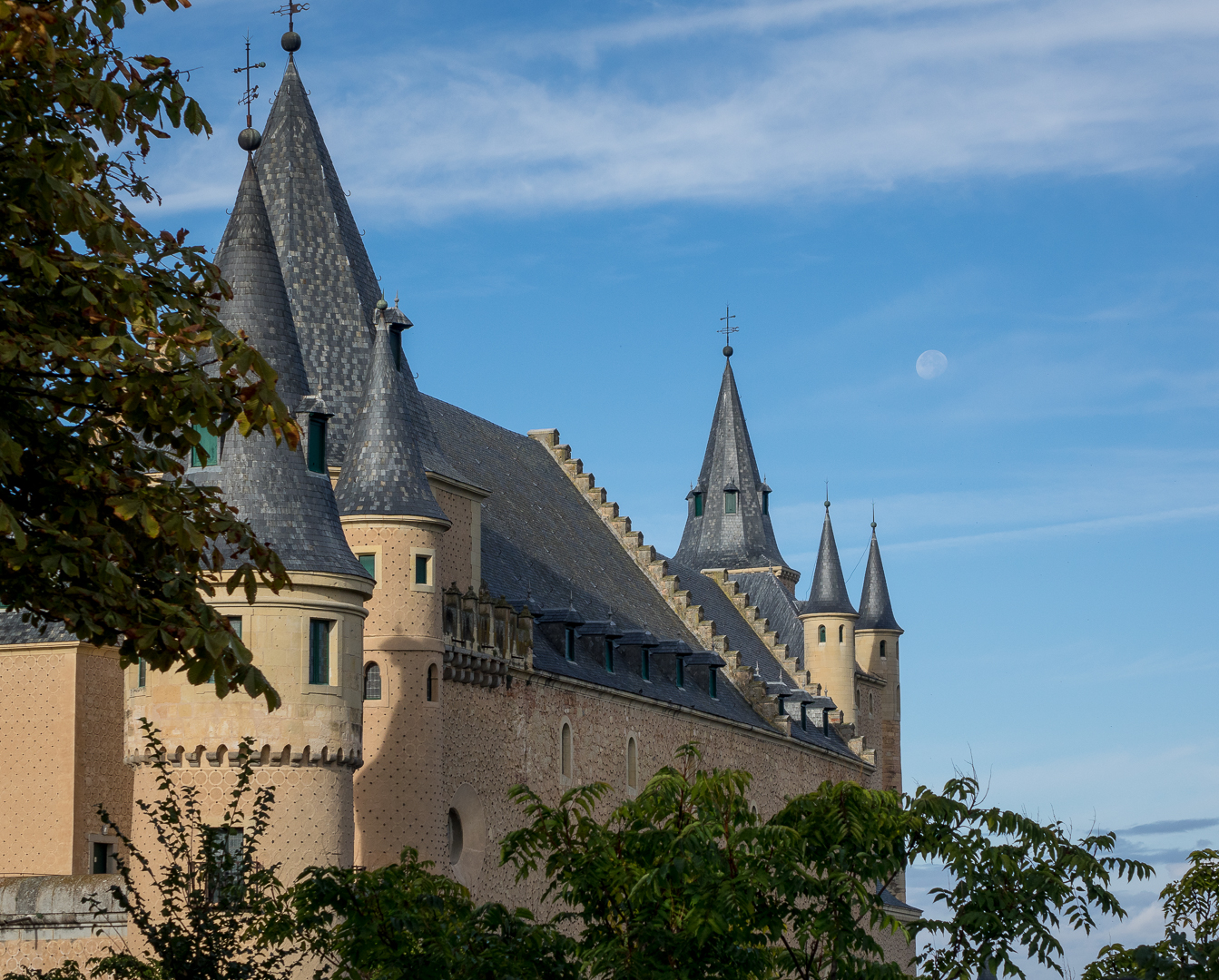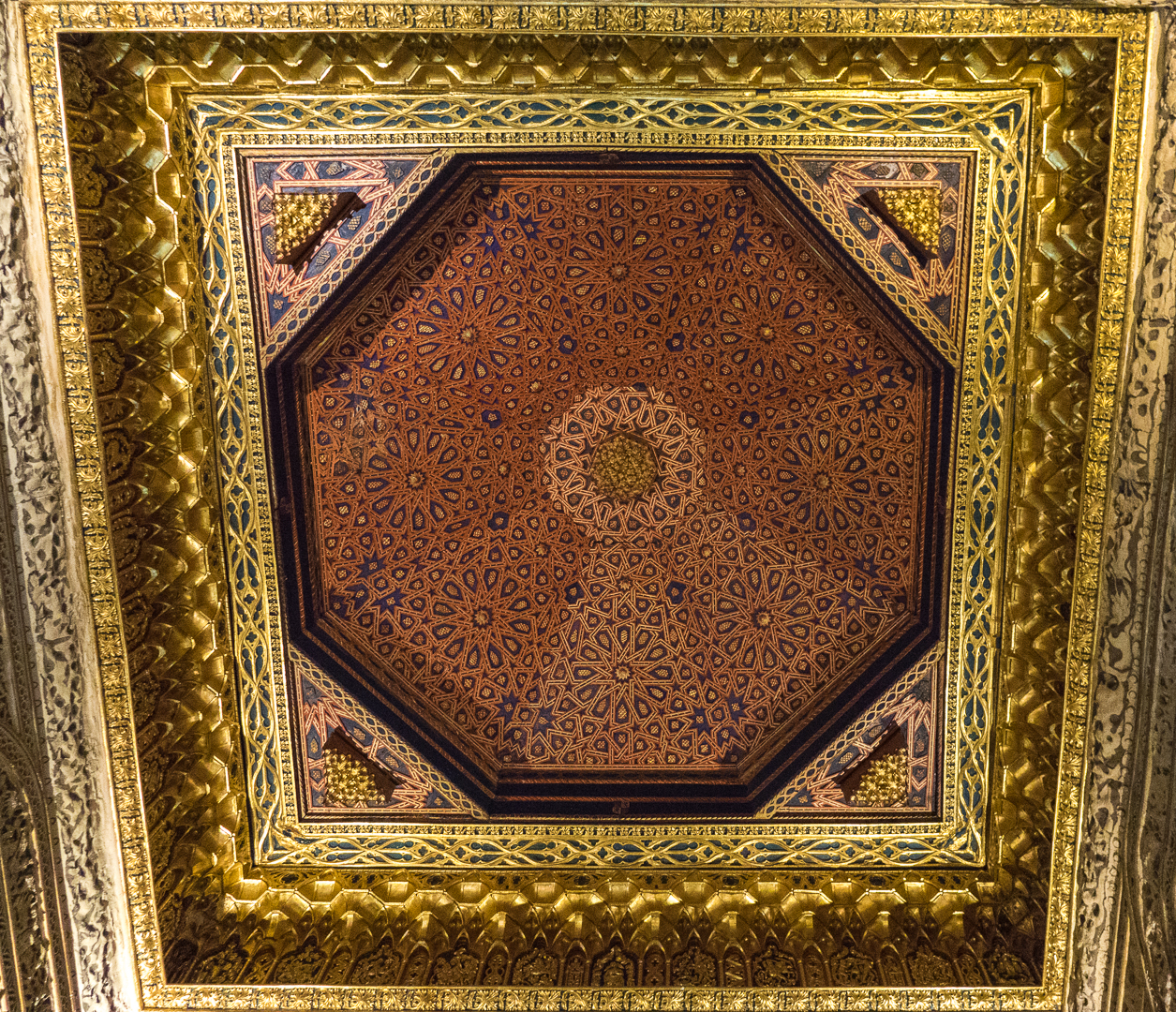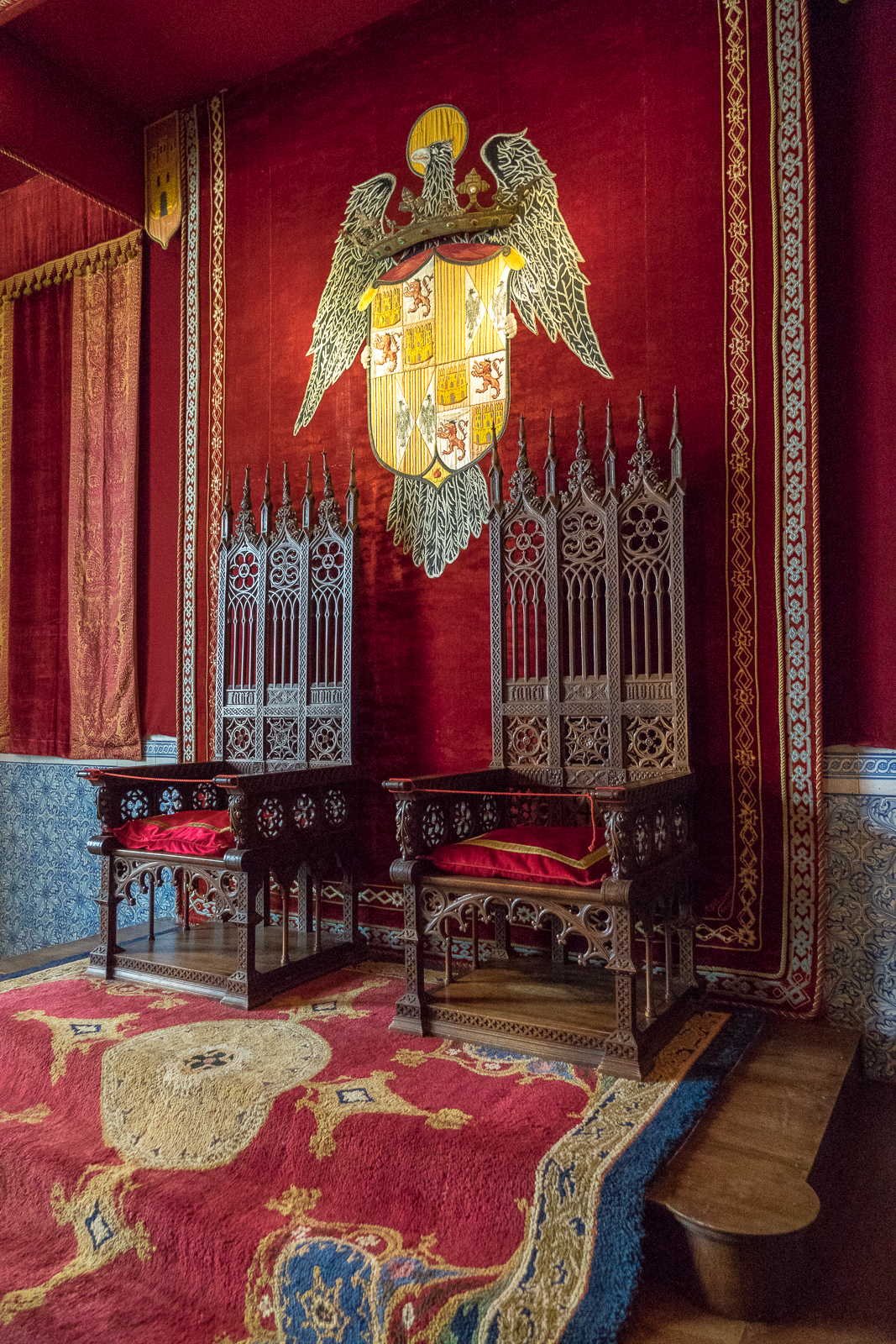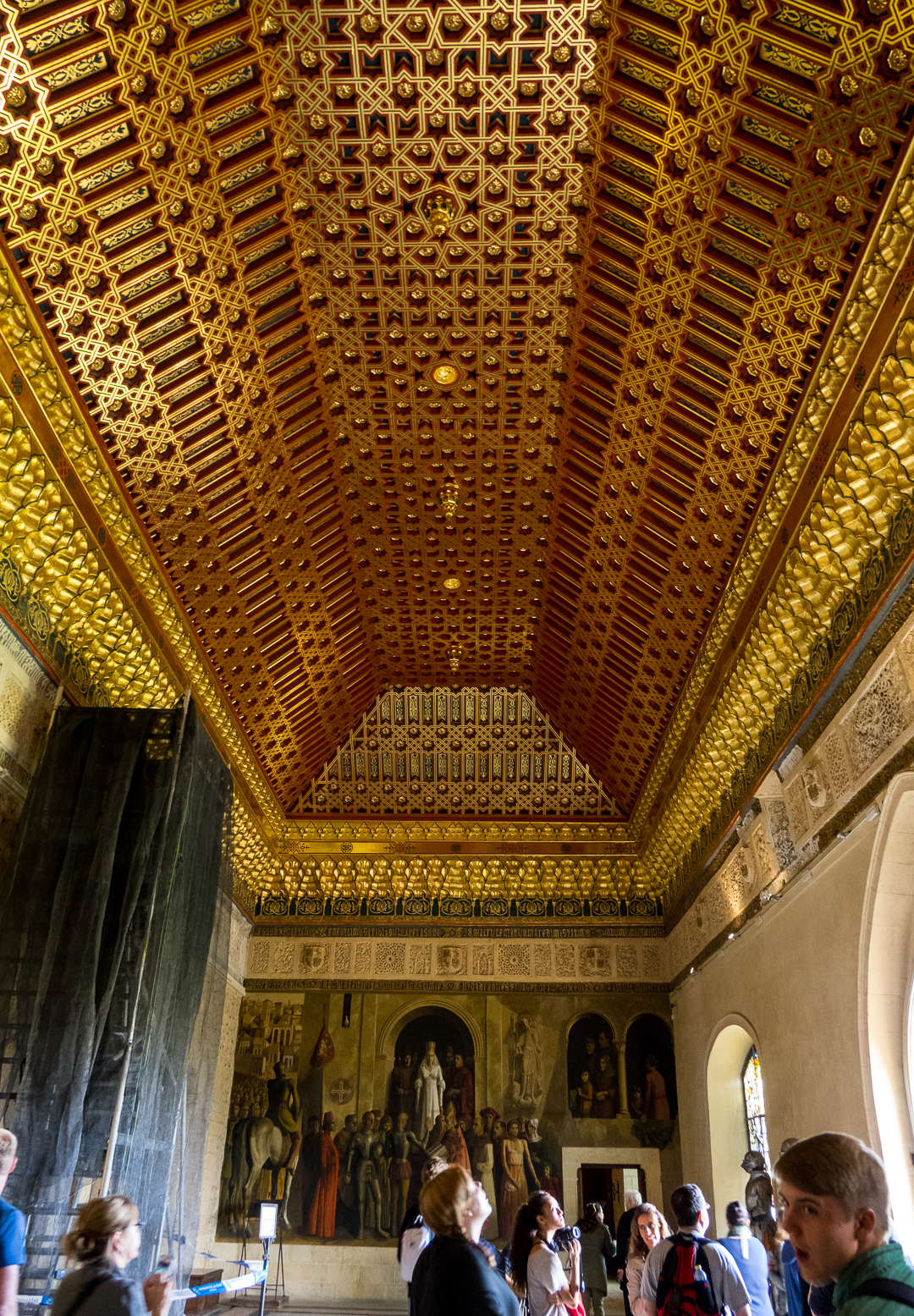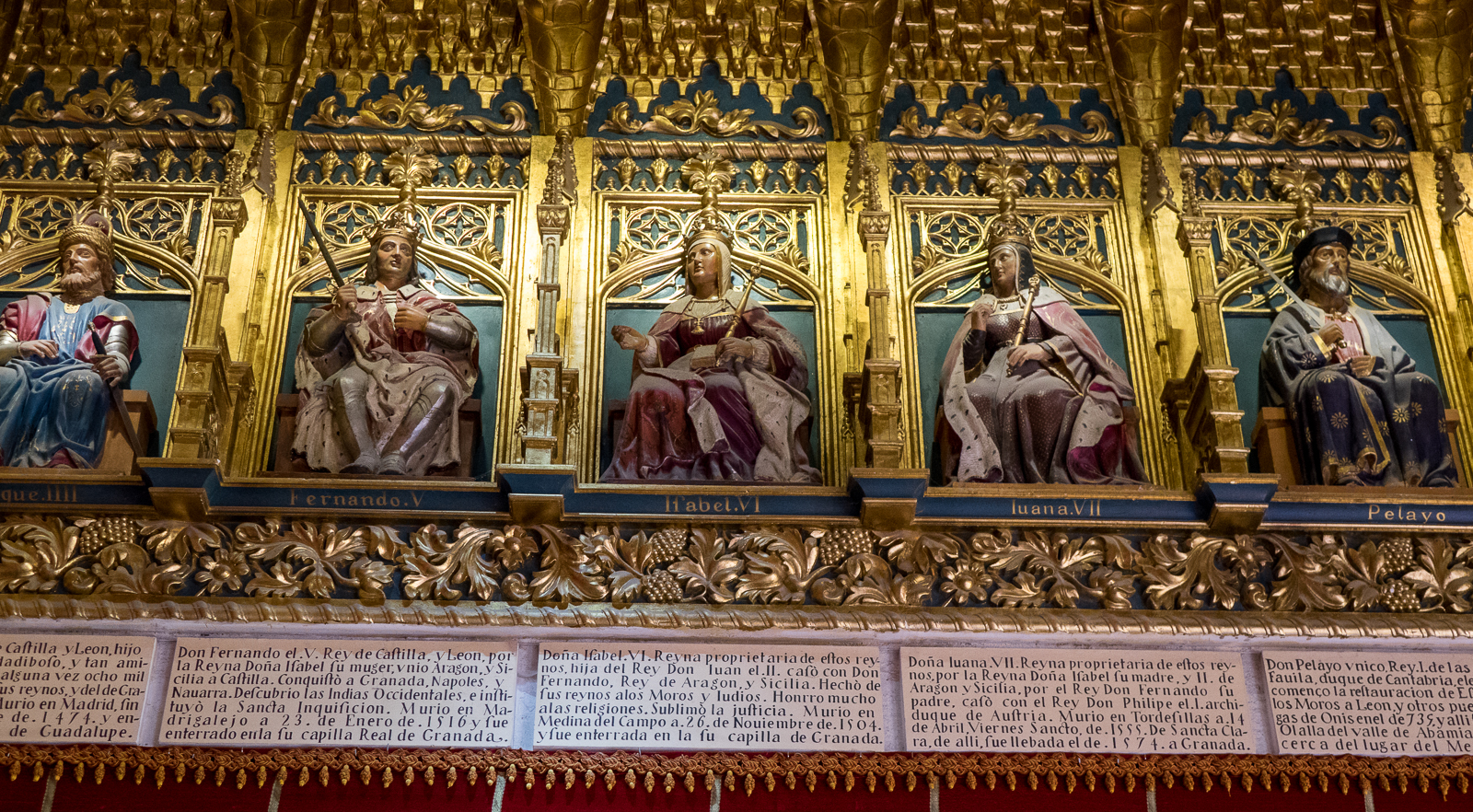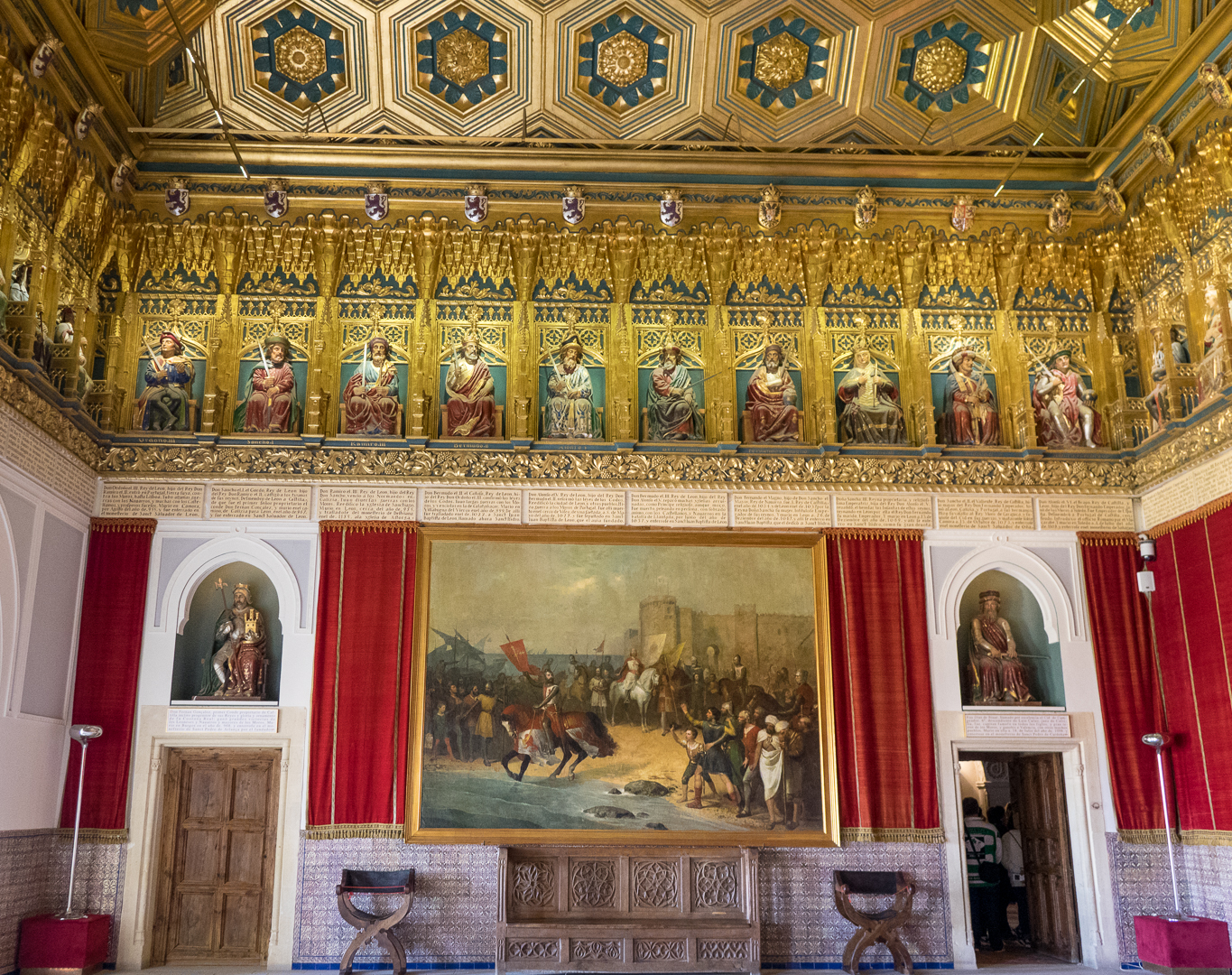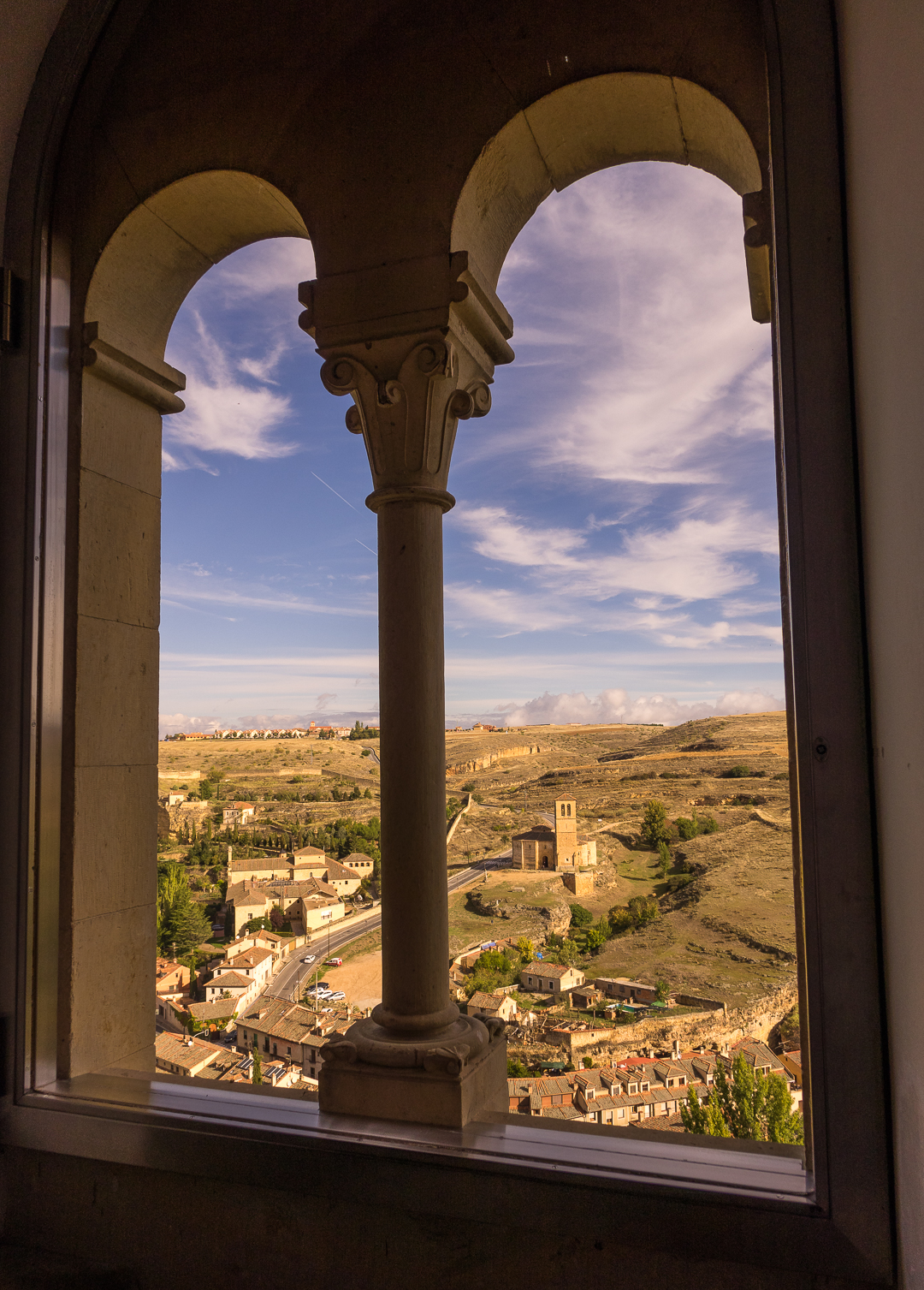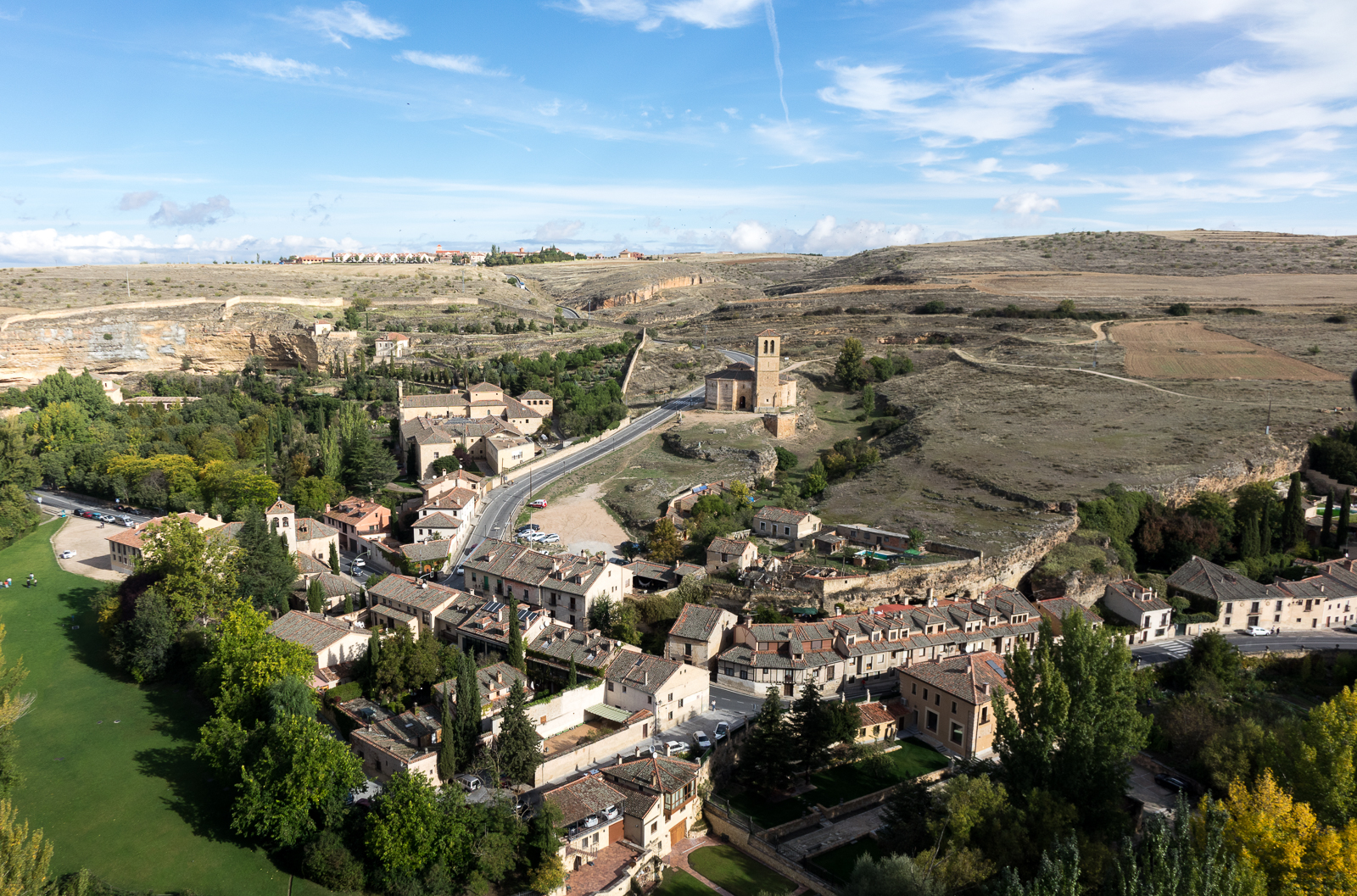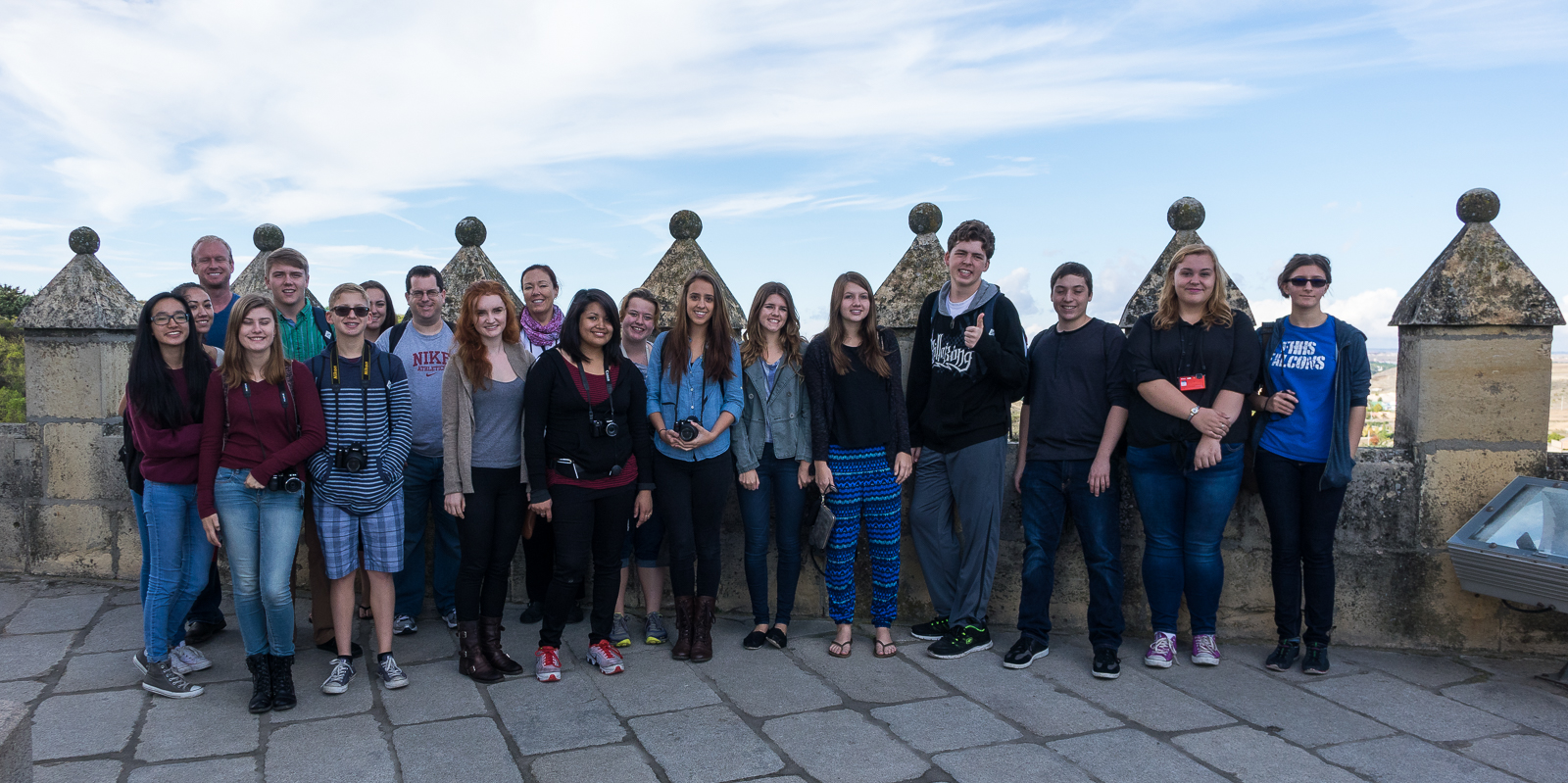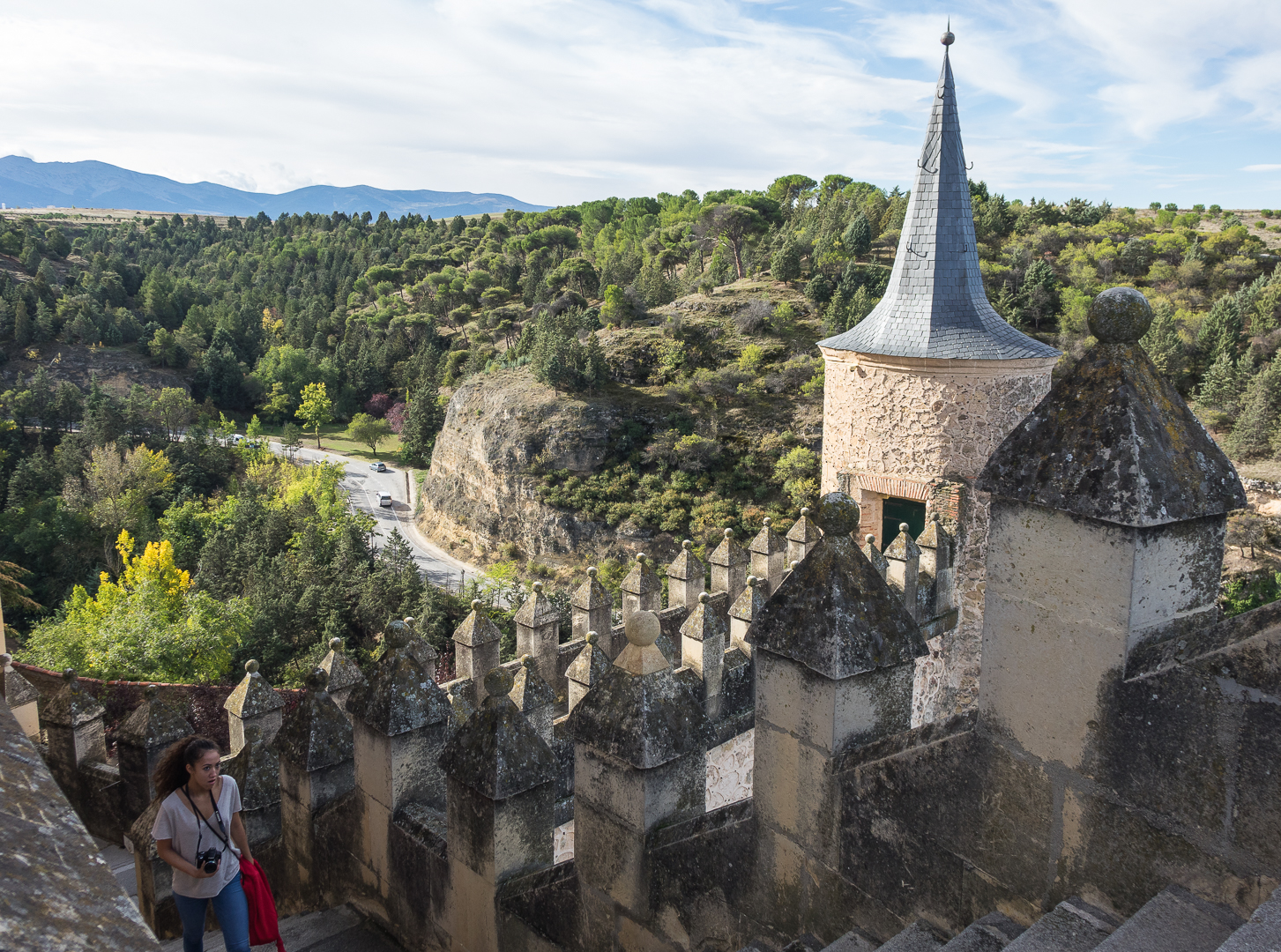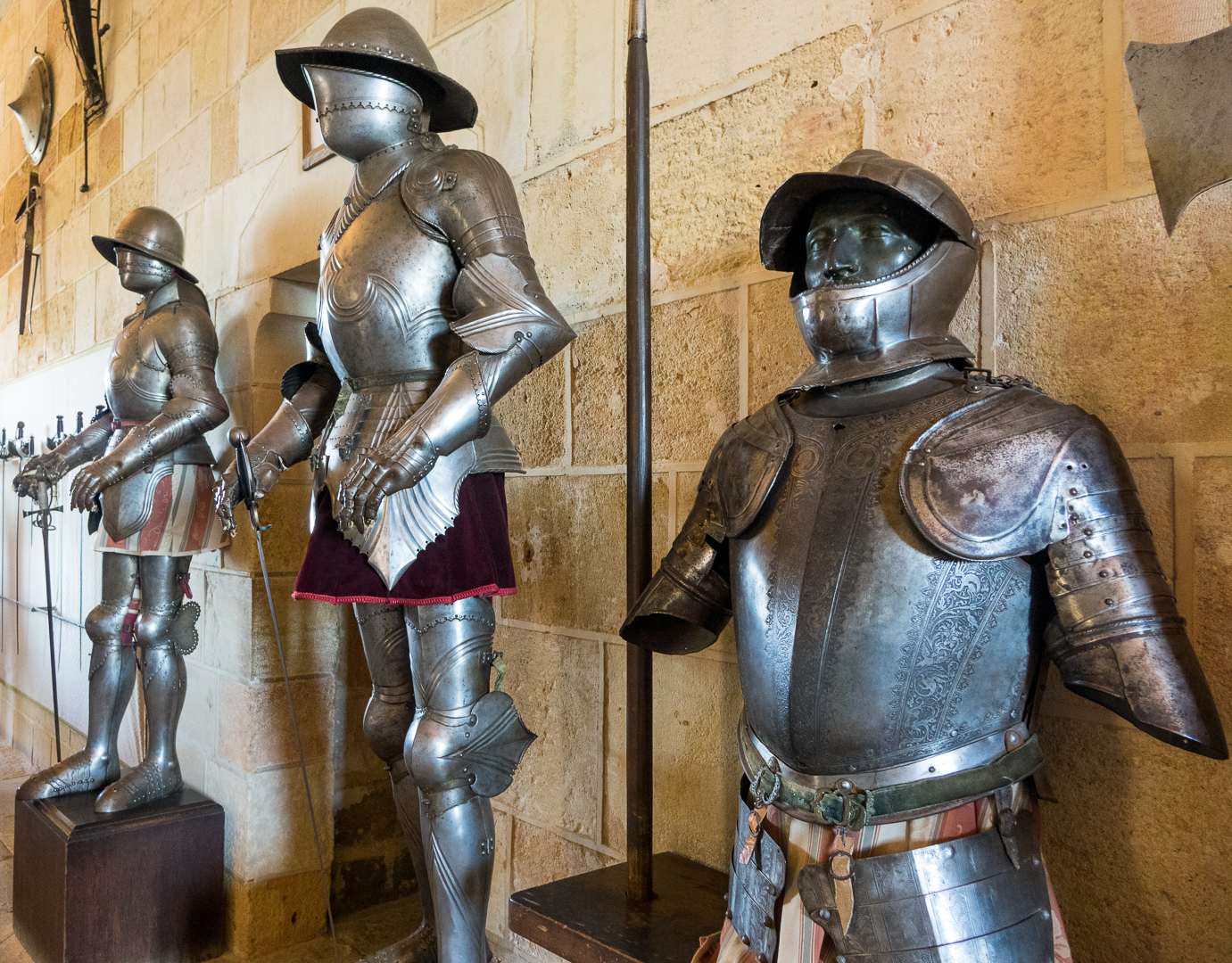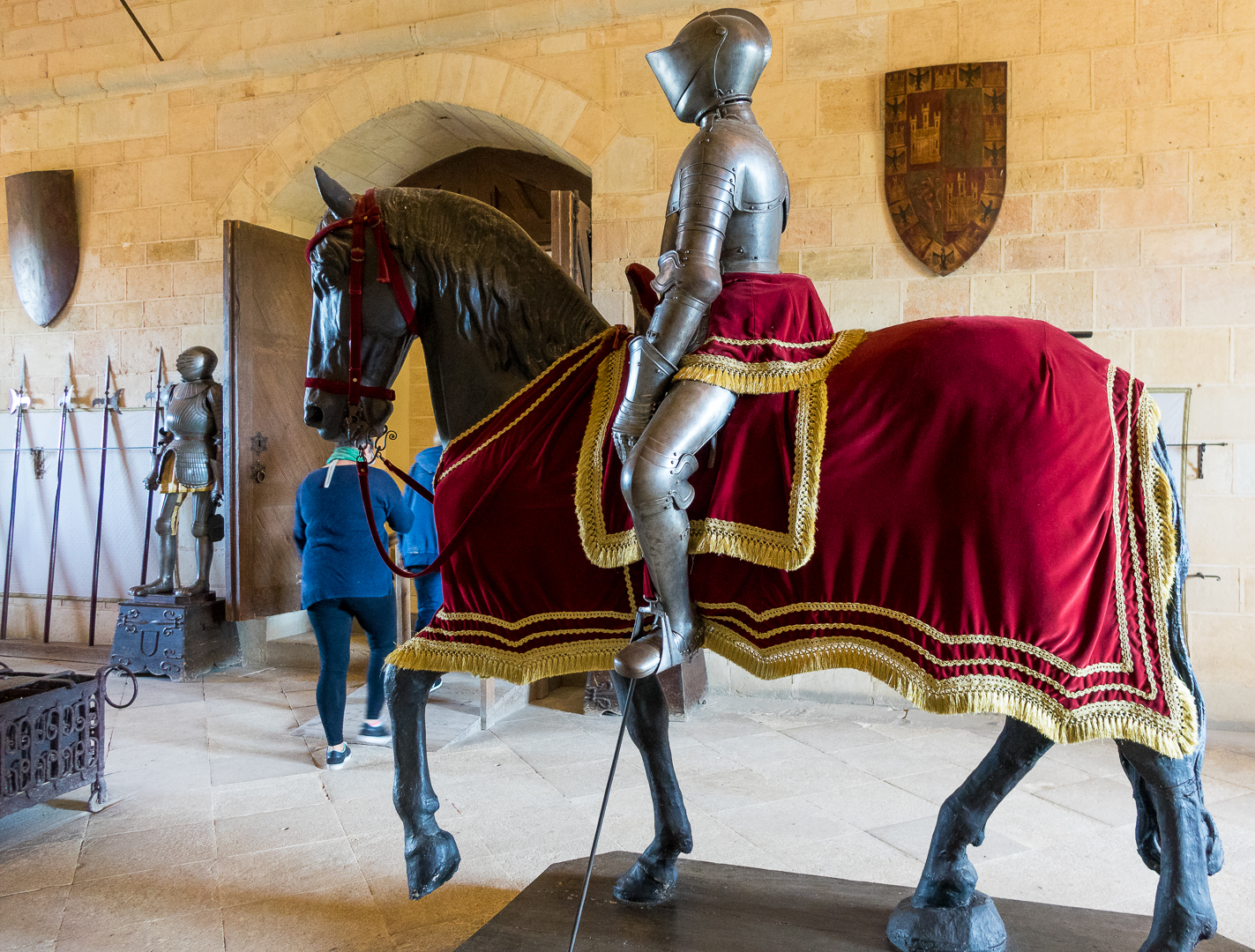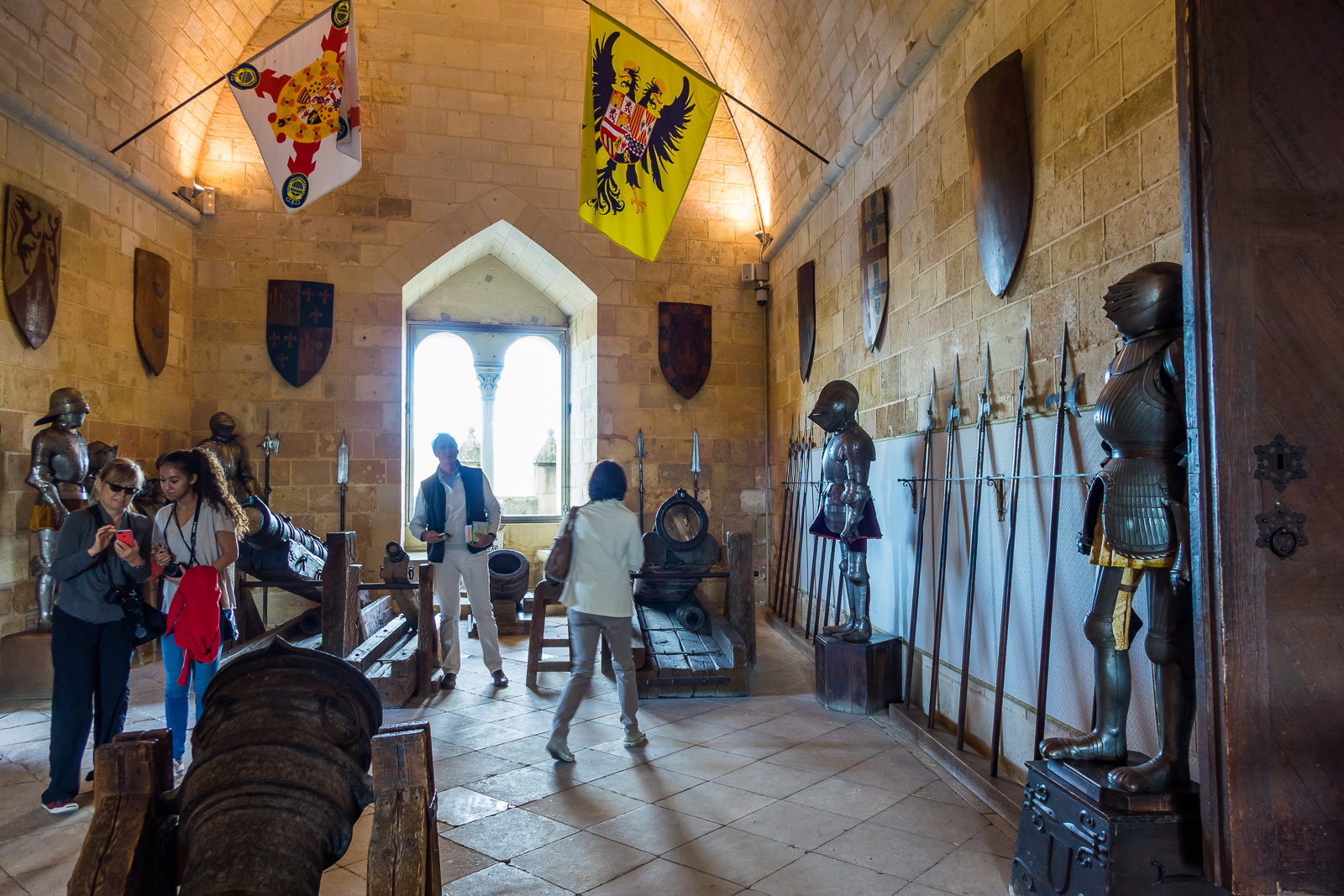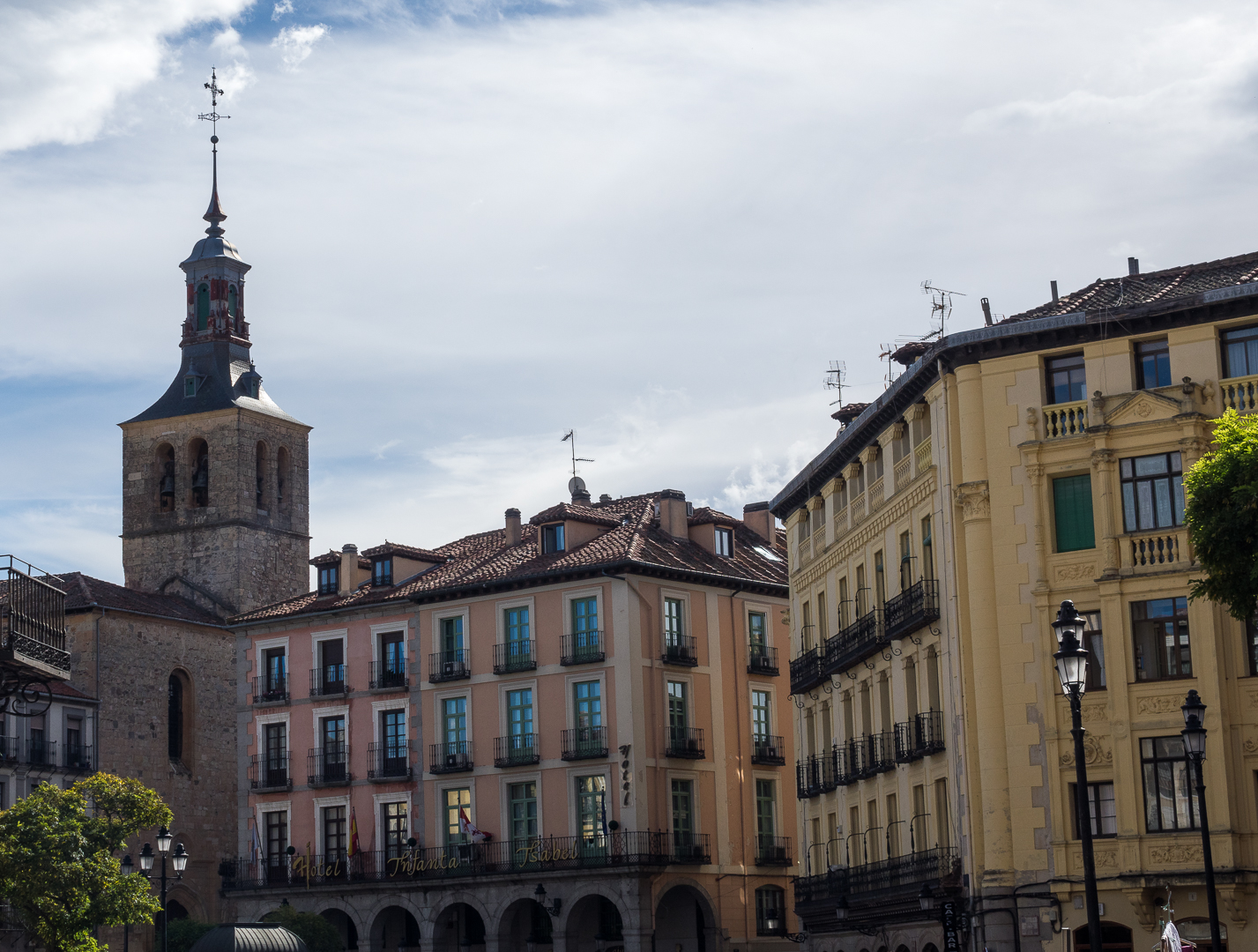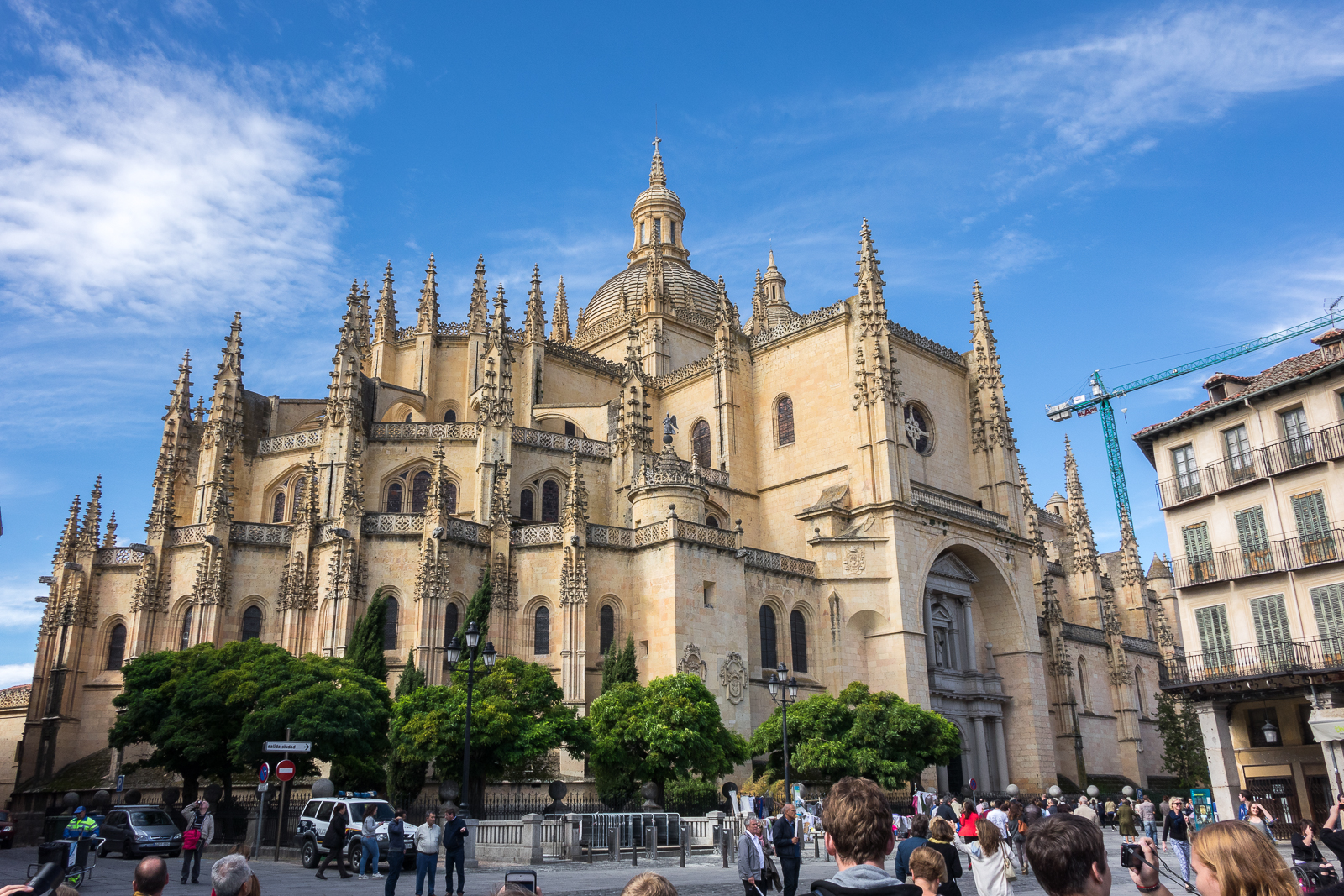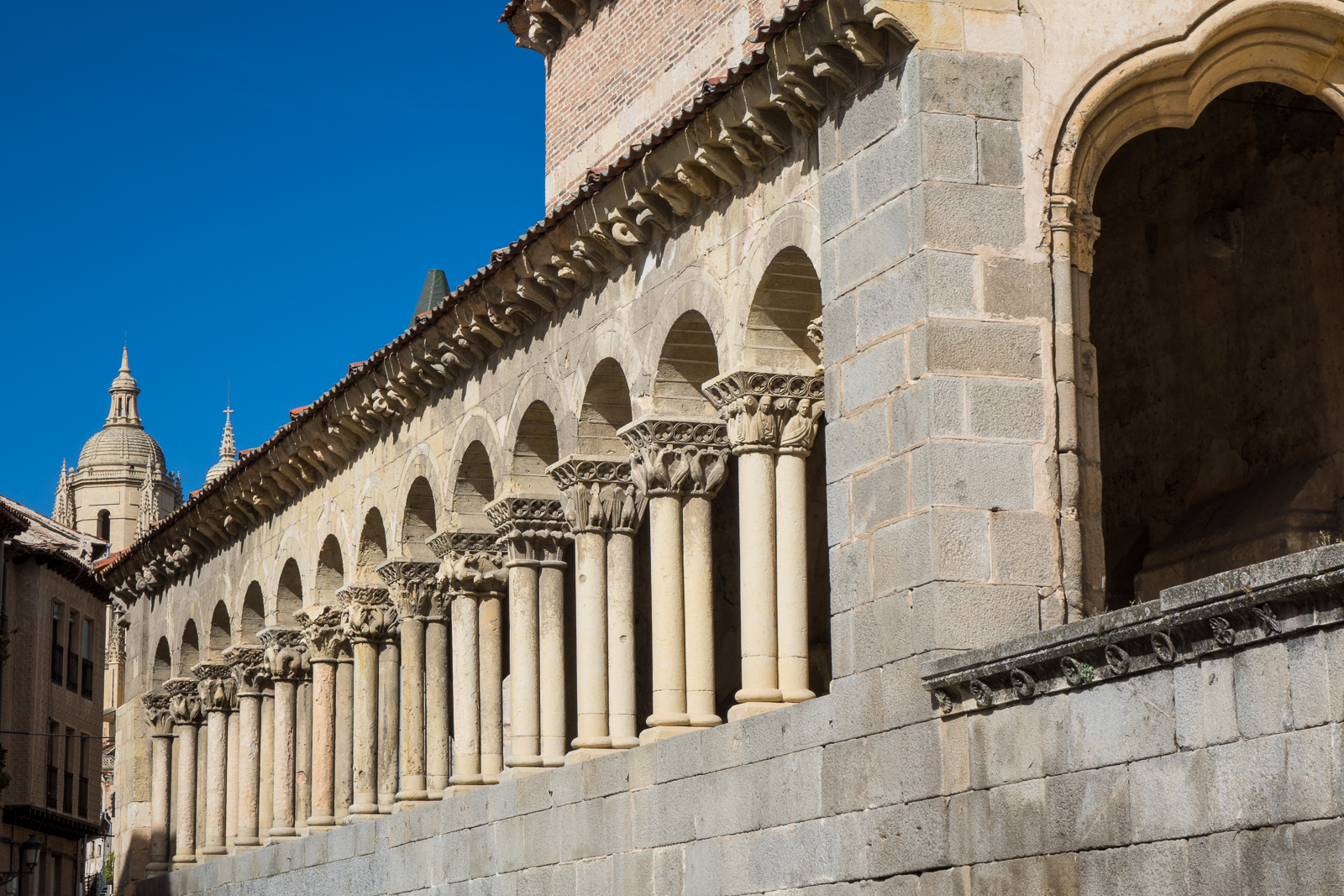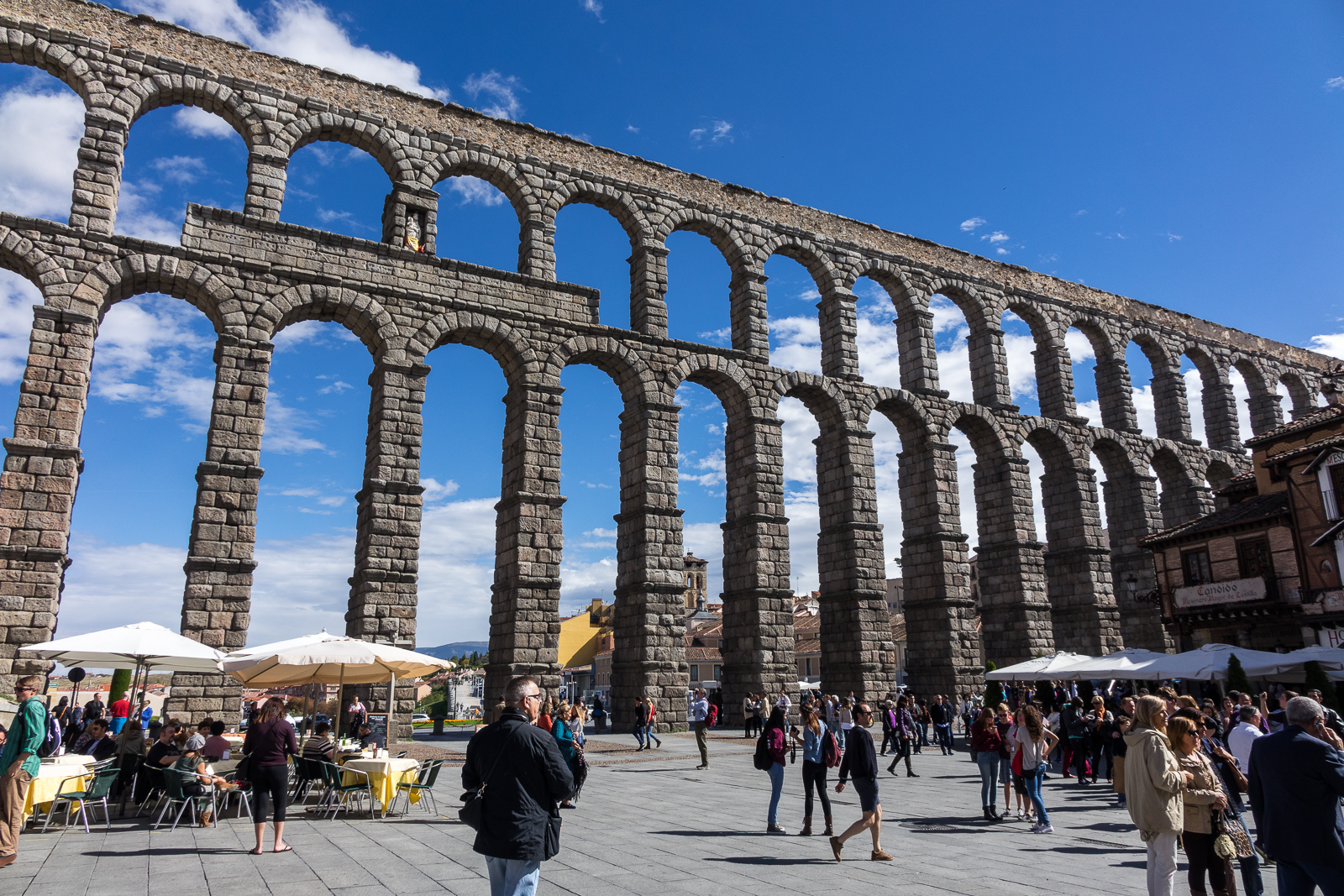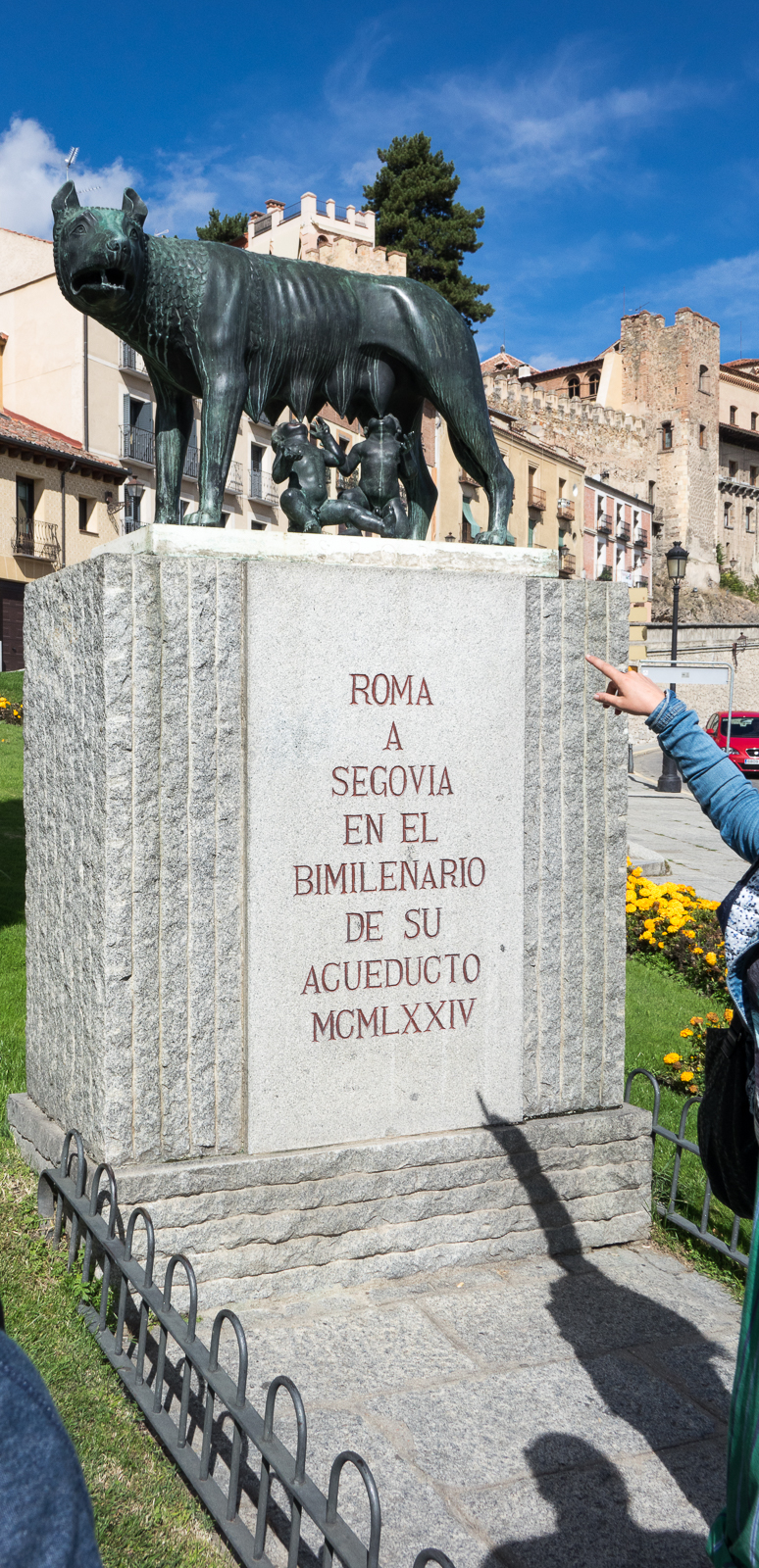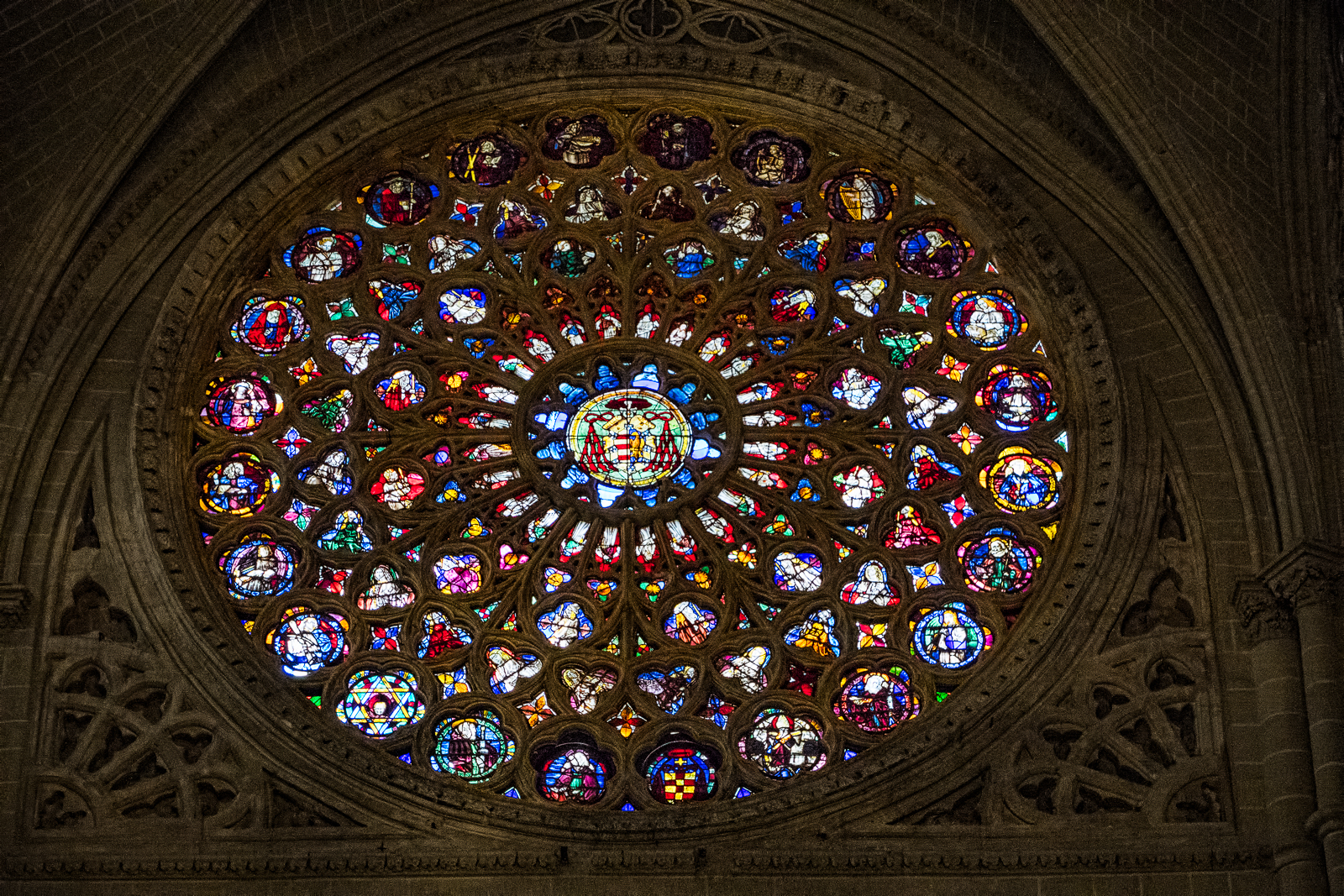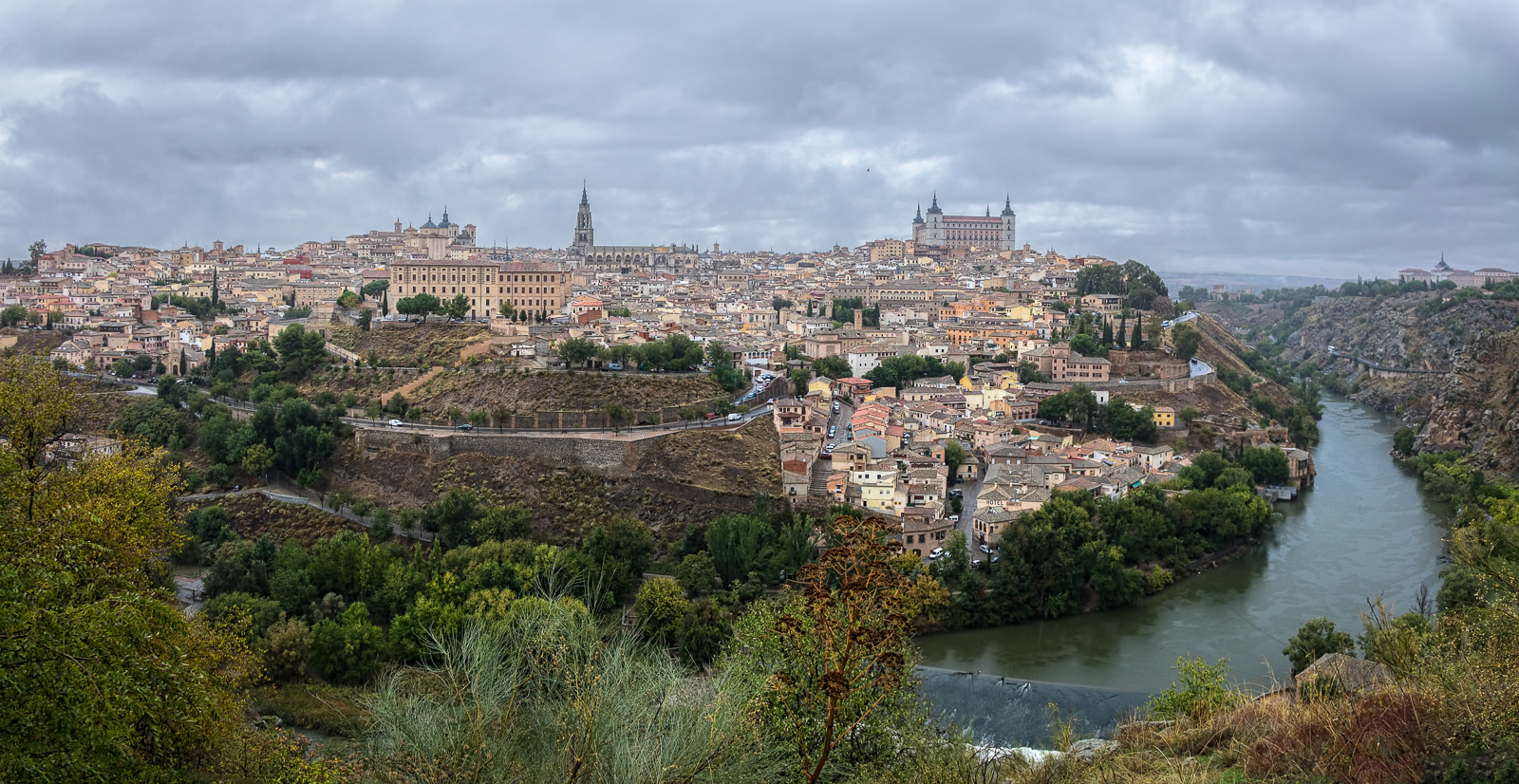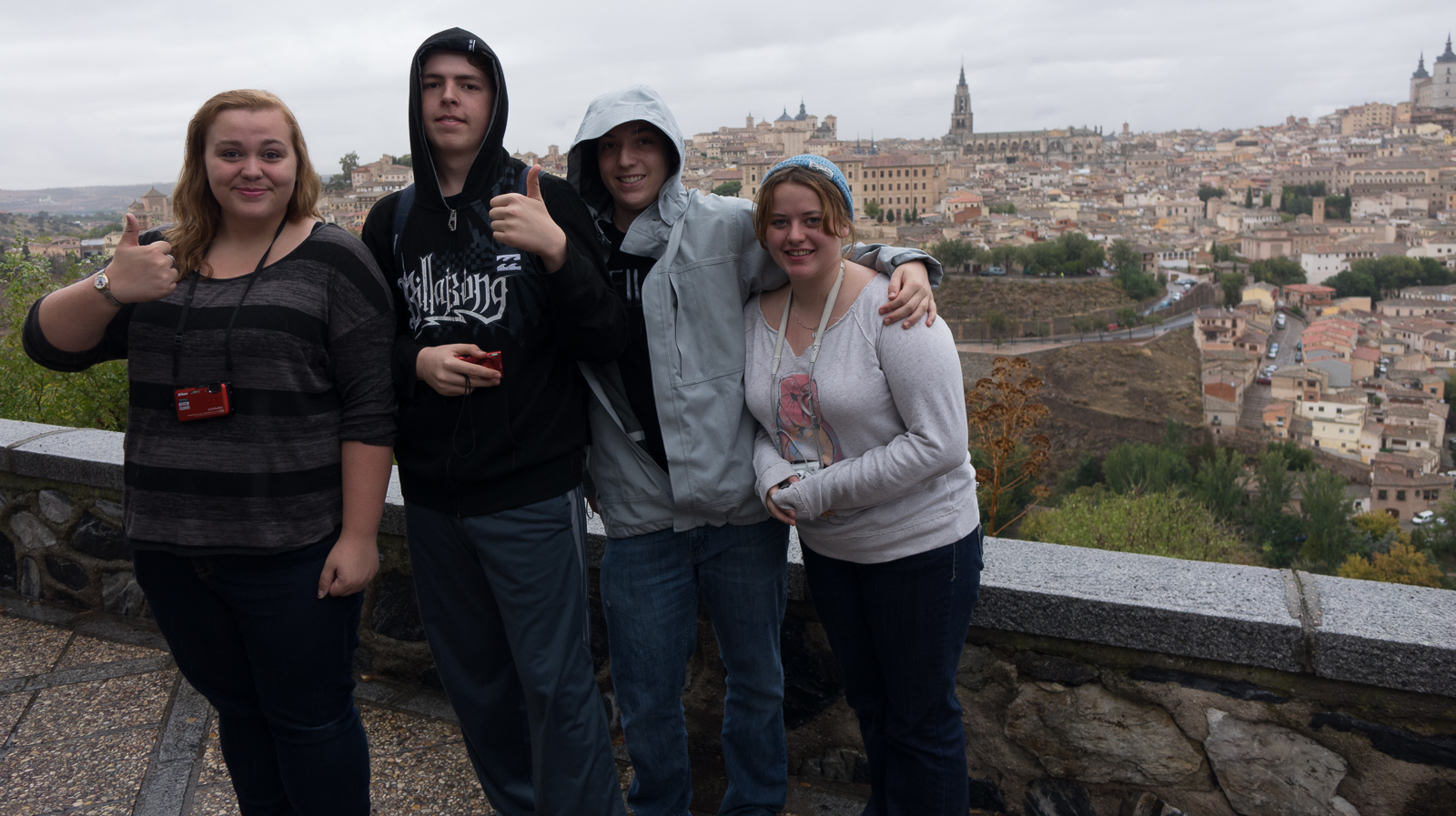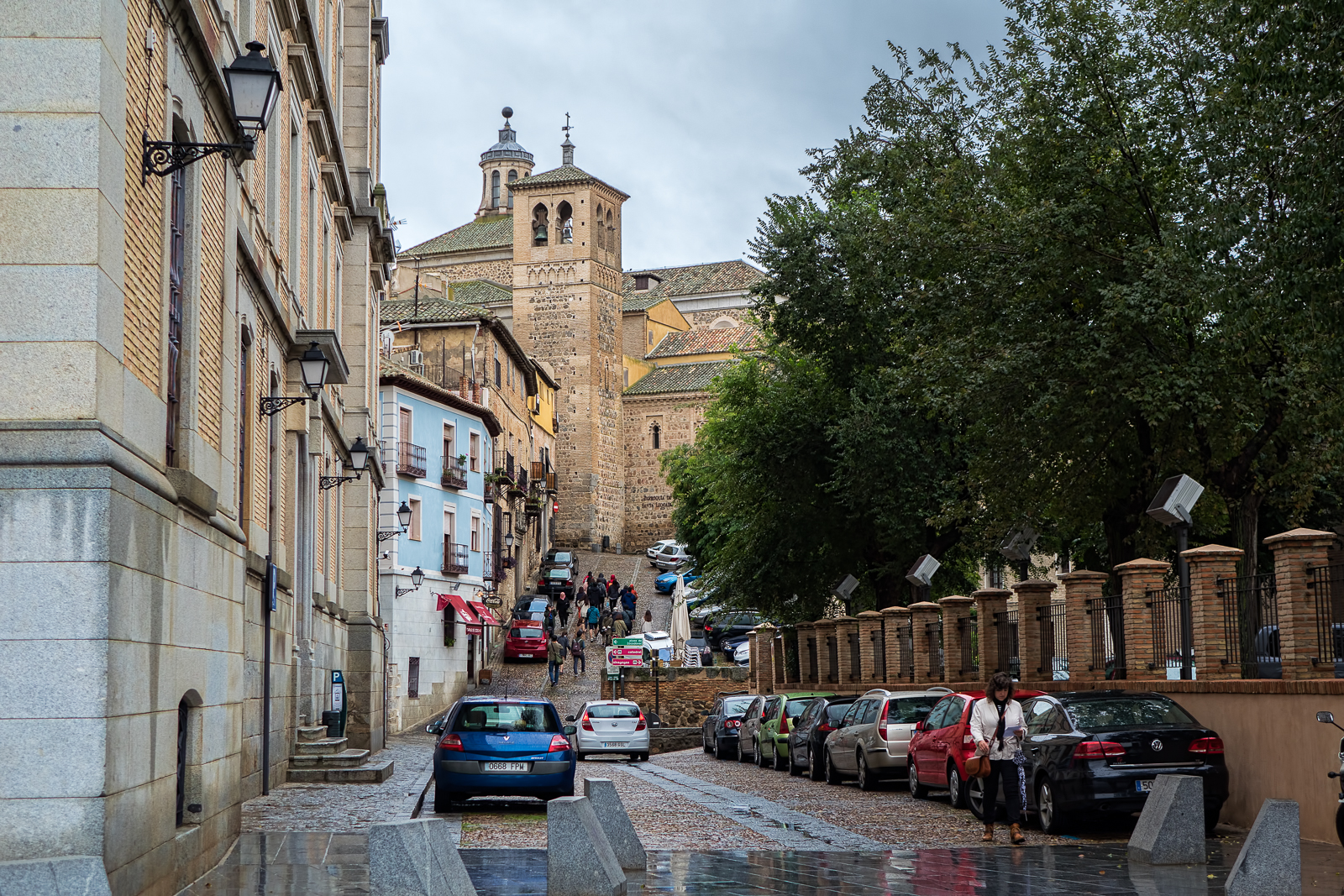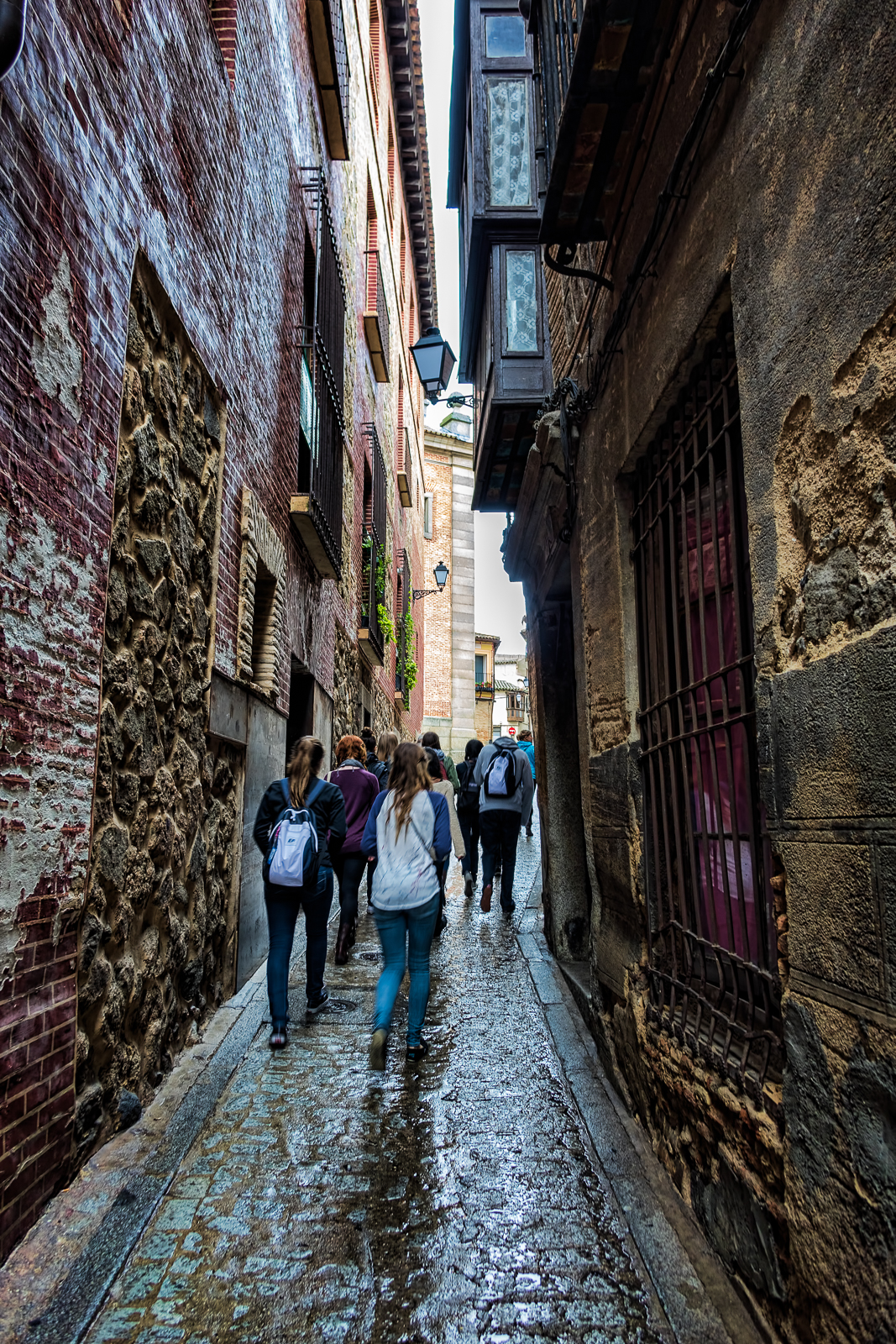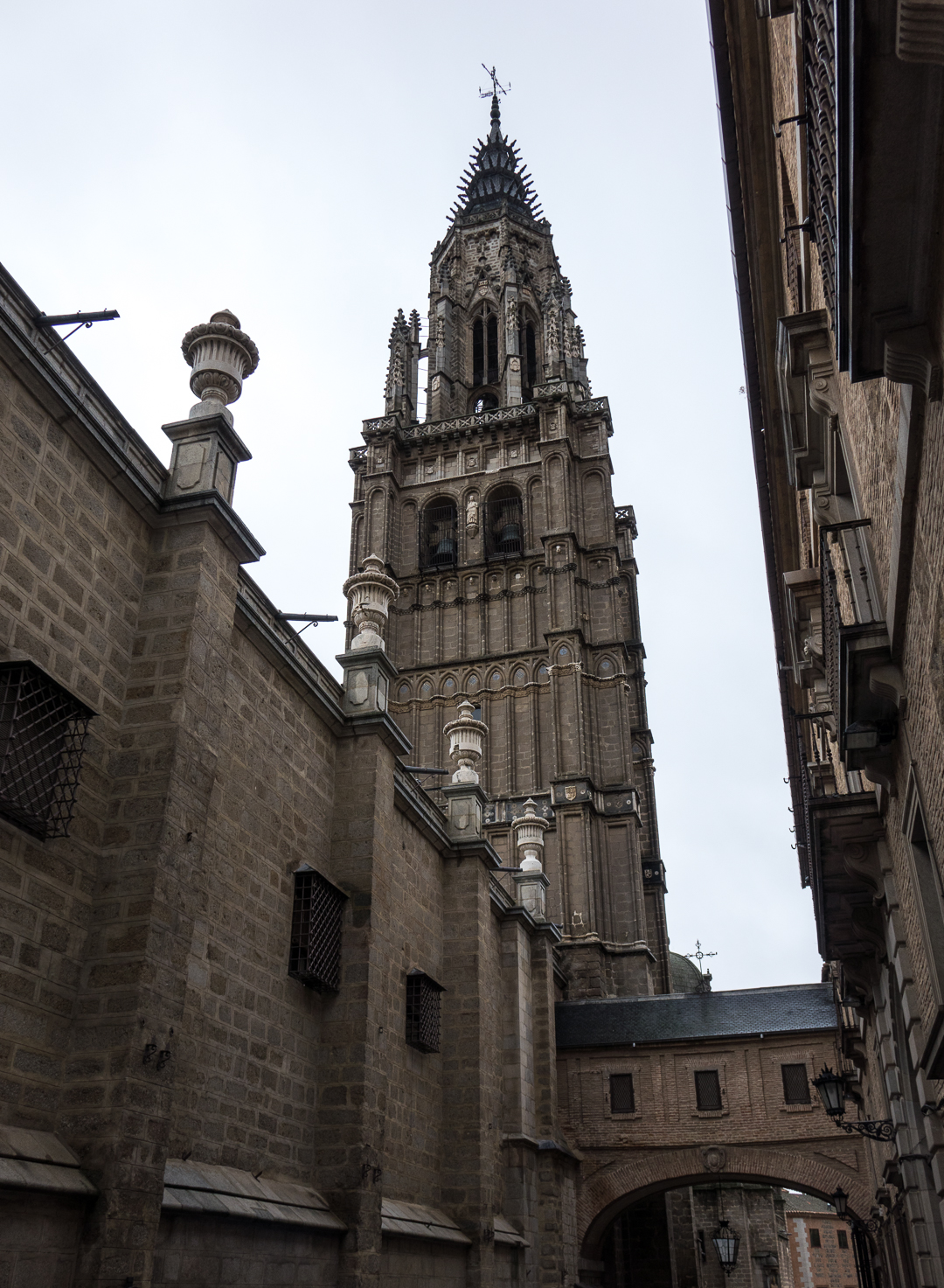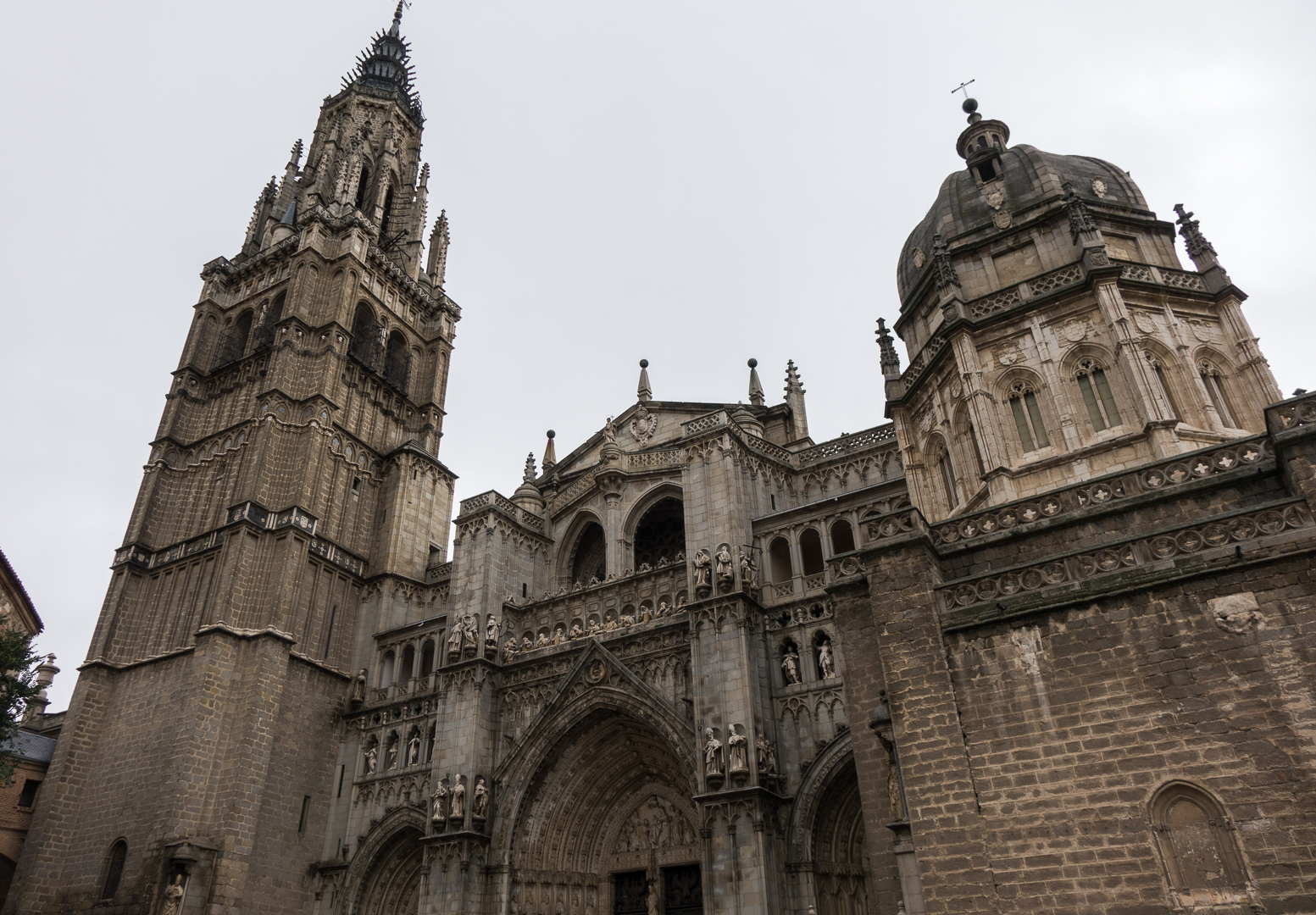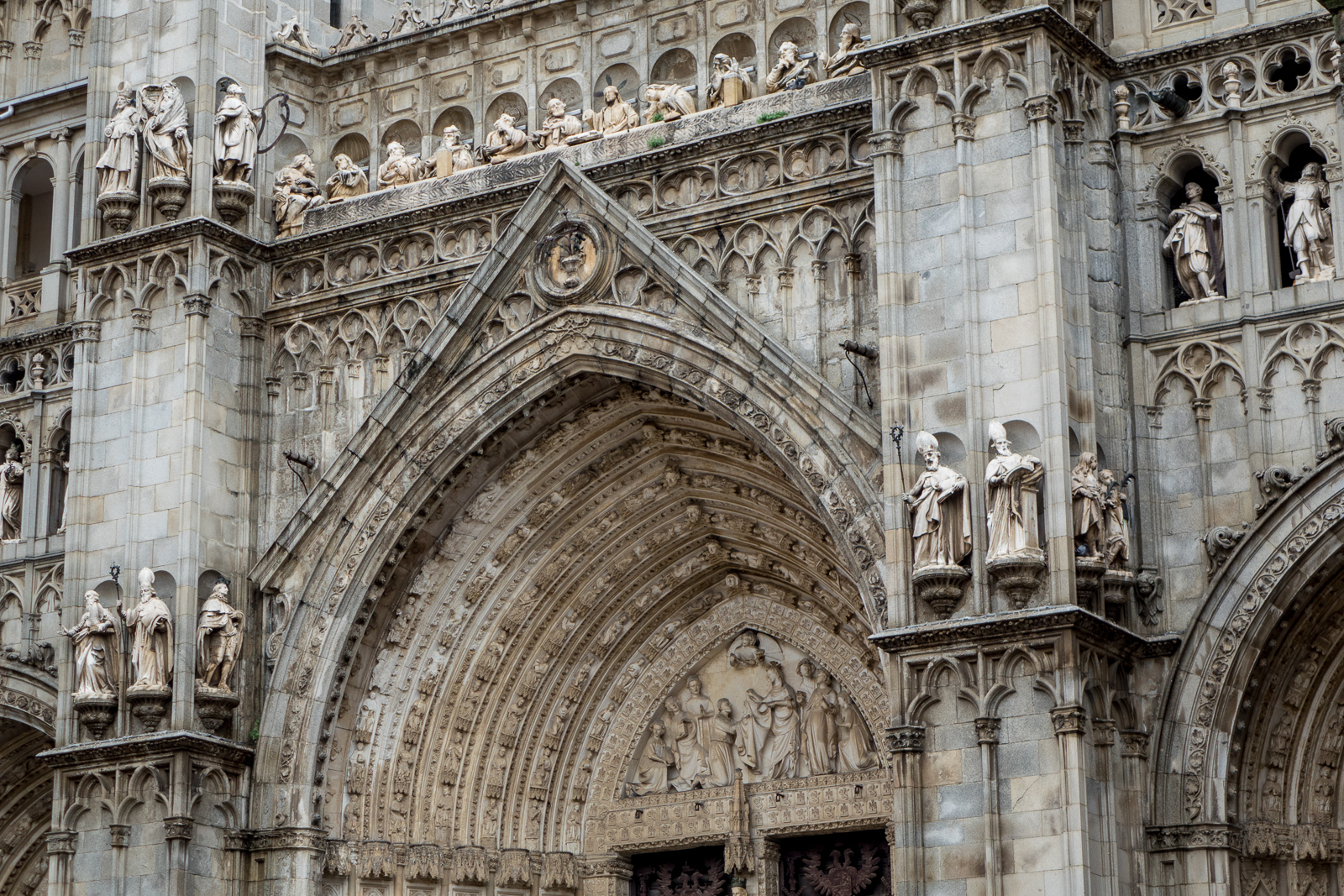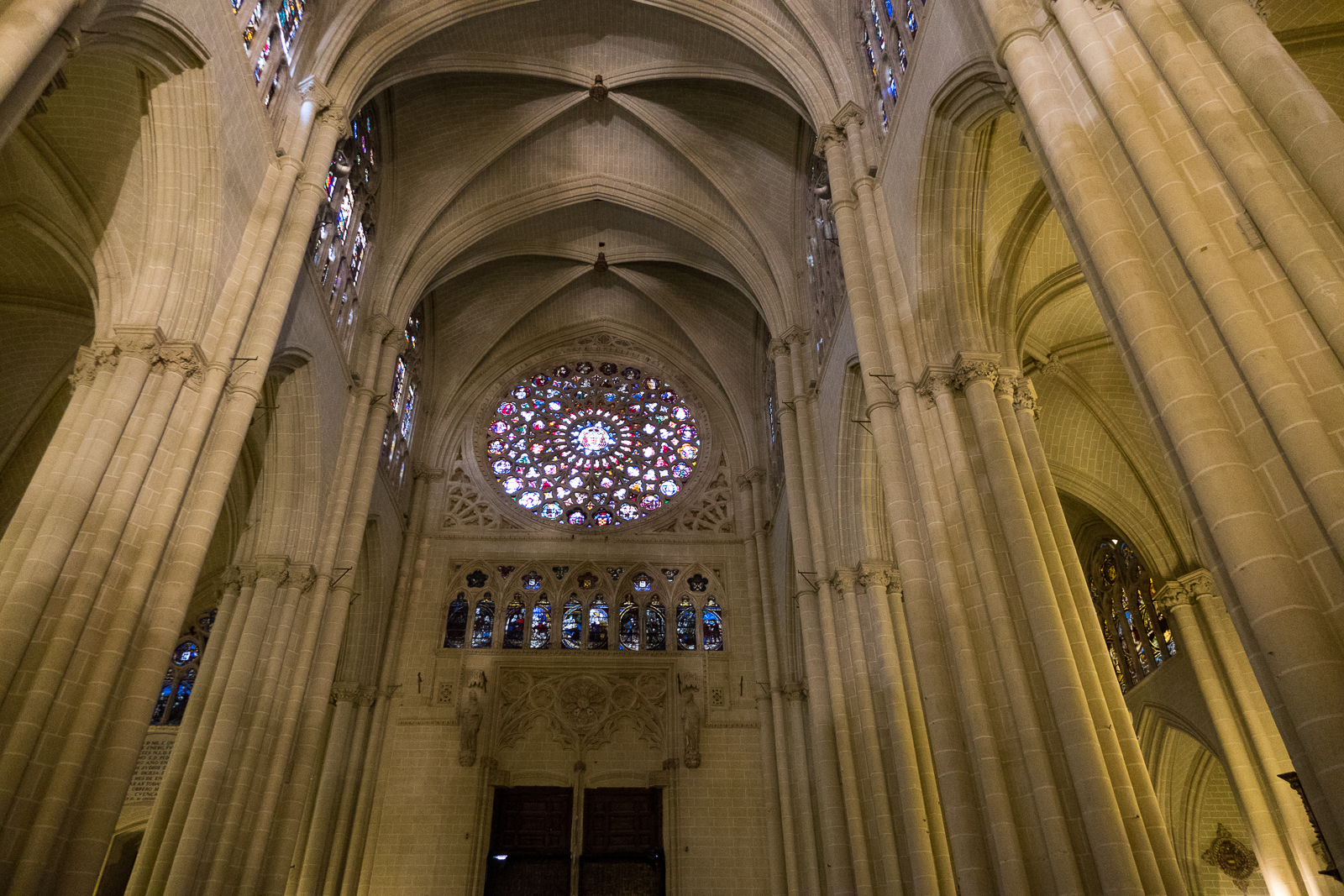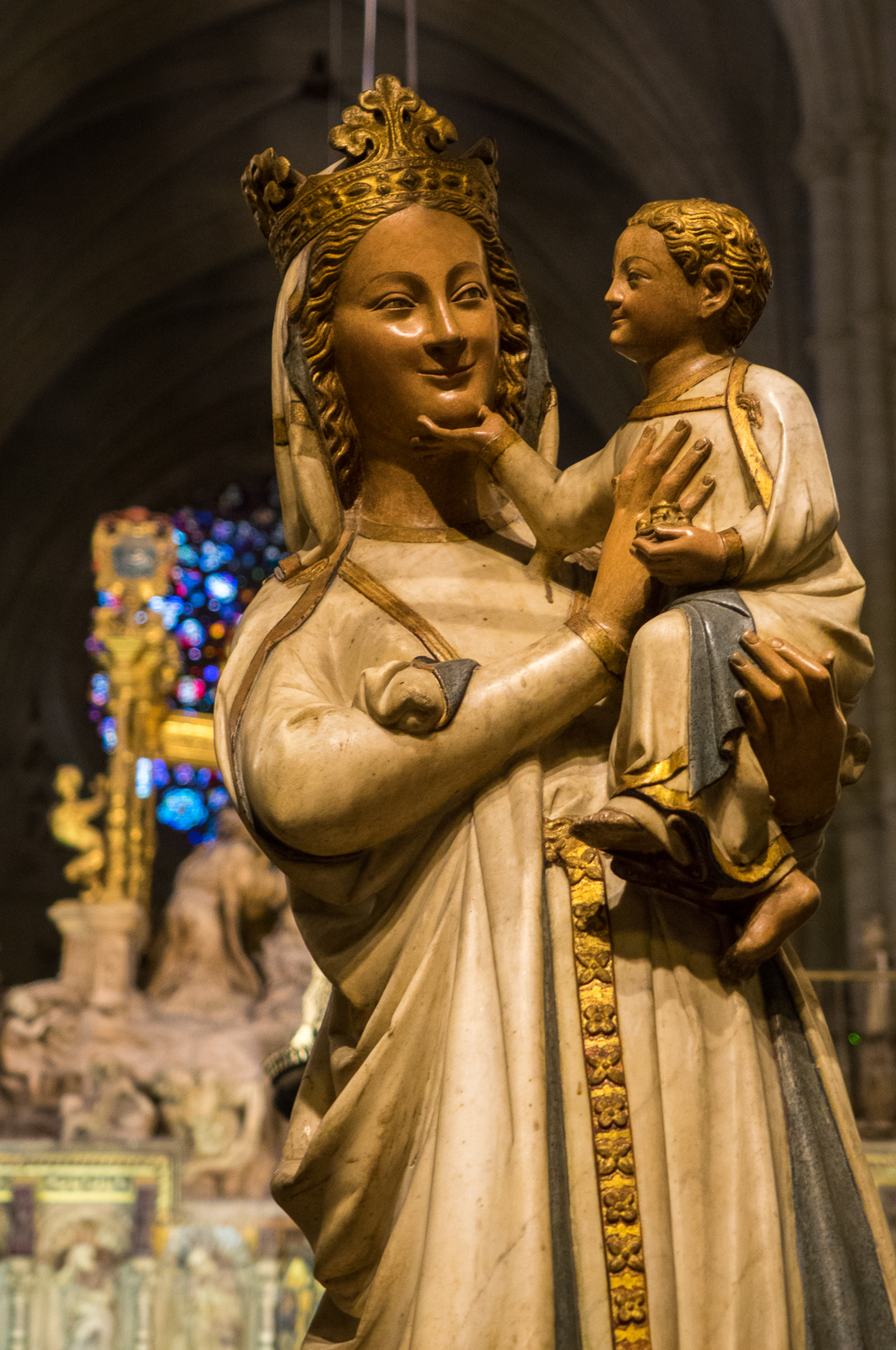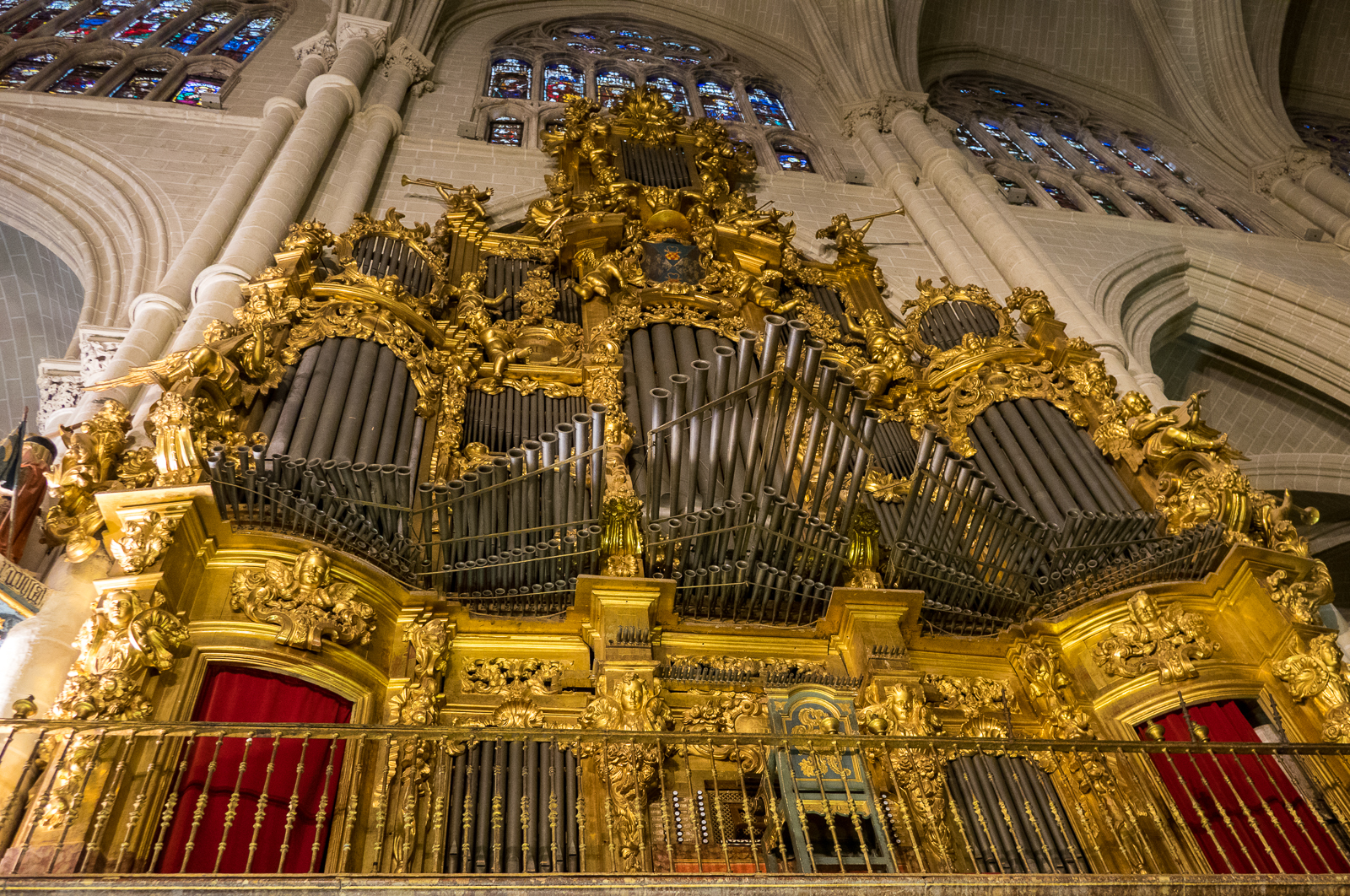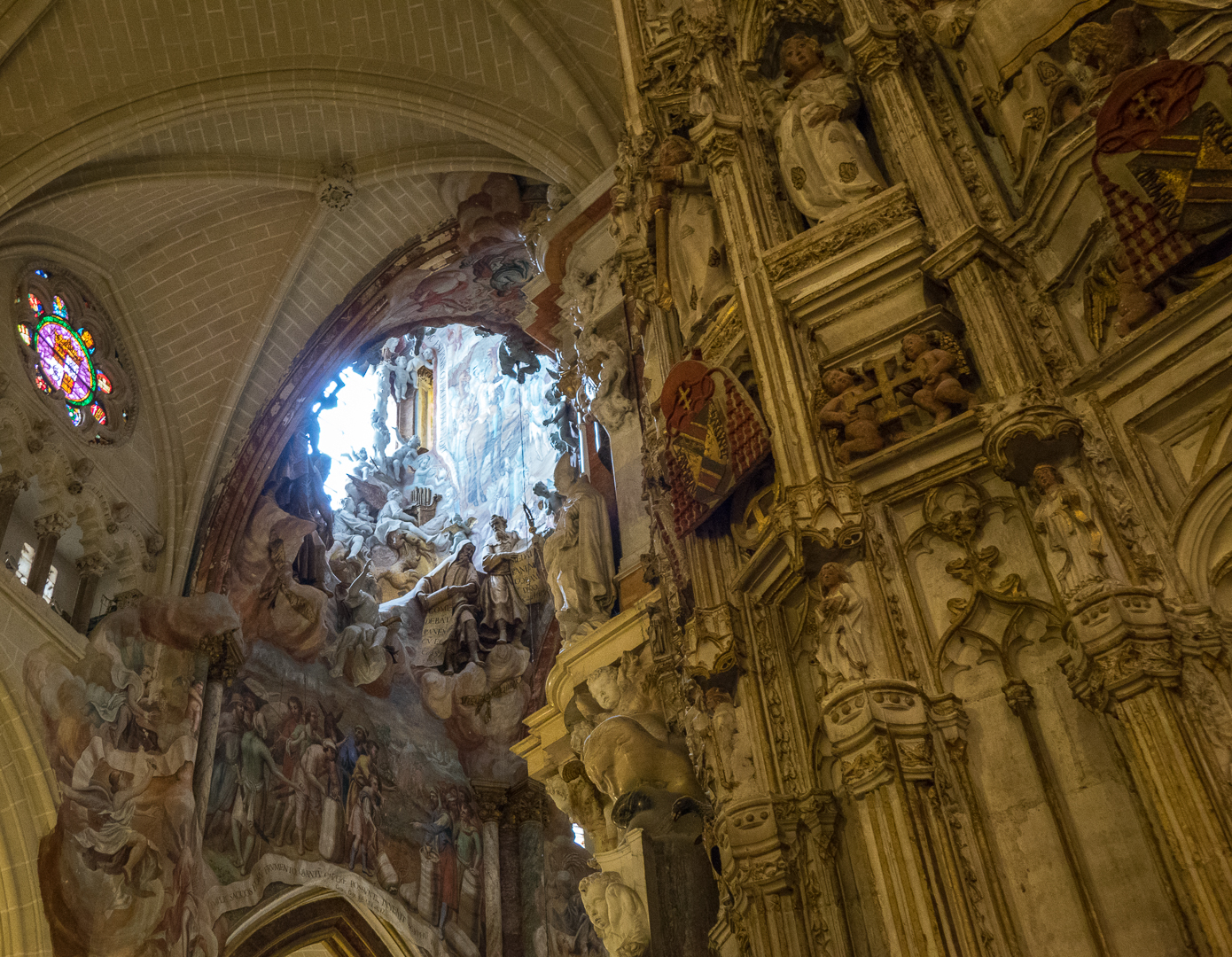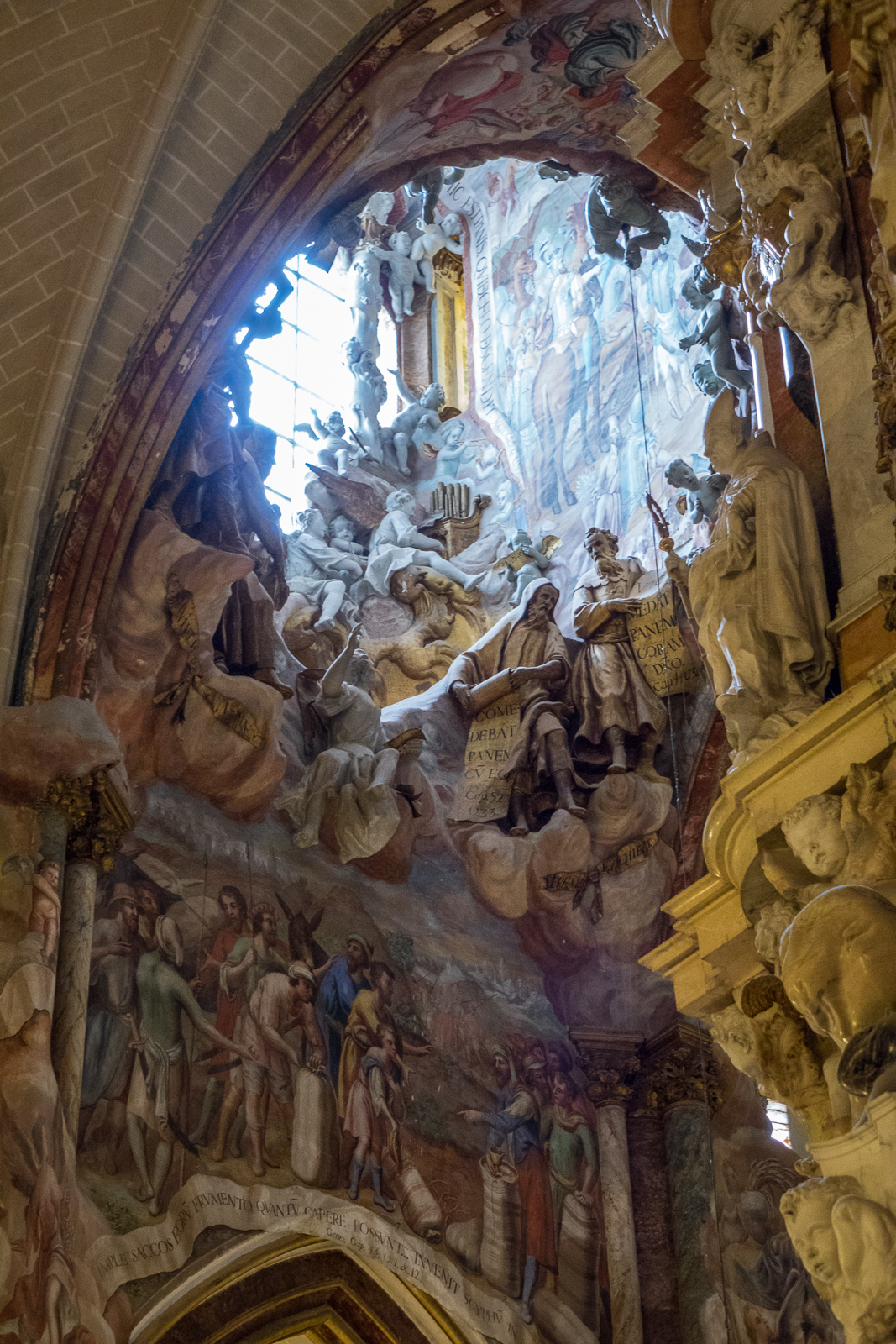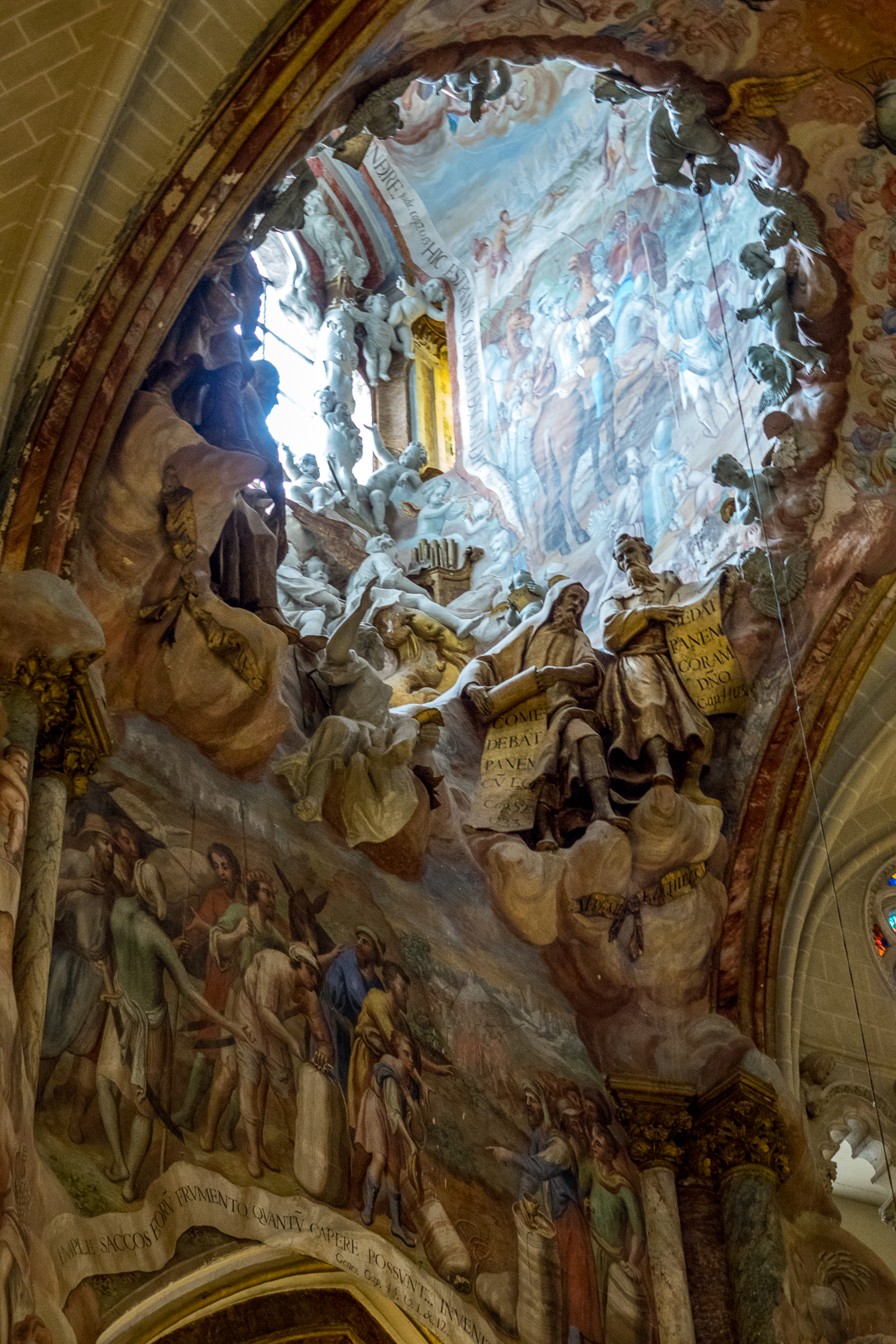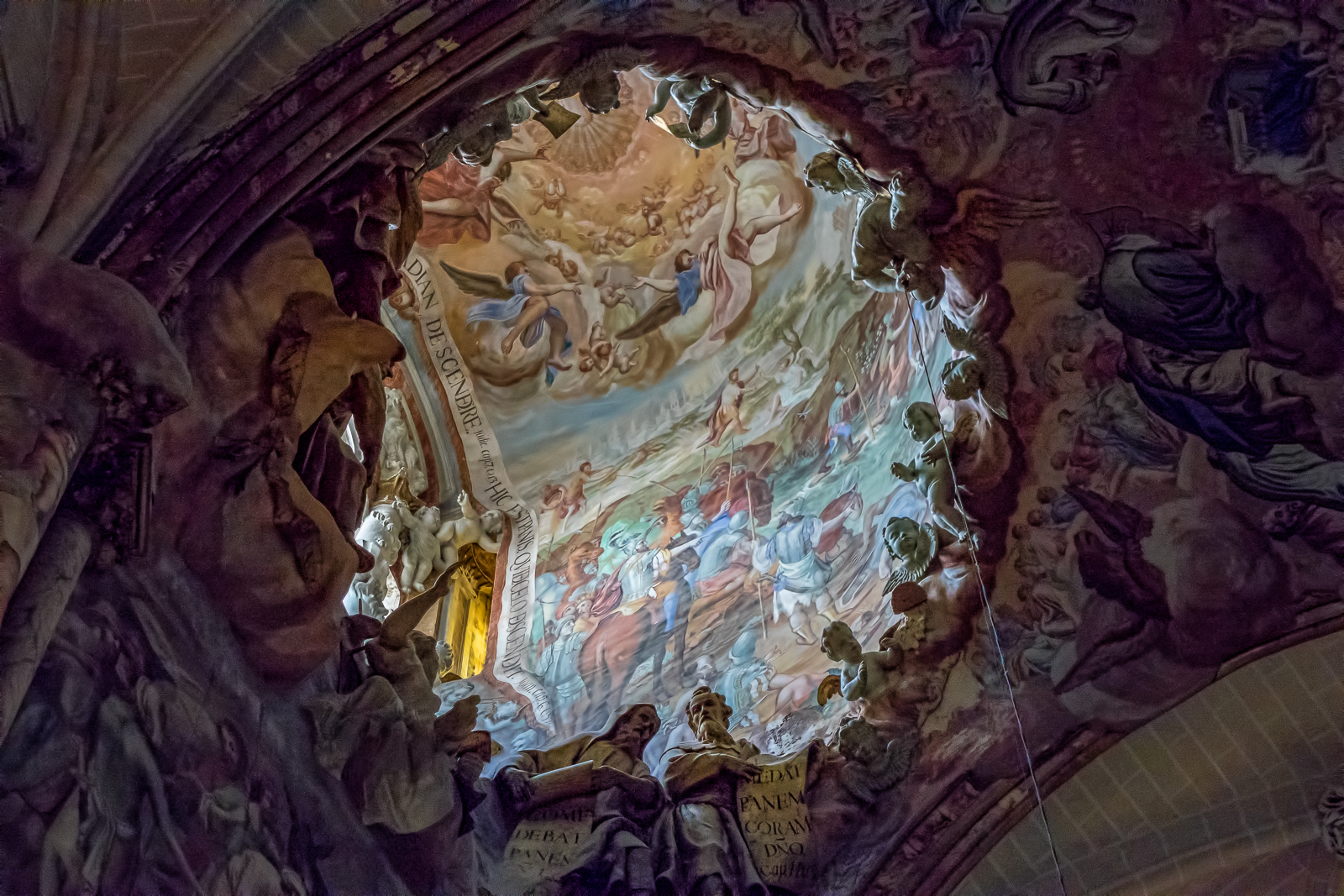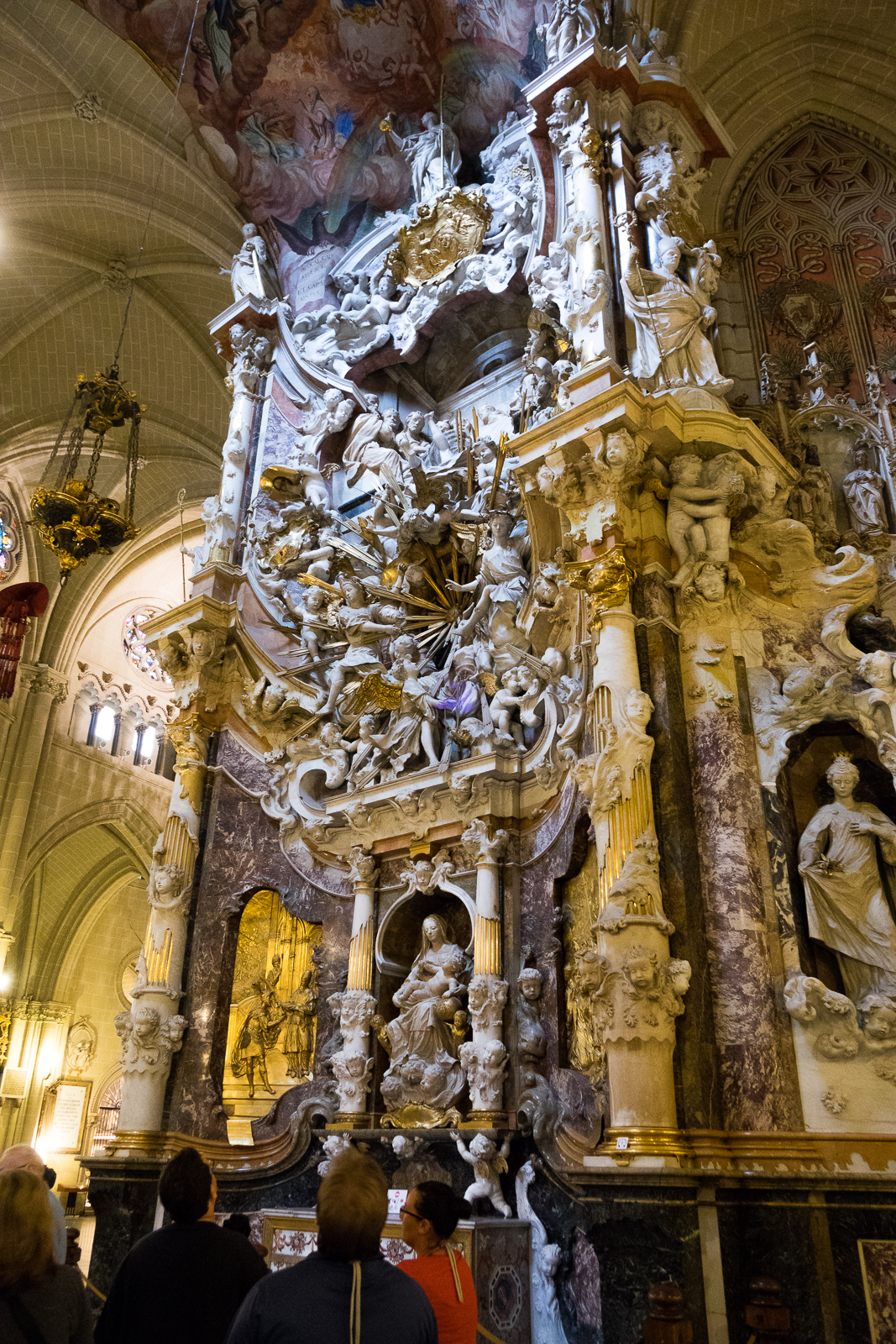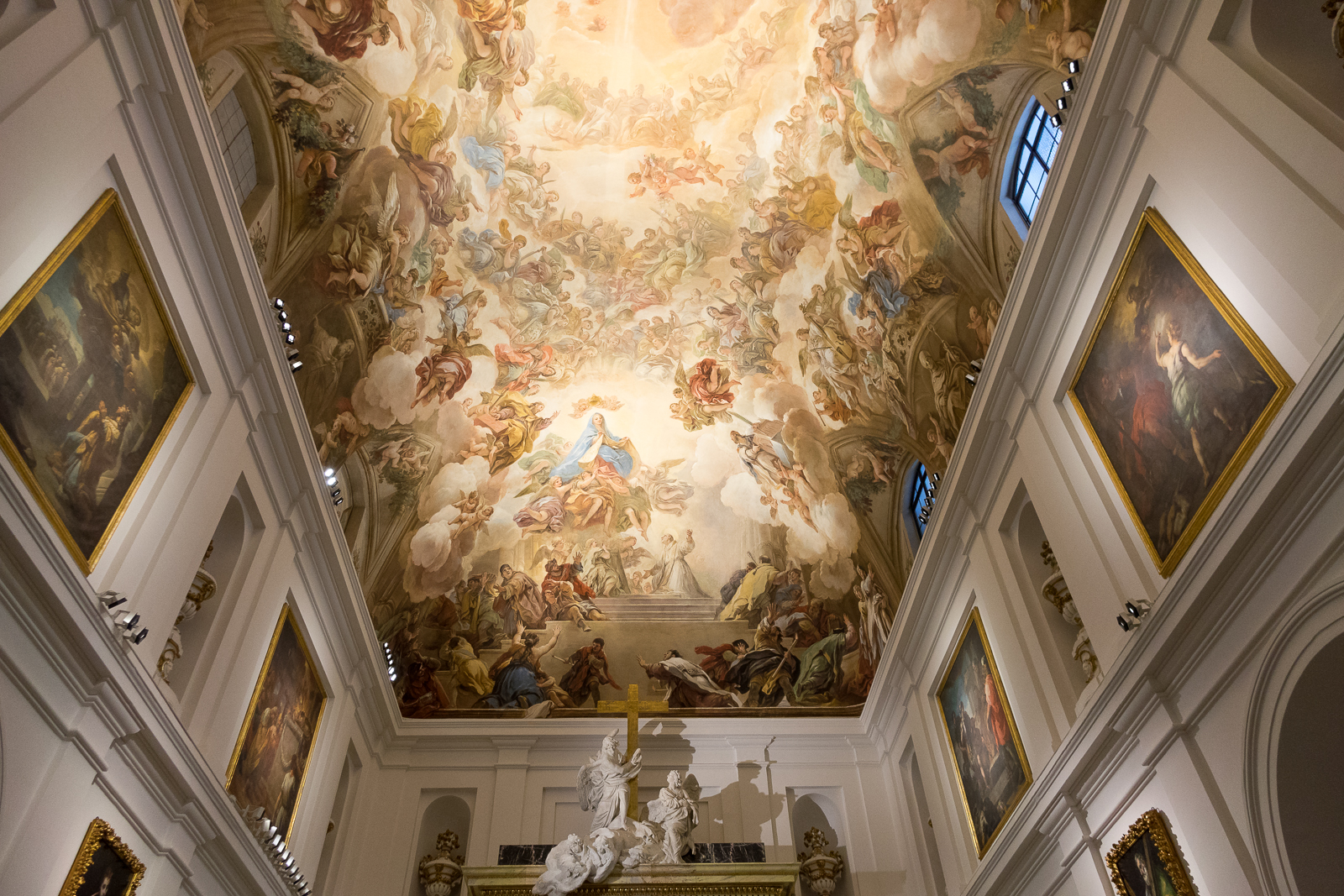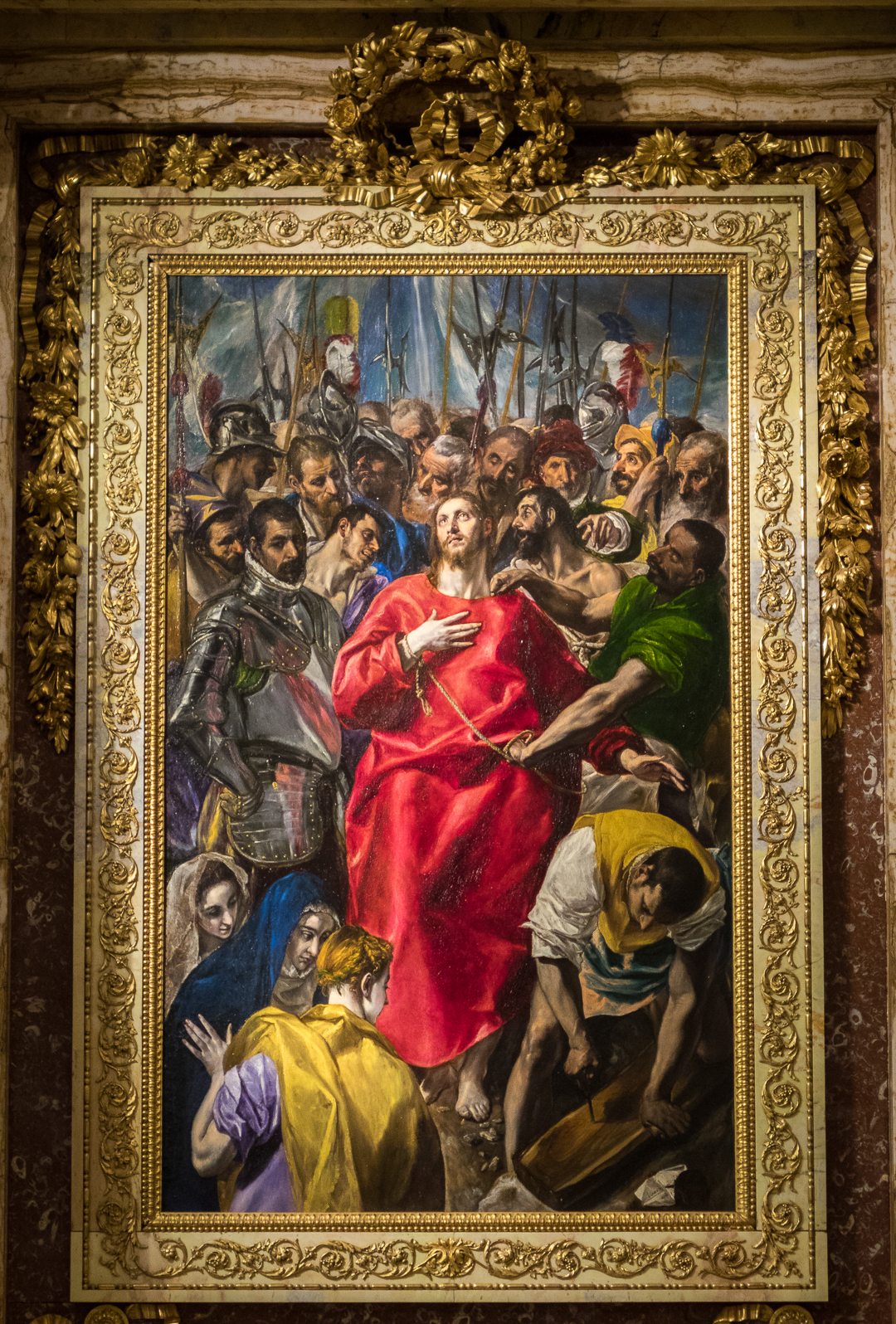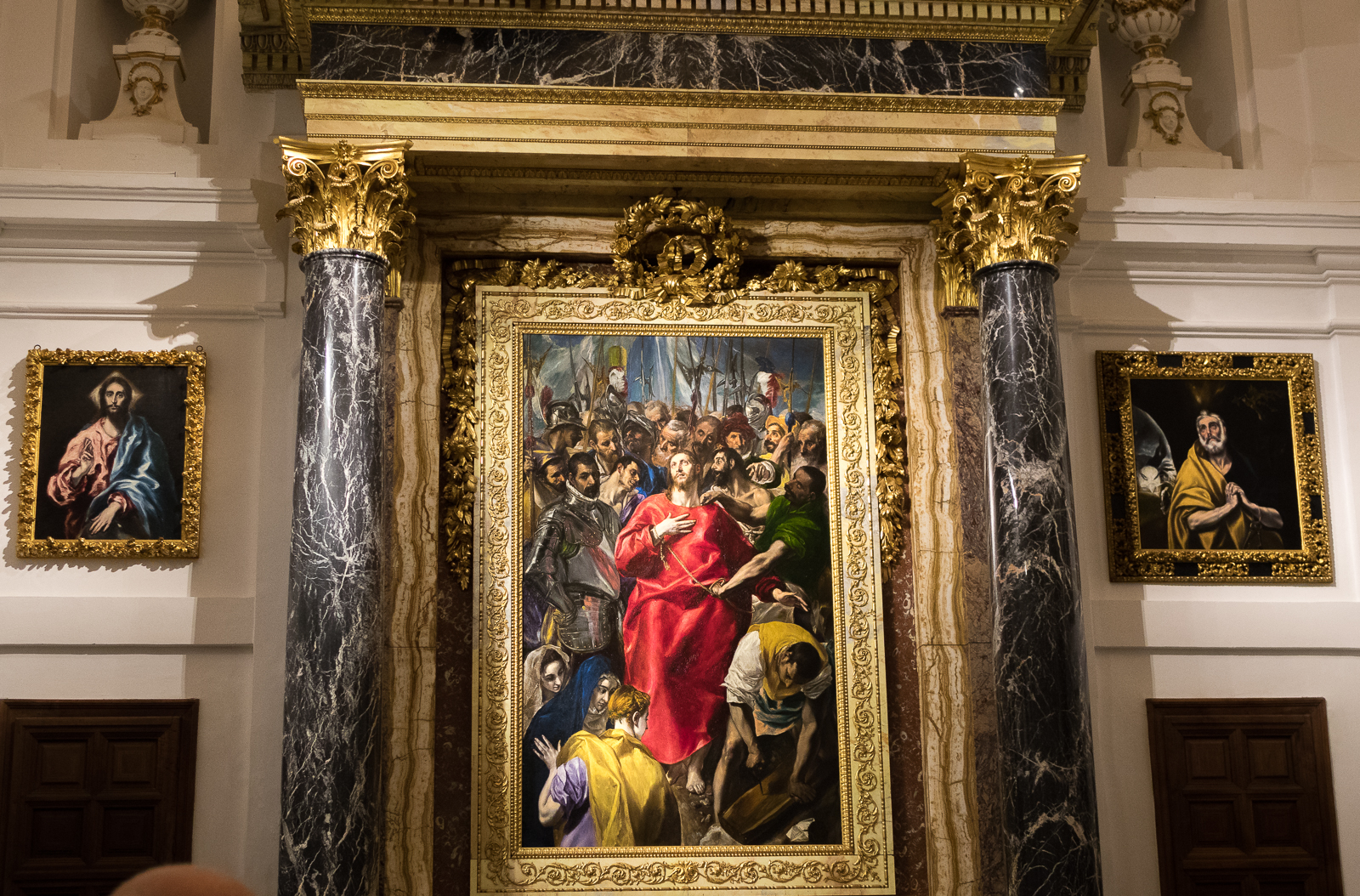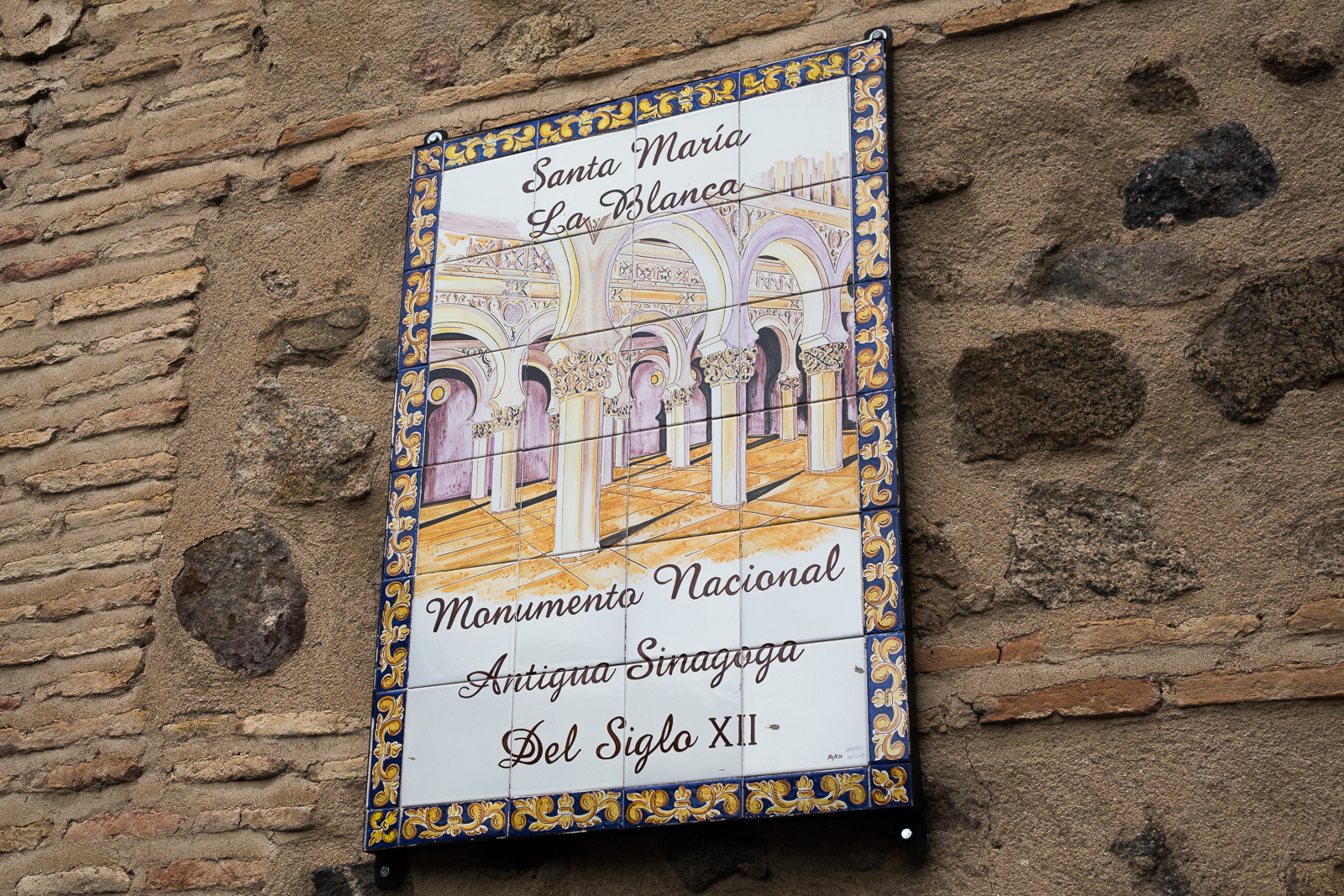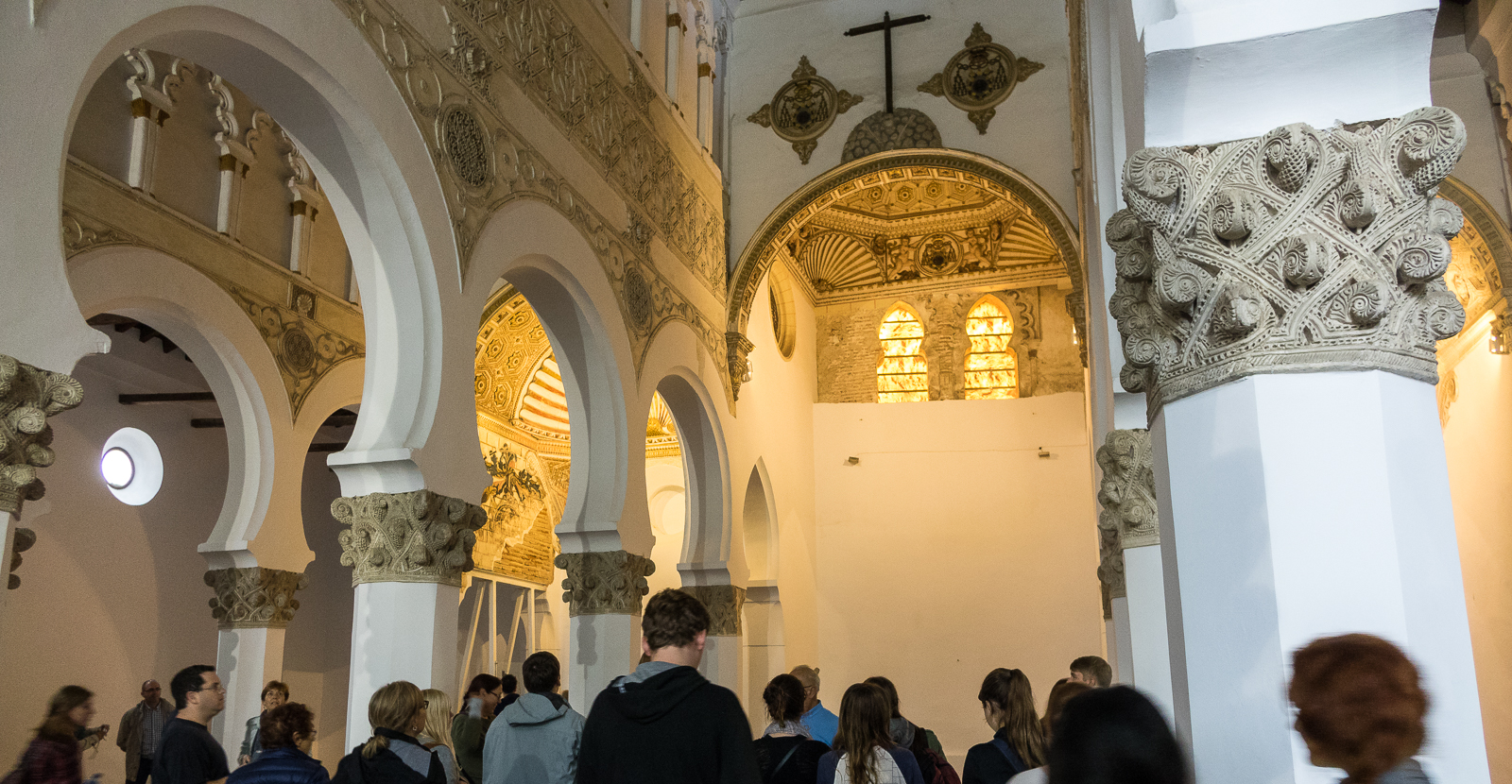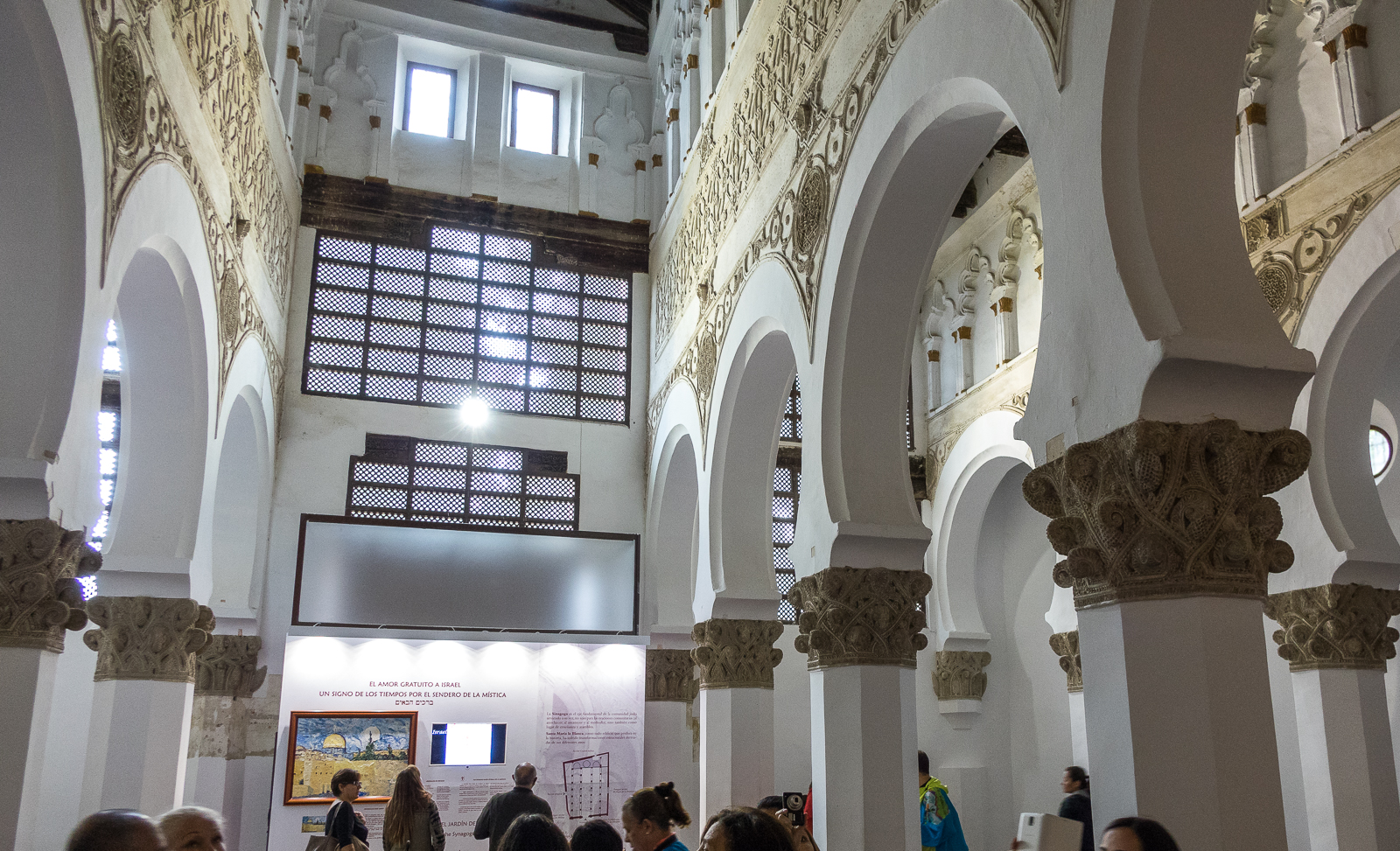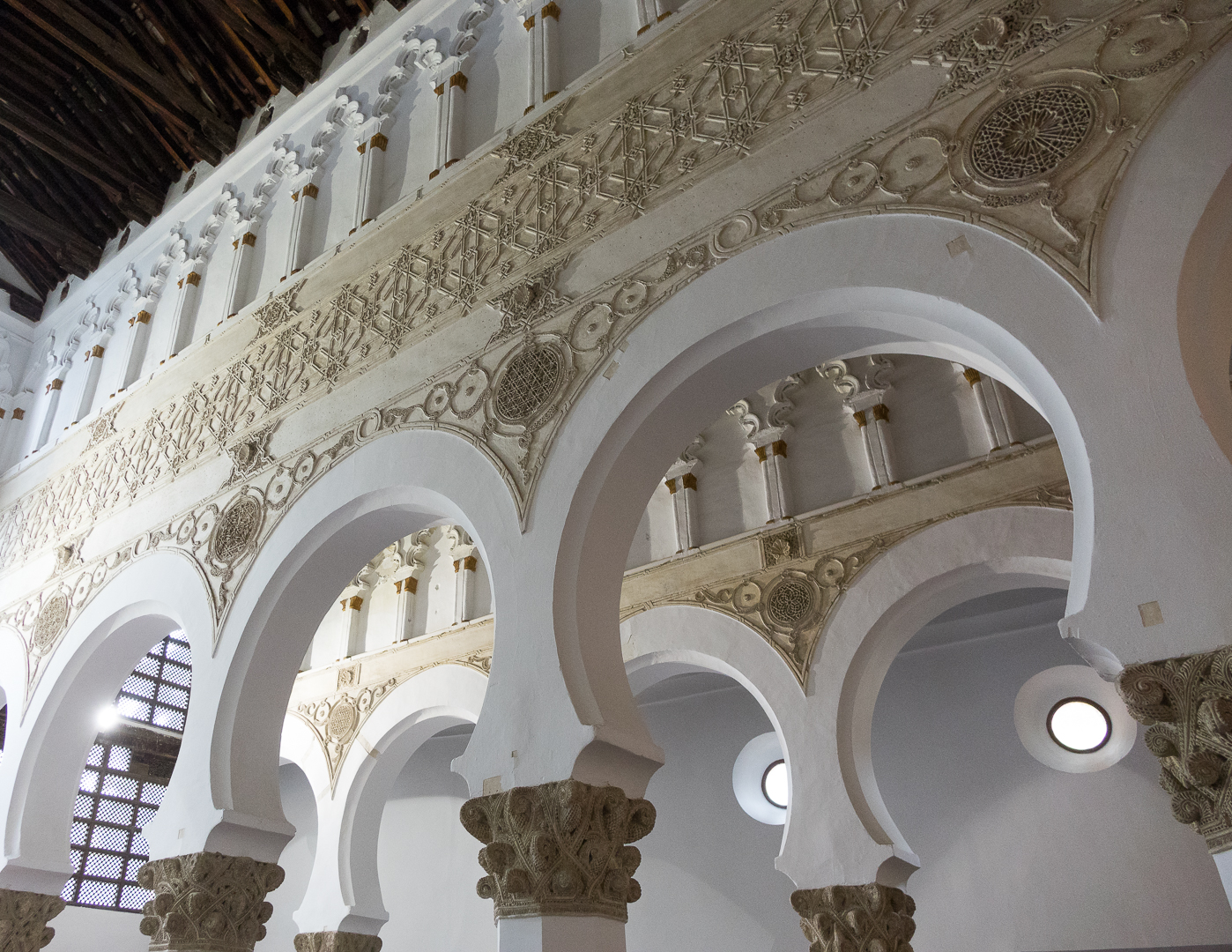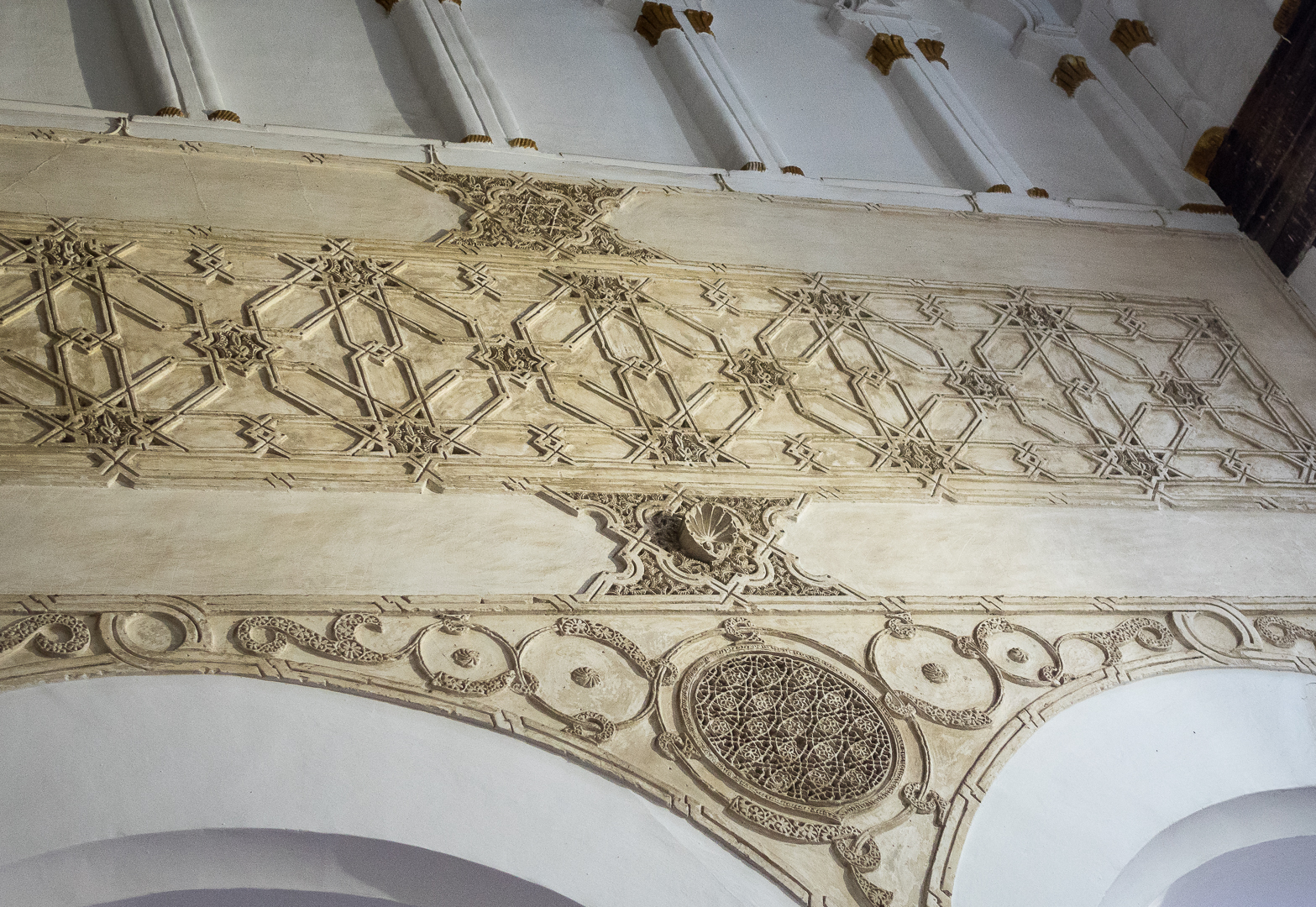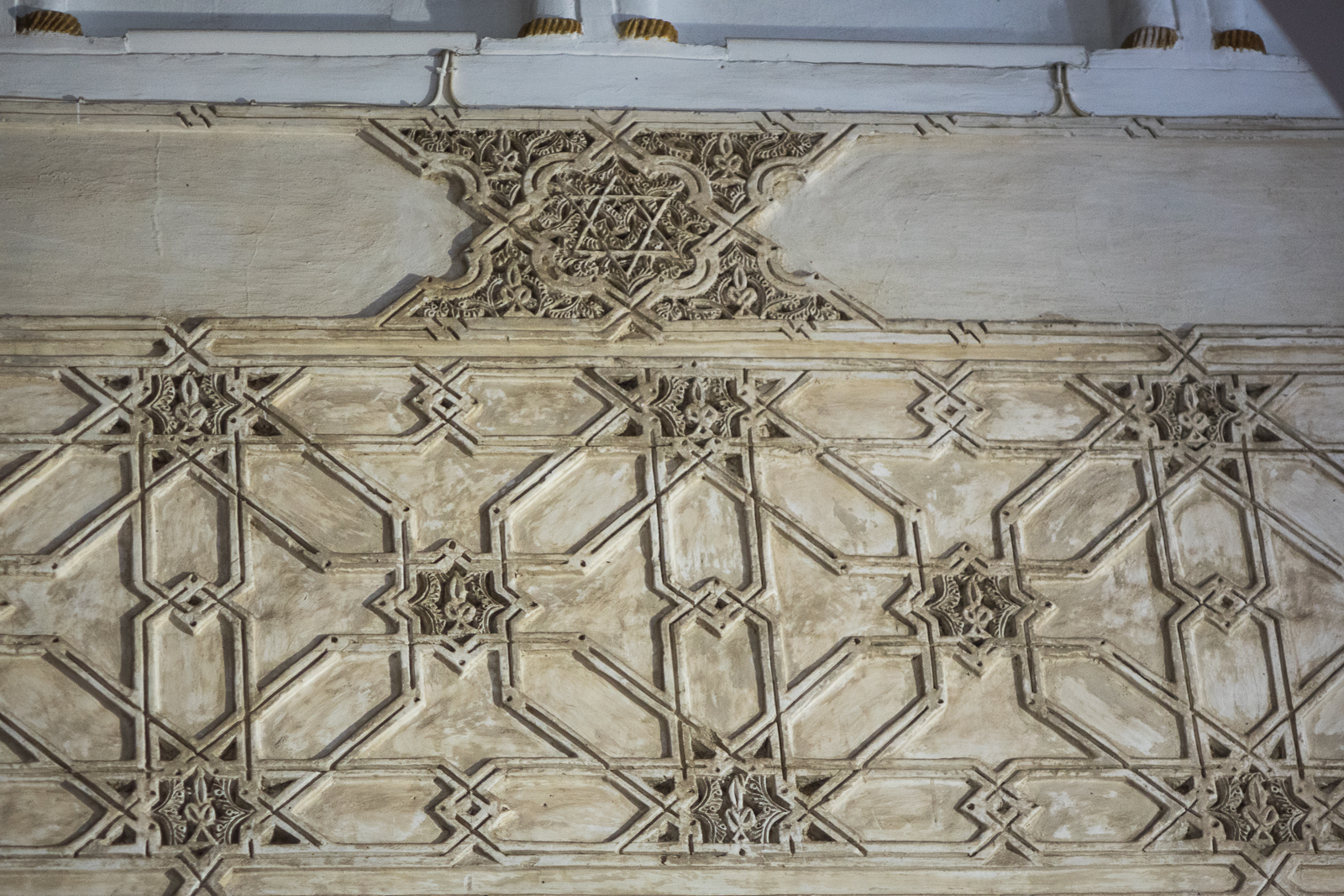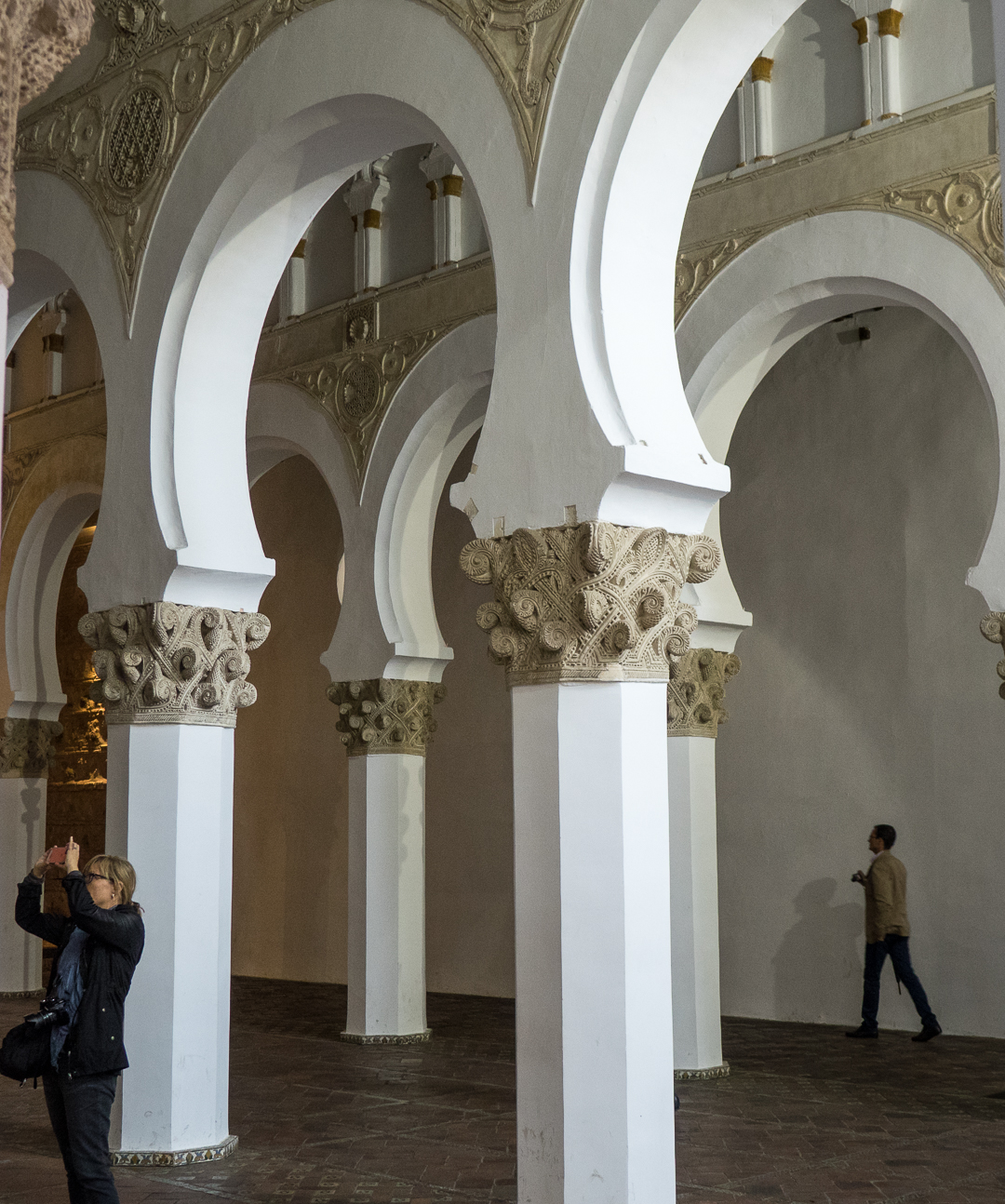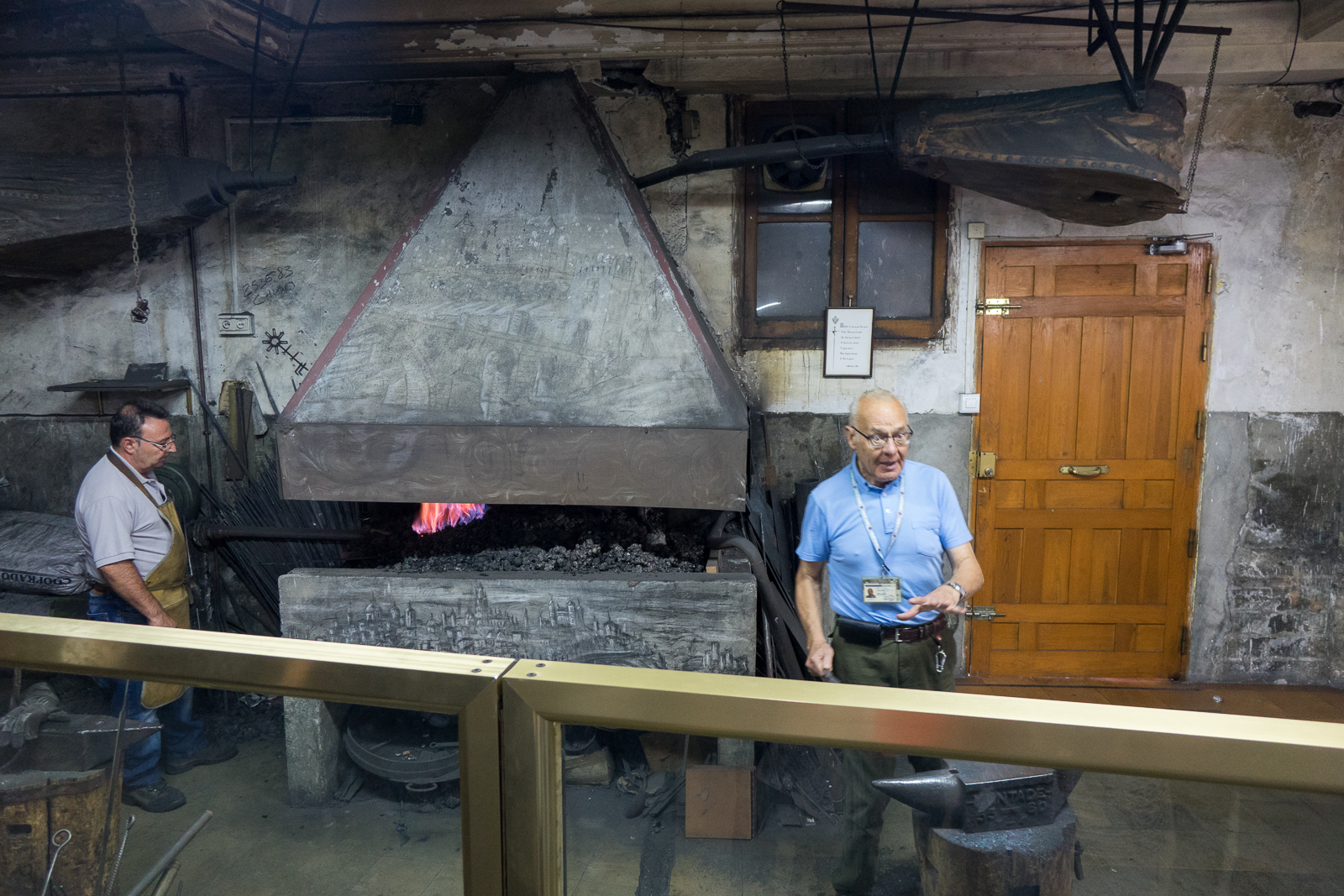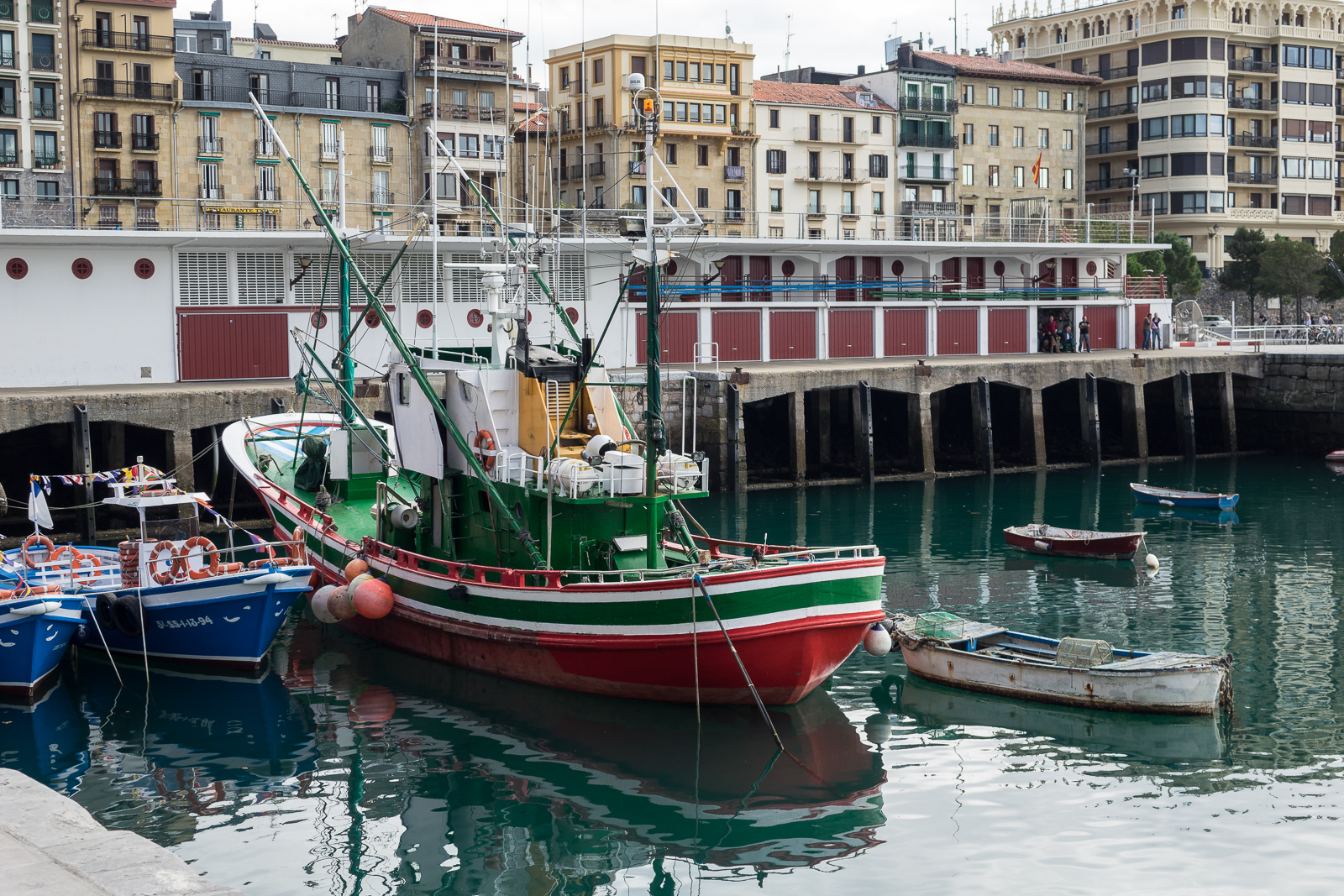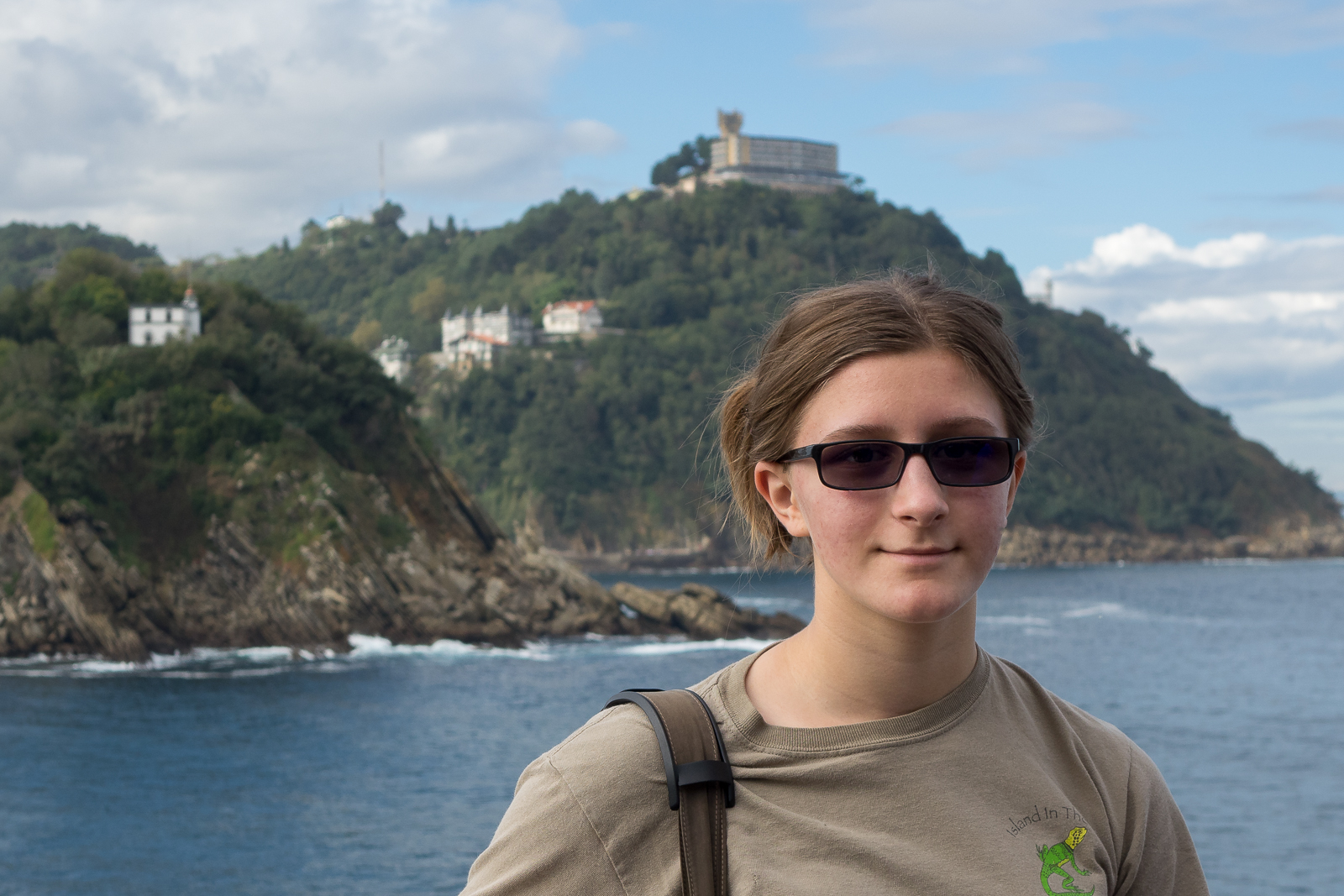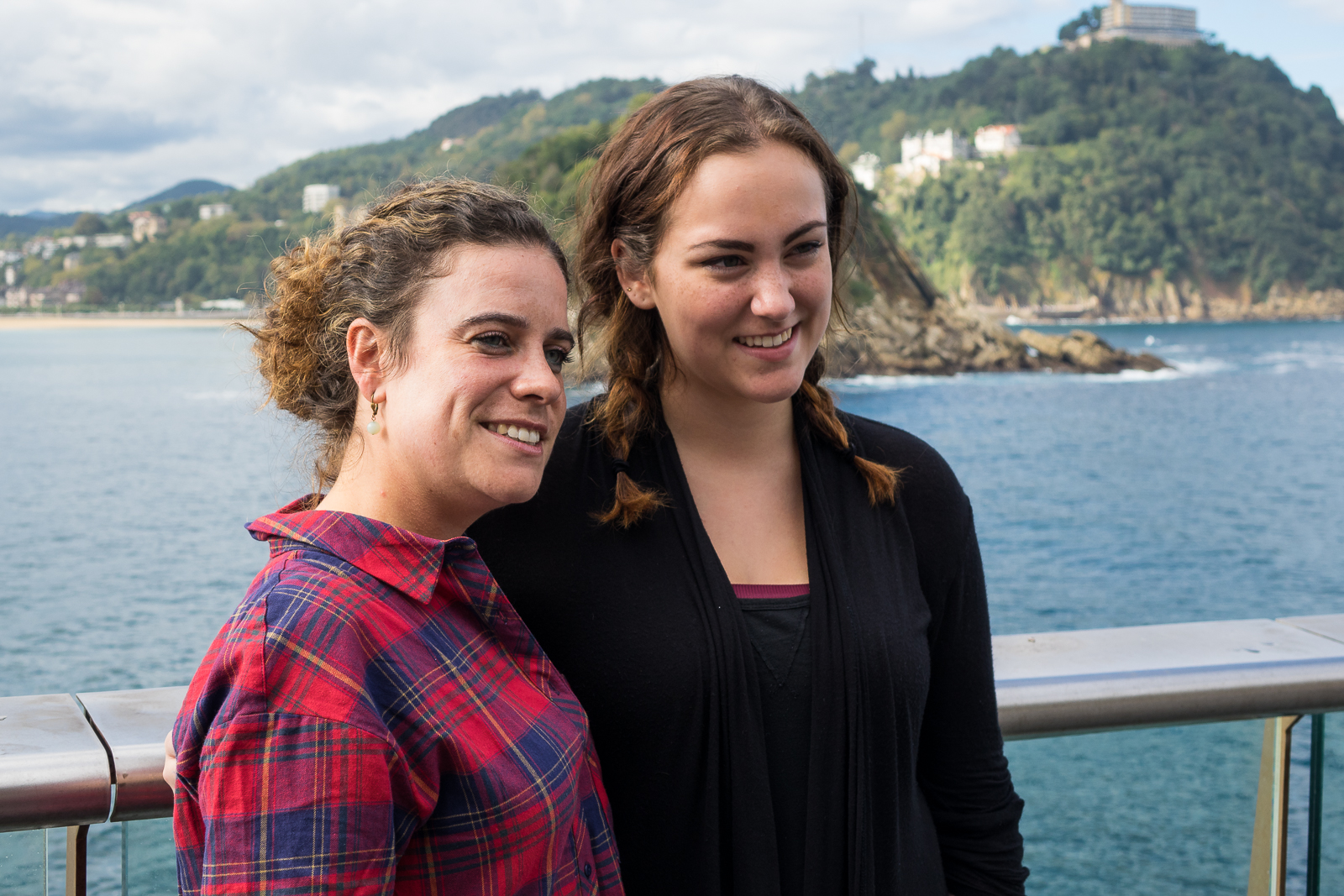View of local cathedral outside the Prado Museum in Madrid. According to our guide Elena, lots of celebrities get married here.
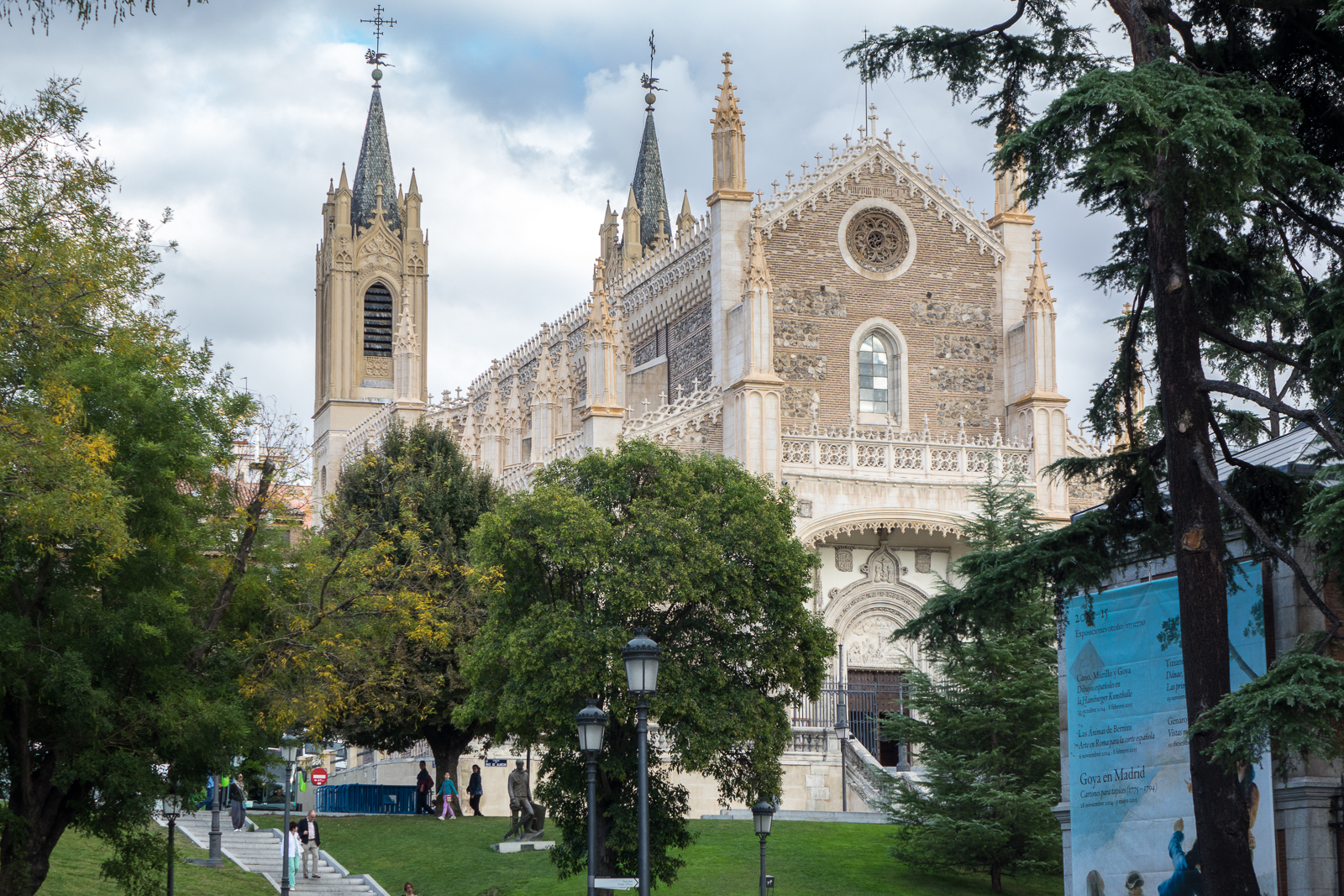
Exterior of the Prado Museum in Madrid. Jamie Sunshine survived the jet lag on day 1 of our trip far better than I did! By this time, we had been touring for about 7 hours straight after arrival.
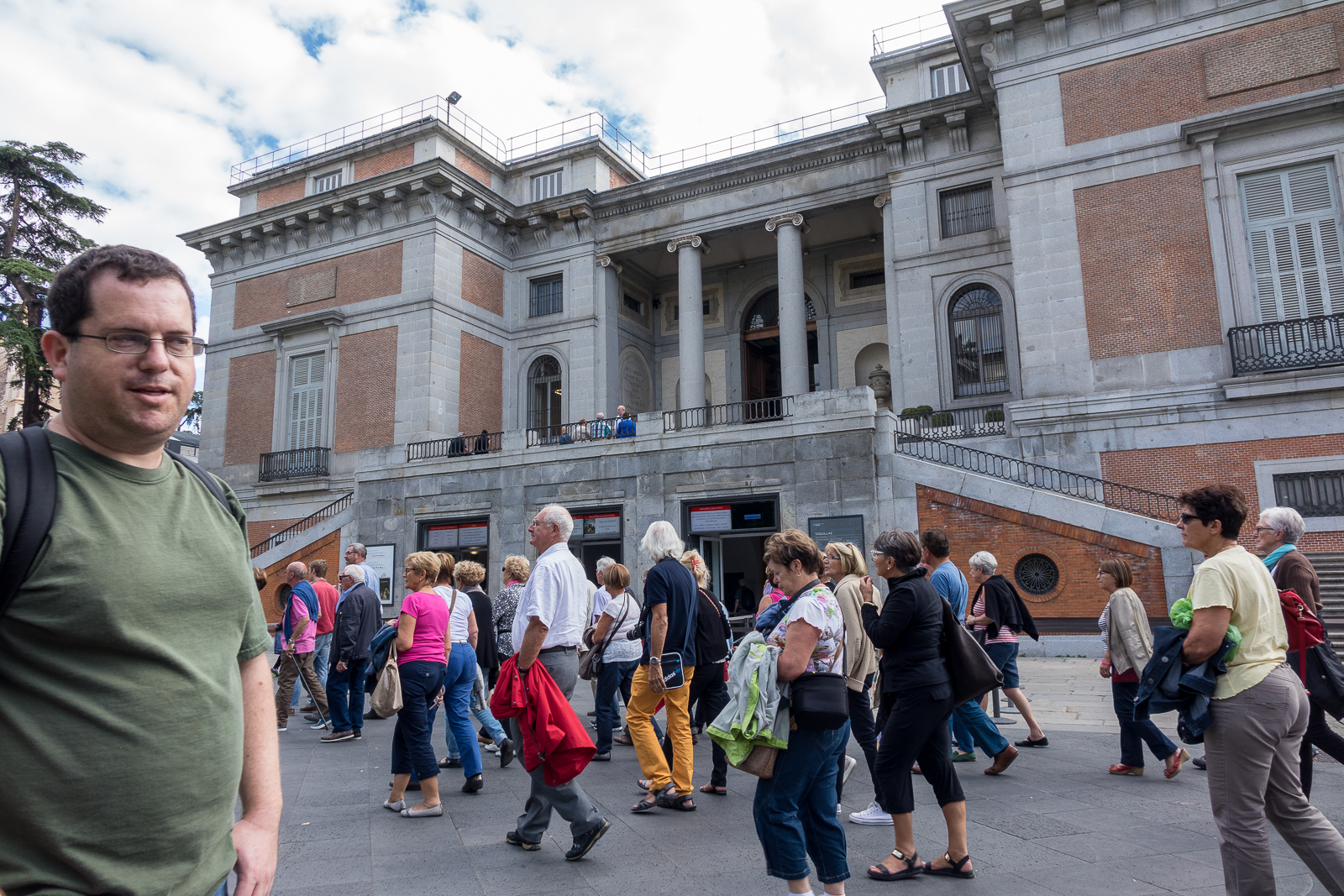
The Prado Museum has a shady, restful entrance area where you can contemplate life after viewing some of Europe’s finest art.
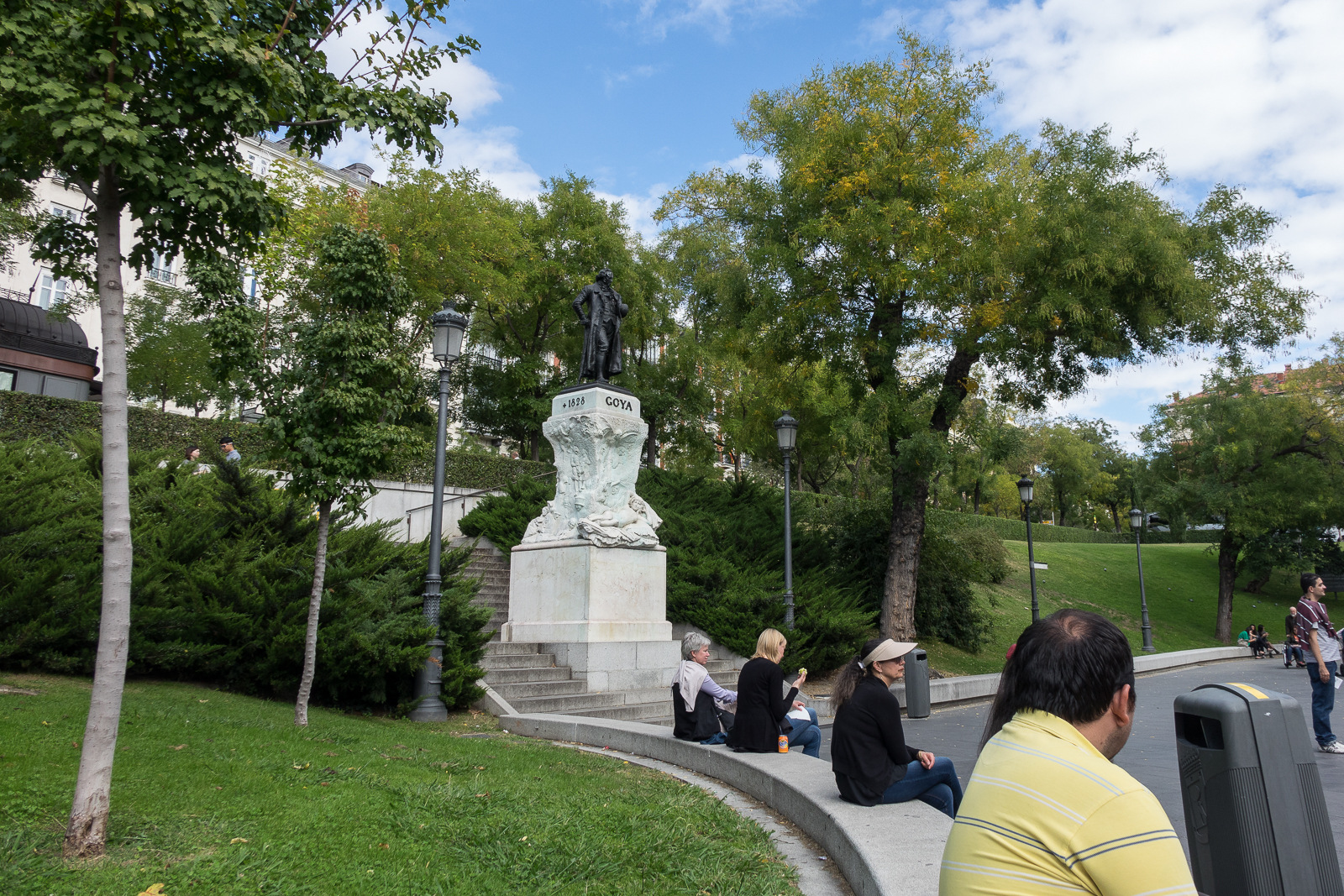
Statue to Francisco Goya near the entrance to the Prado. Poor Goya deserves a tribute. He started painting cheerful pastoral art, moved on to portraits of the Spanish royal family, and ended his career with a lot of dark, paintings depicting the nightmares of war. Napoleon’s invasion proved to be a traumatizing experience, although it resulted in inspirational art.
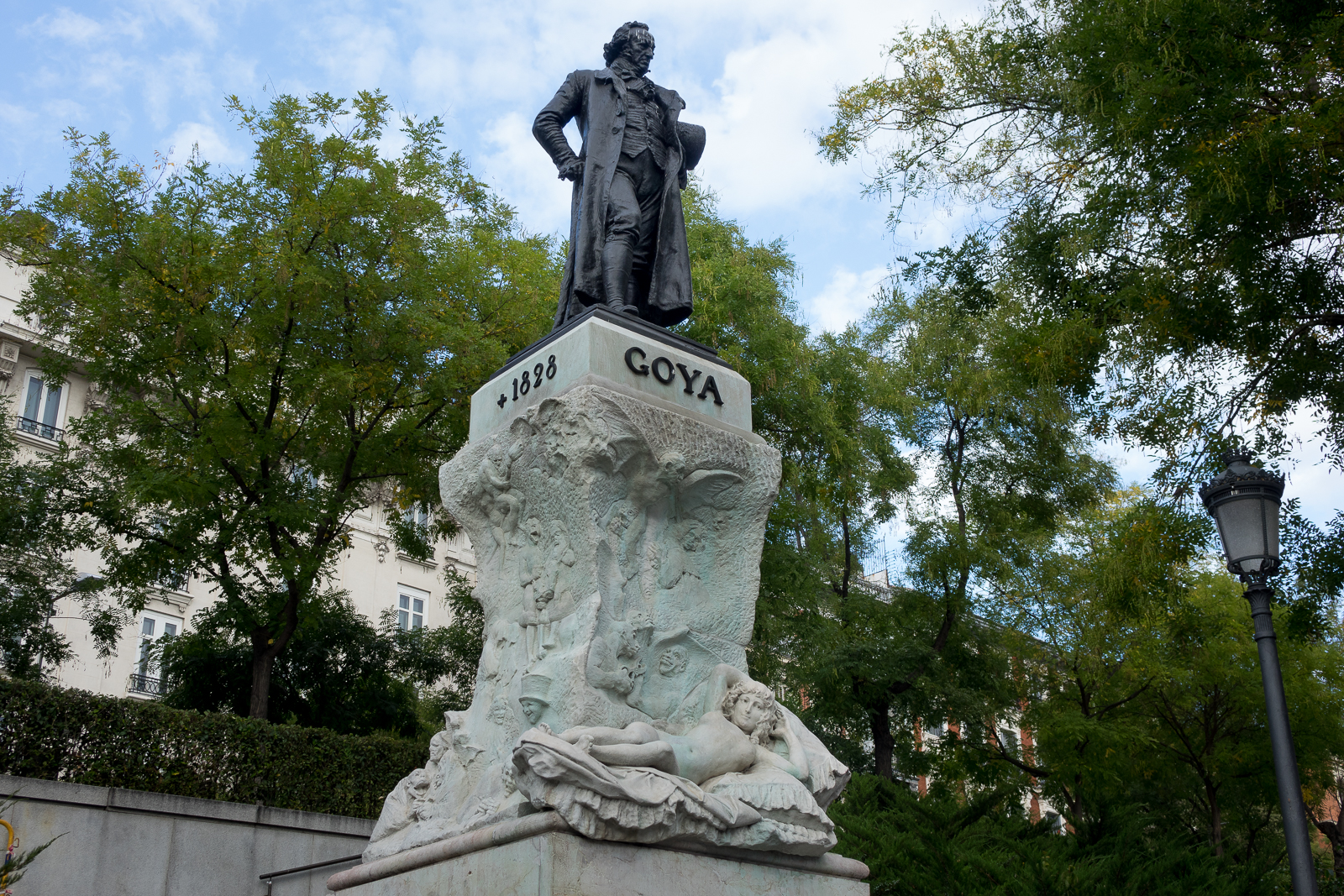
Performance artists at Puerta del Sol Plaza. The “G.I. Joe” guys in the foreground welcome a tip for allowing tourists to pose with them. The pair of guys in the background portraying “Petrified People of Pompeii” managed to stay perfectly still for hours…not so much as a blink out of them! If you seek a tip, I guess this is the place to do it since it’s in the heart of old Madrid at a main stop on the metro system.
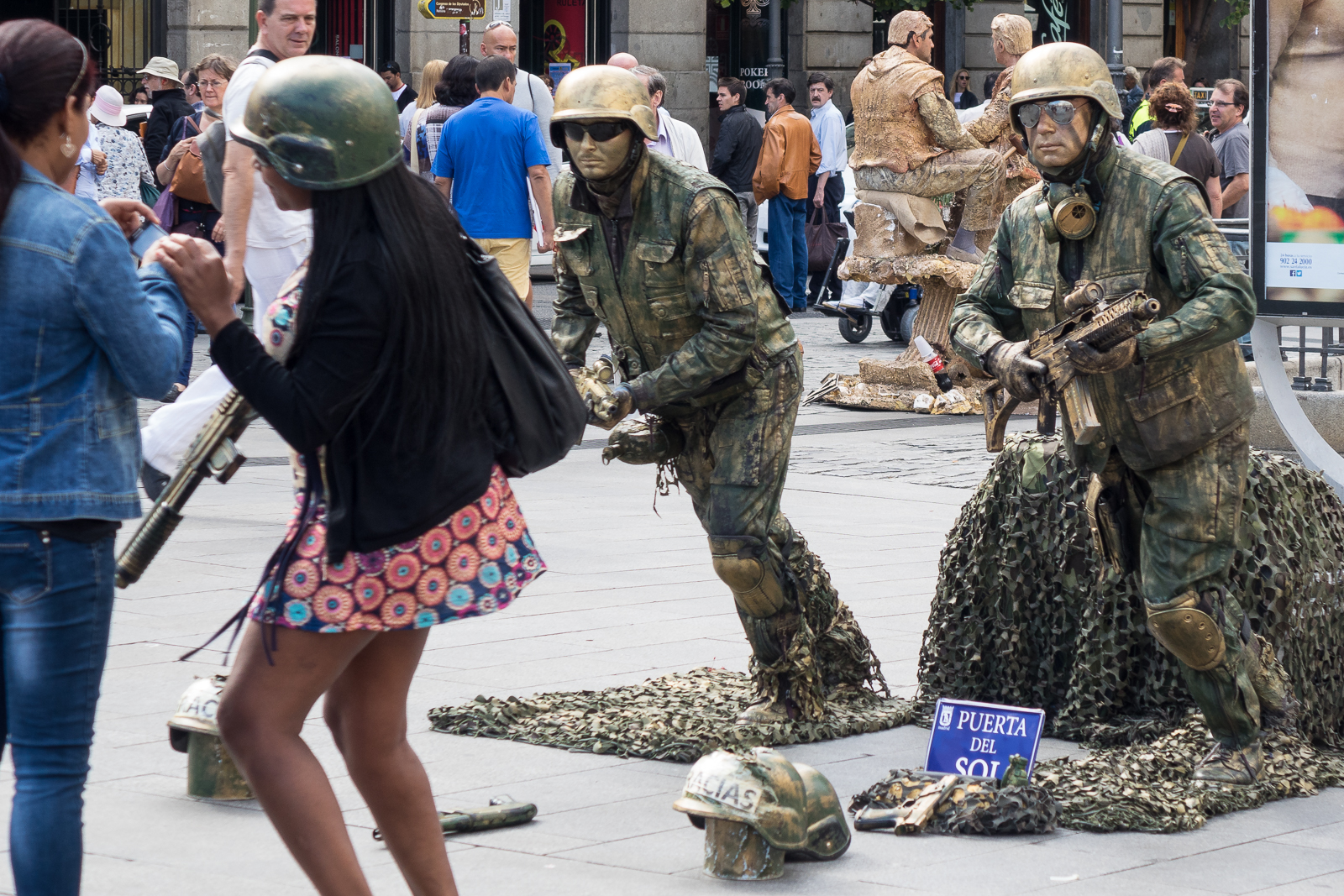
Puerta del Sol is a main intersection of pedestrian and vehicle traffic in central Madrid. People come to relax, shop, do business, eat, and change metro lines on their way through the subways running under Madrid. Those who want a stage to attract attention, like musicians, amateur magicians, and actors, use this as a public stage.
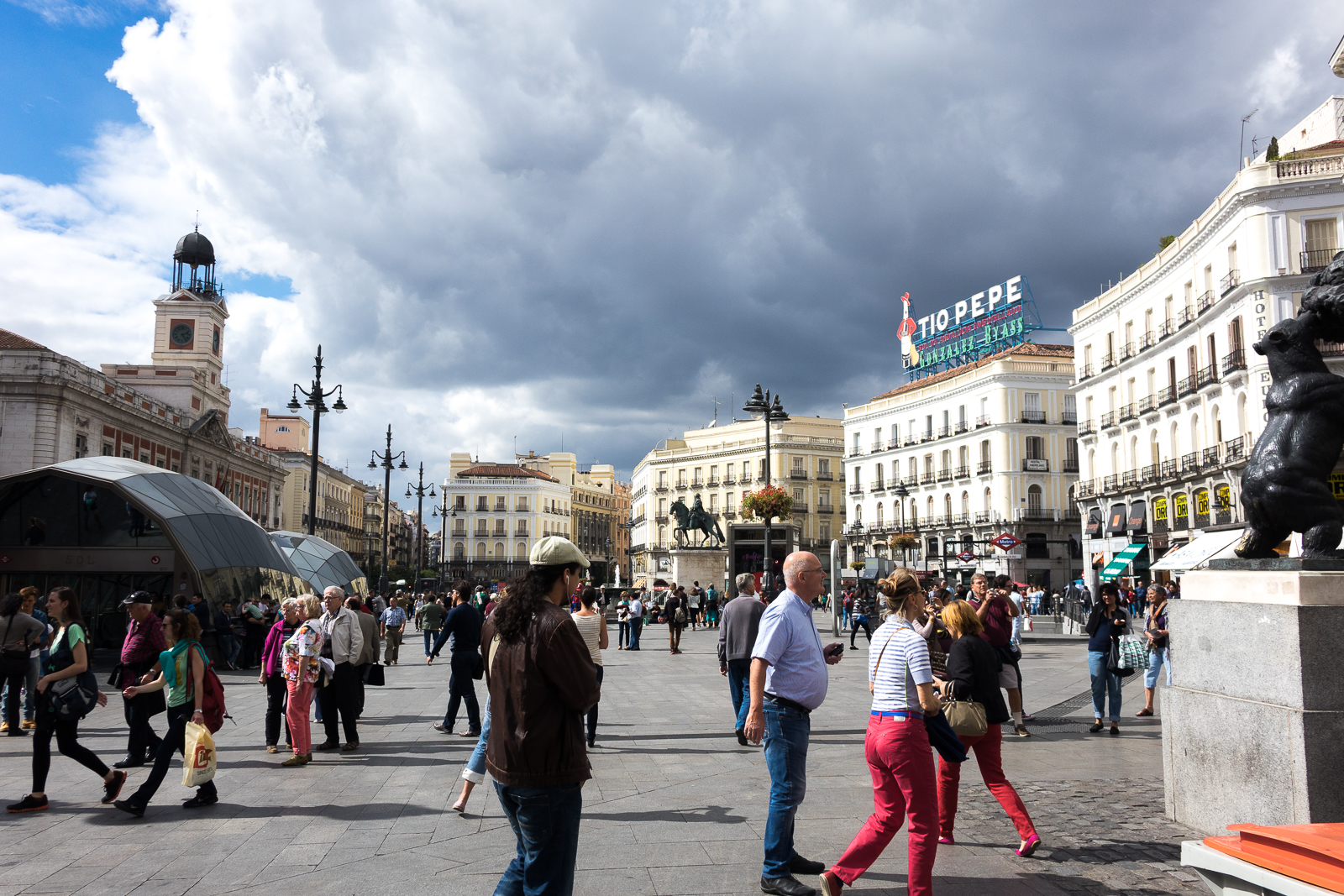
The statue of the bear climbing up the tree is a symbol of the municipality of Madrid at the edge of Puerta del Sol. The city seal (and all city taxis) bear this same symbol. An Apple store is just a few steps away from here.
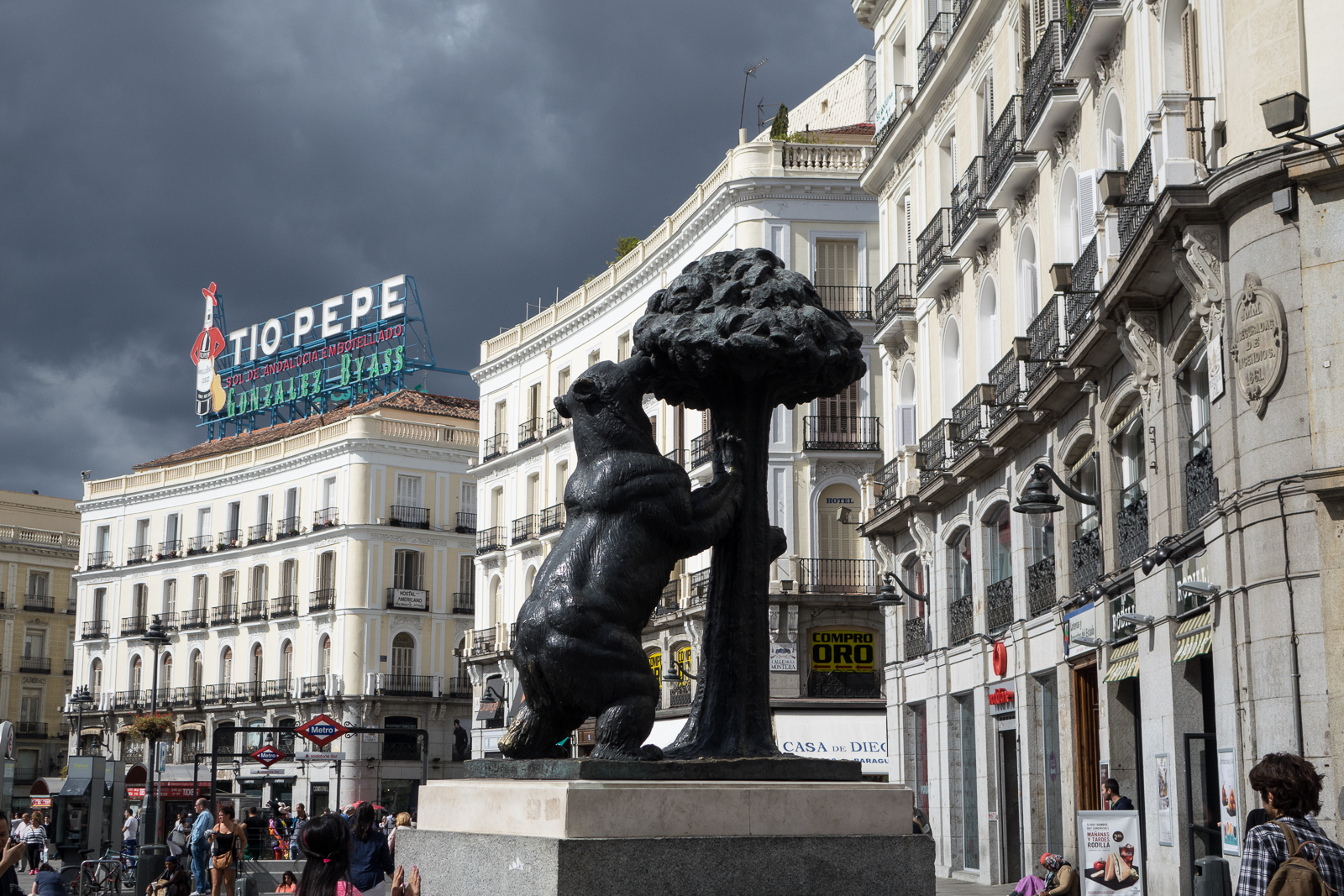
In addition to entertainment, Puerta del Sol is a hub for protests and demonstrations. Students saw a protest by workers who just lost their jobs in a recent closing of a local Coca Cola plant. (All very orderly and non-violent, but unemployment has been high in recent years.)
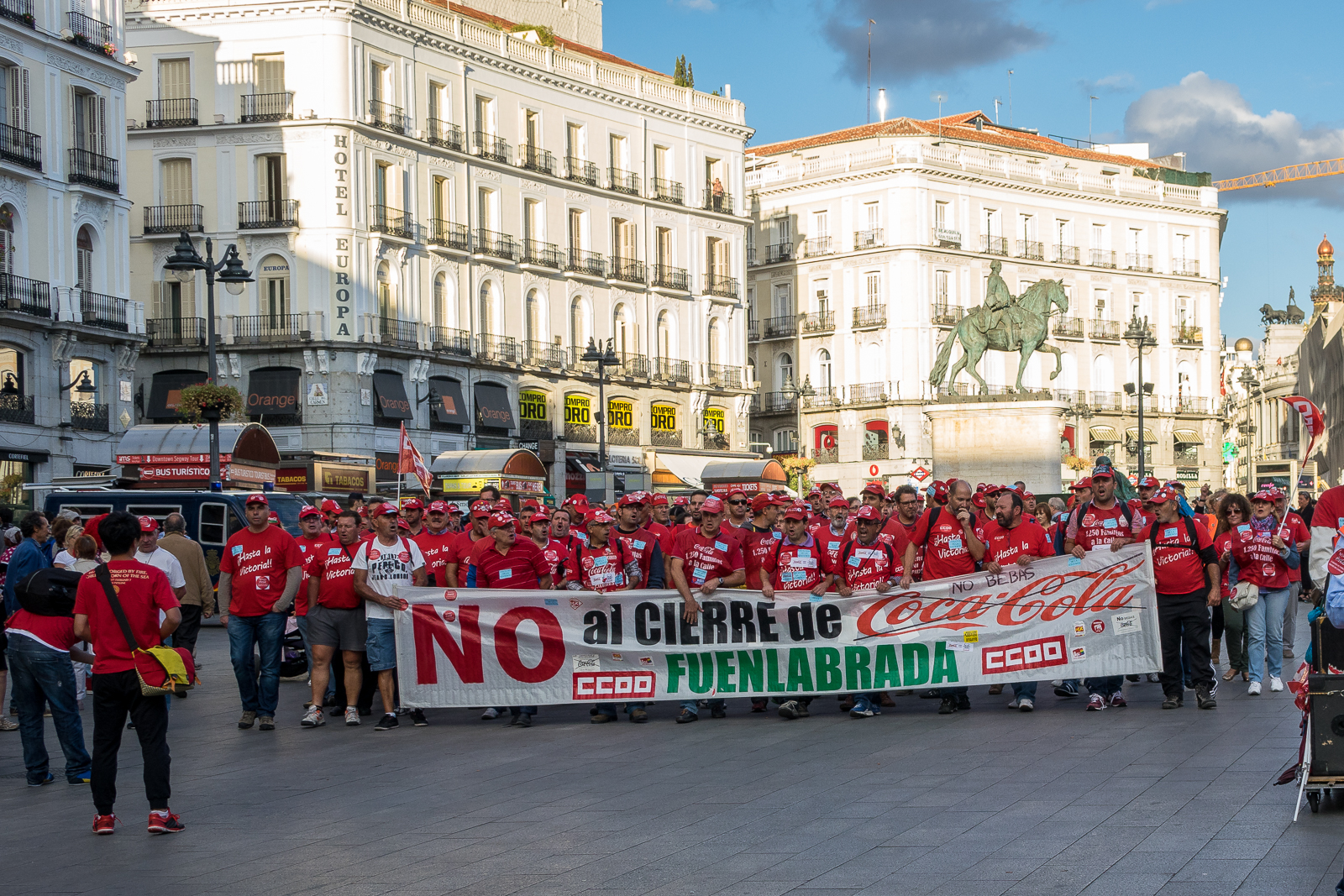
Flamenco night at Las Carboneras Tablao Flamenco. Three dancers, one singer, and a great guitarist performed traditional flamenco in a private show for our tour group. I had initial doubts about this at first, thinking it might be kitschy, but was very pleasantly surprised at how serious the performers were. Although gypsy flamenco artists in Andalucia in southern Spain are well-known, this is a very popular club. You can hear the performers warming up before the show and they are all business on stage. Gypsy, Moorish, and Jewish singing and dance traditions blended over many centuries into a uniquely Spanish art form.
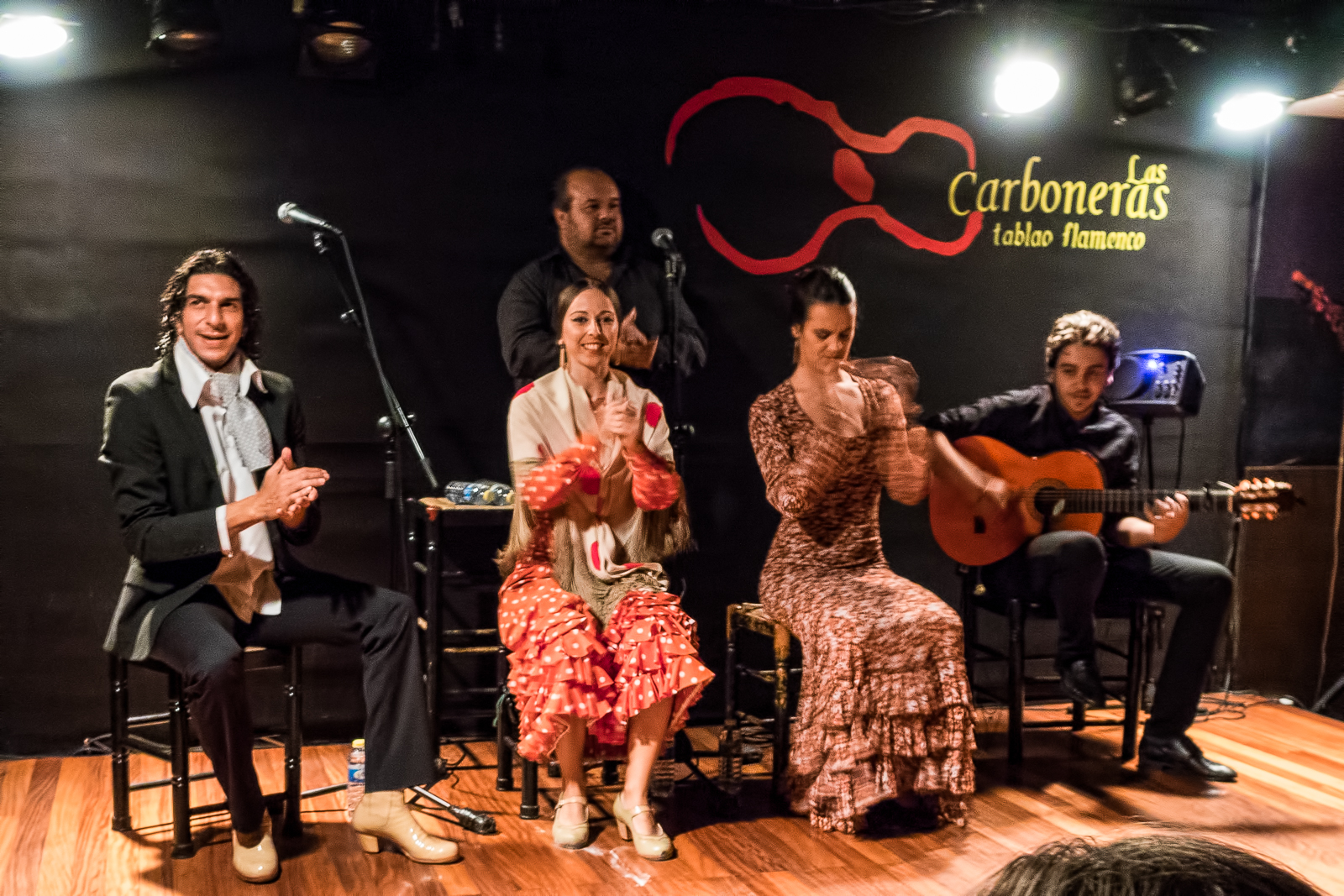
This guy has serious dance boots!
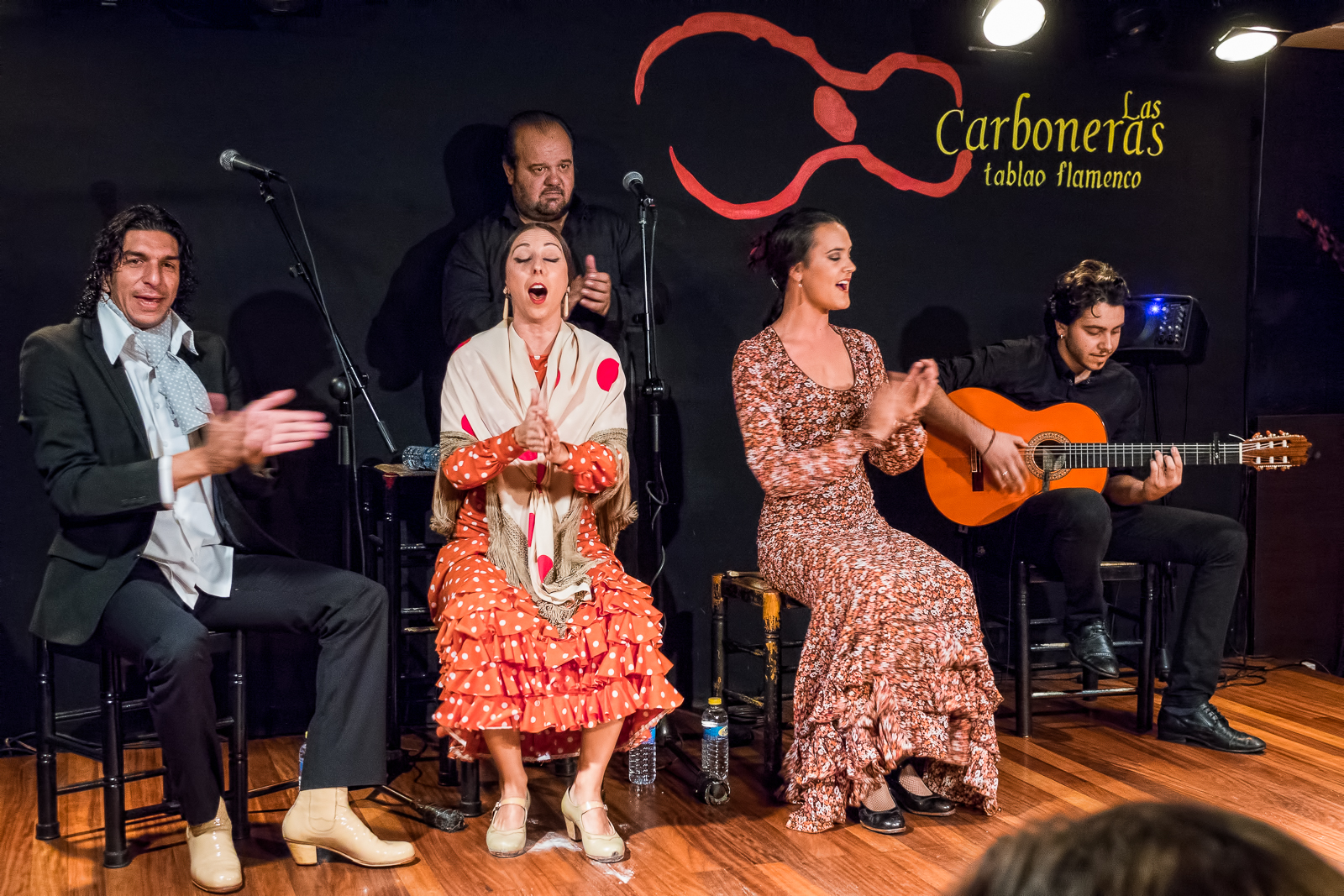
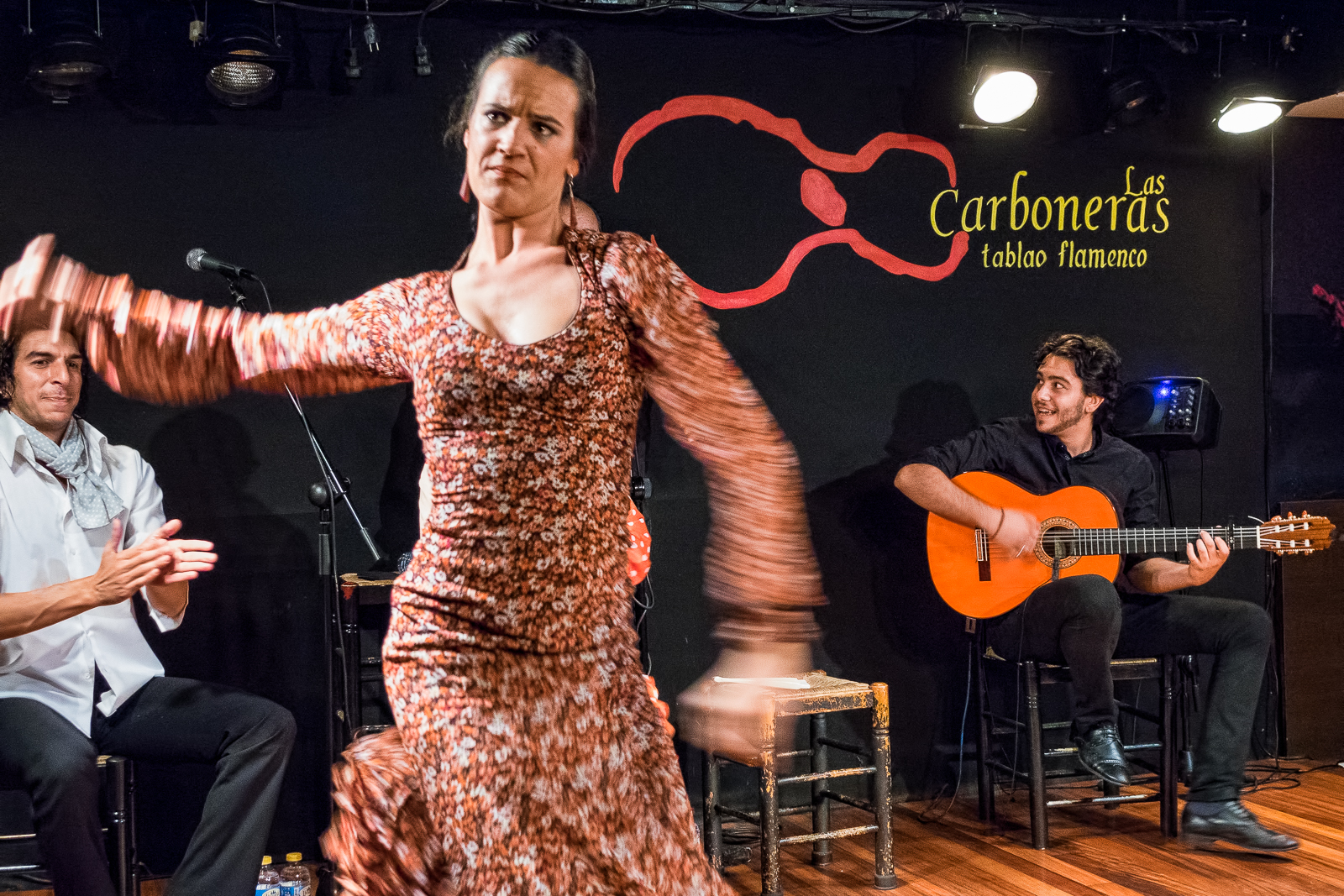
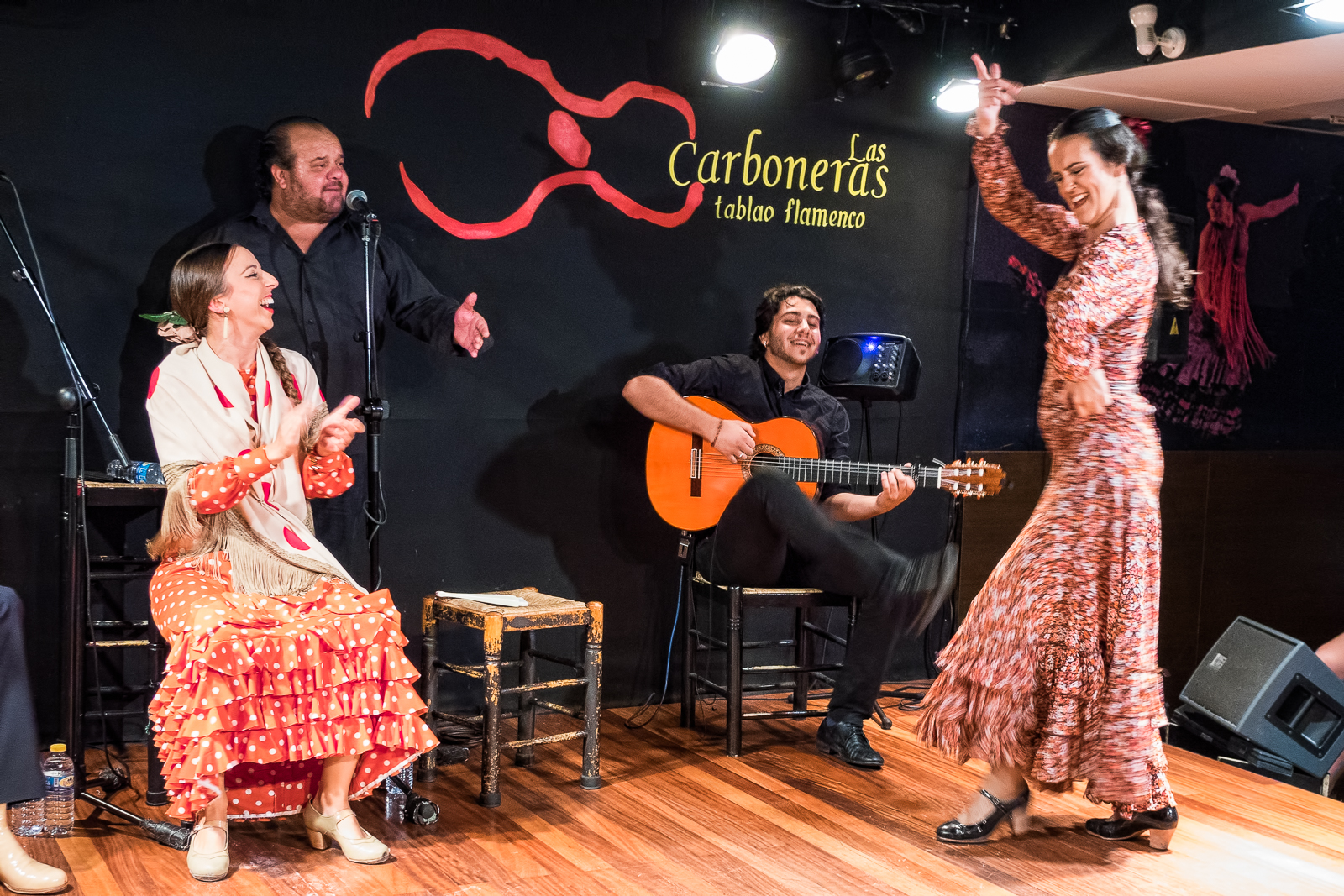
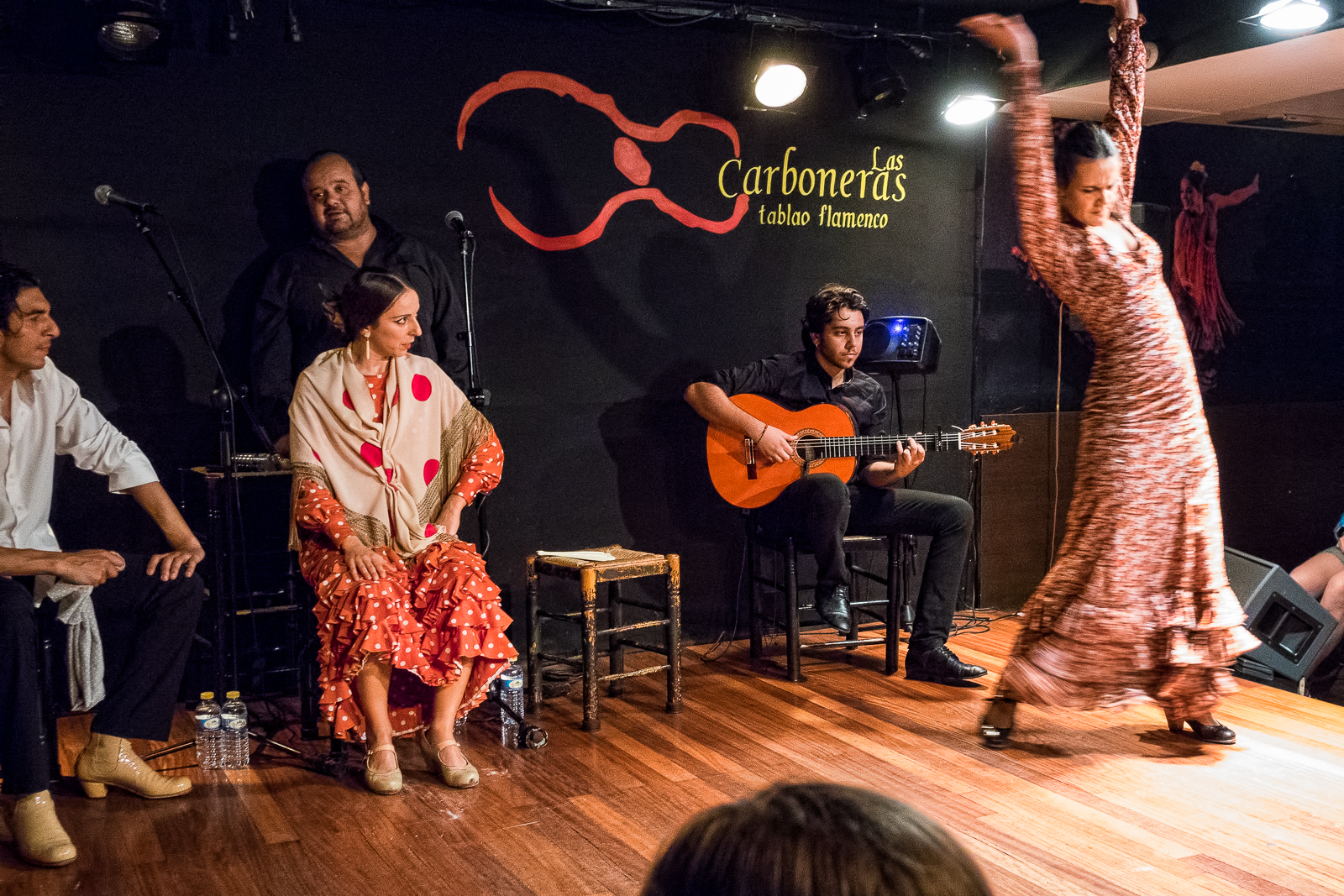
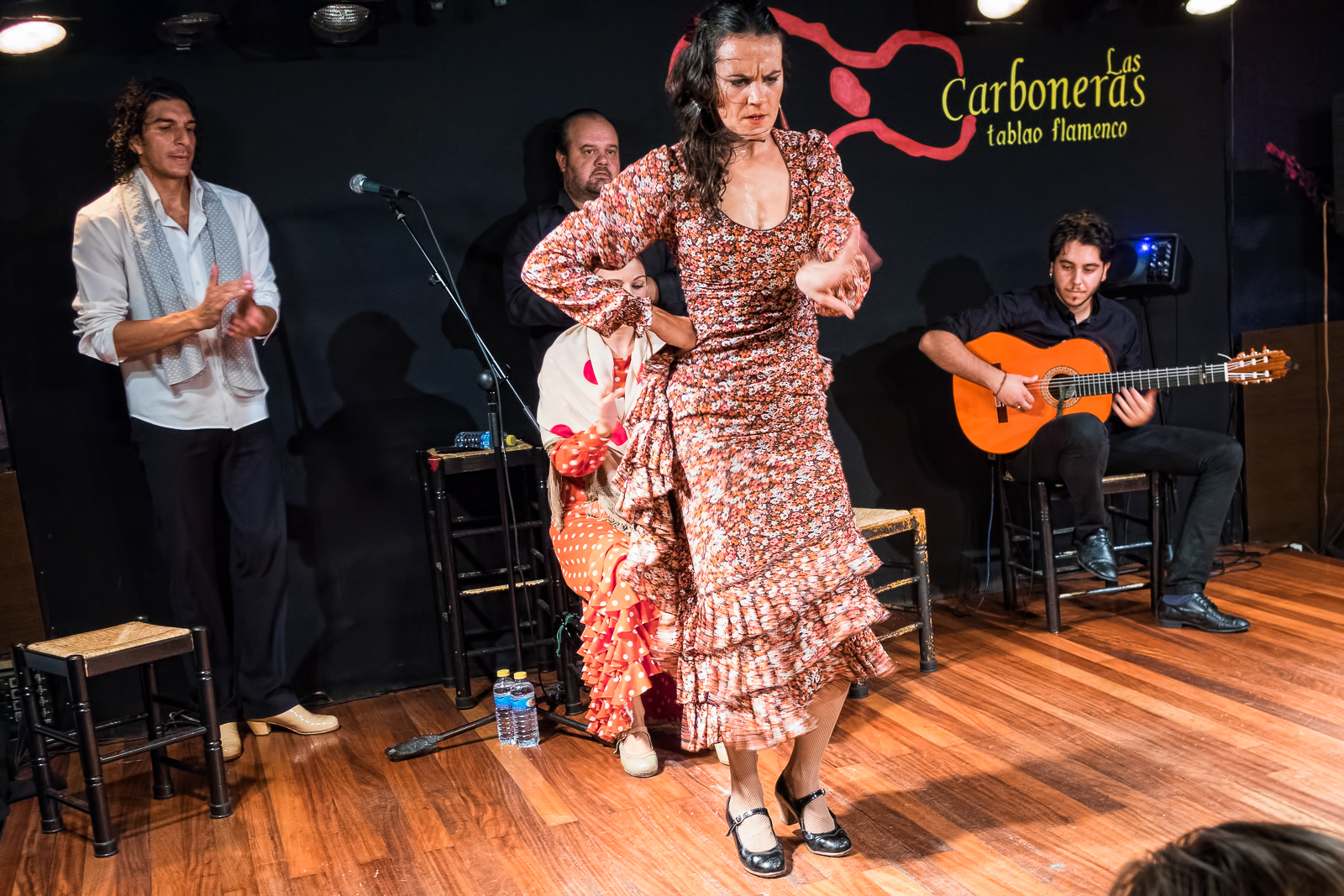
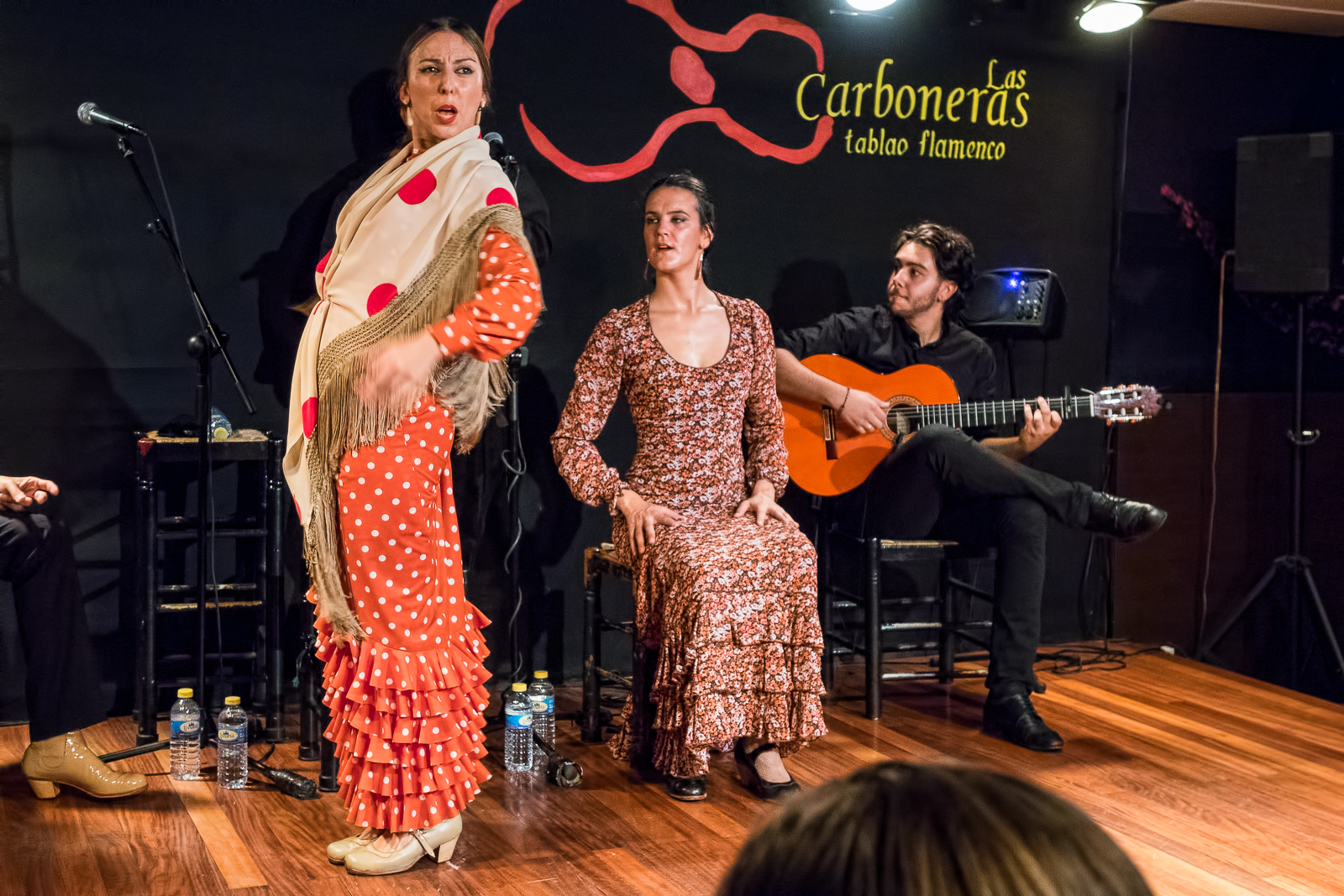

La Plaza de toros — bull ring in Madrid. Bullfighting season is over by October, so this site was hosting a technology/software convention the day we visited. It might surprise some people to know that not all areas of Spain are fans of this sport (or art form, depending on your point of view). It is popular in many regions but not in Catalonia in the northeast. In terms of pure fan favorites, soccer (futbol) rules.
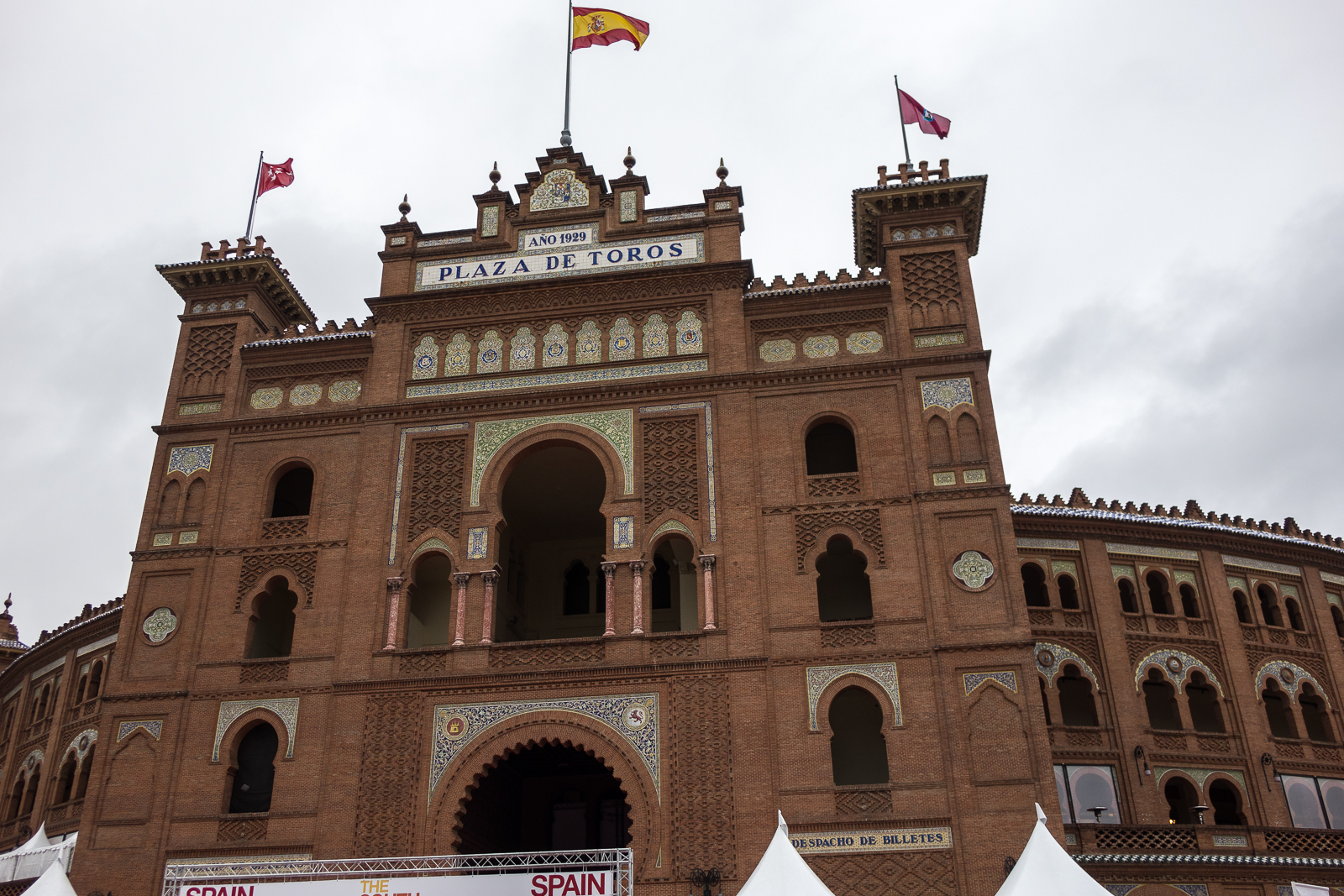
‘
I’m slightly embarrassed to admit that I don’t remember who is commemorated in this sculpture, except to say that he was the most famous matador of the 1980’s. Alas, he died very young…in his 20’s….guess how? In any event, his memorial statue is quite dramatic. Even Spain has its protests again bull fighting from animal rights advocates these days.
‘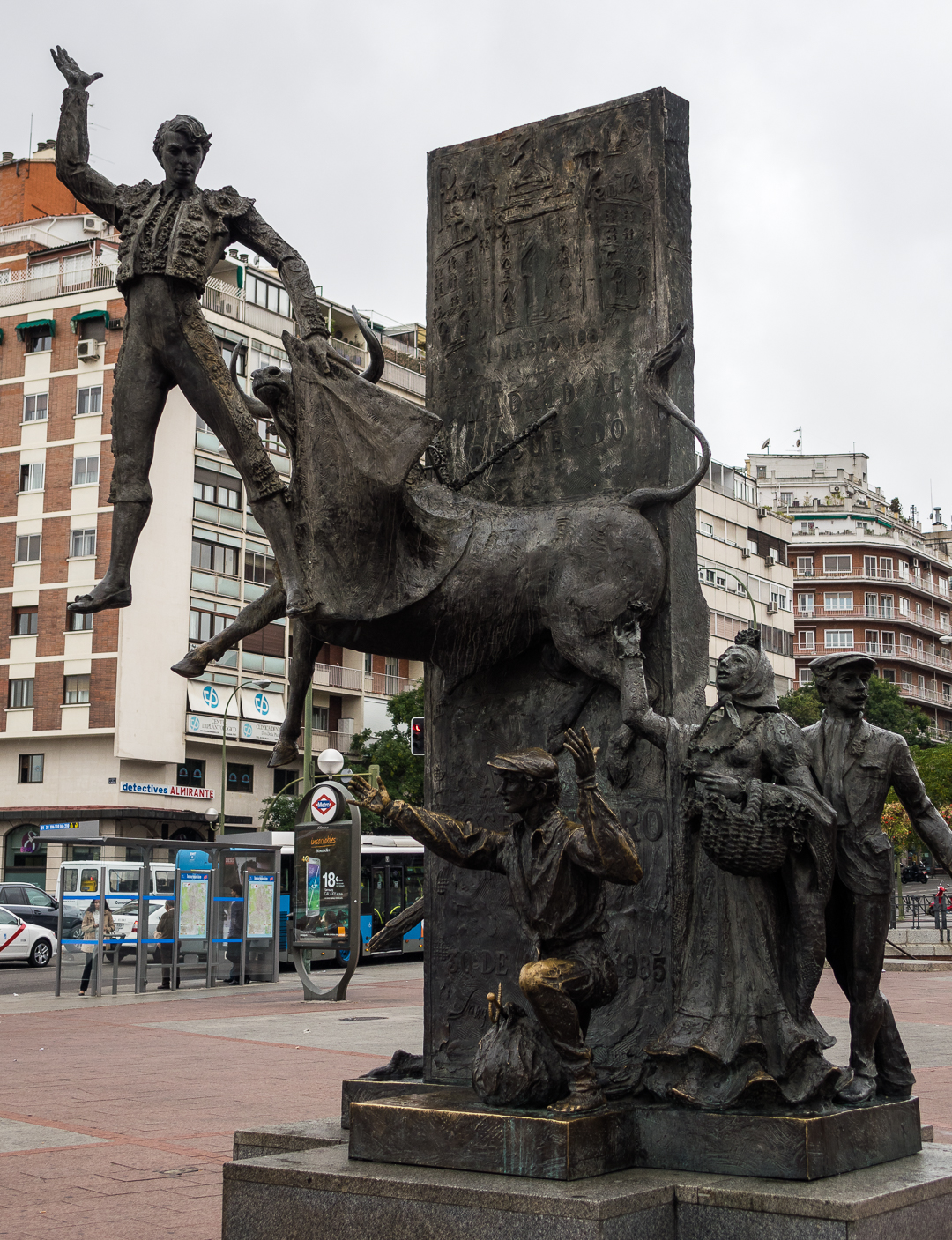
We stopped at this monument to Miguel de Cervantes Saavedra (seated in the central area), the author who wrote the first modern novel about Don Quixote de la Mancha, and his faithful side kick Sancho Panza. Cervantes himself had experience as a soldier and prisoner of war.
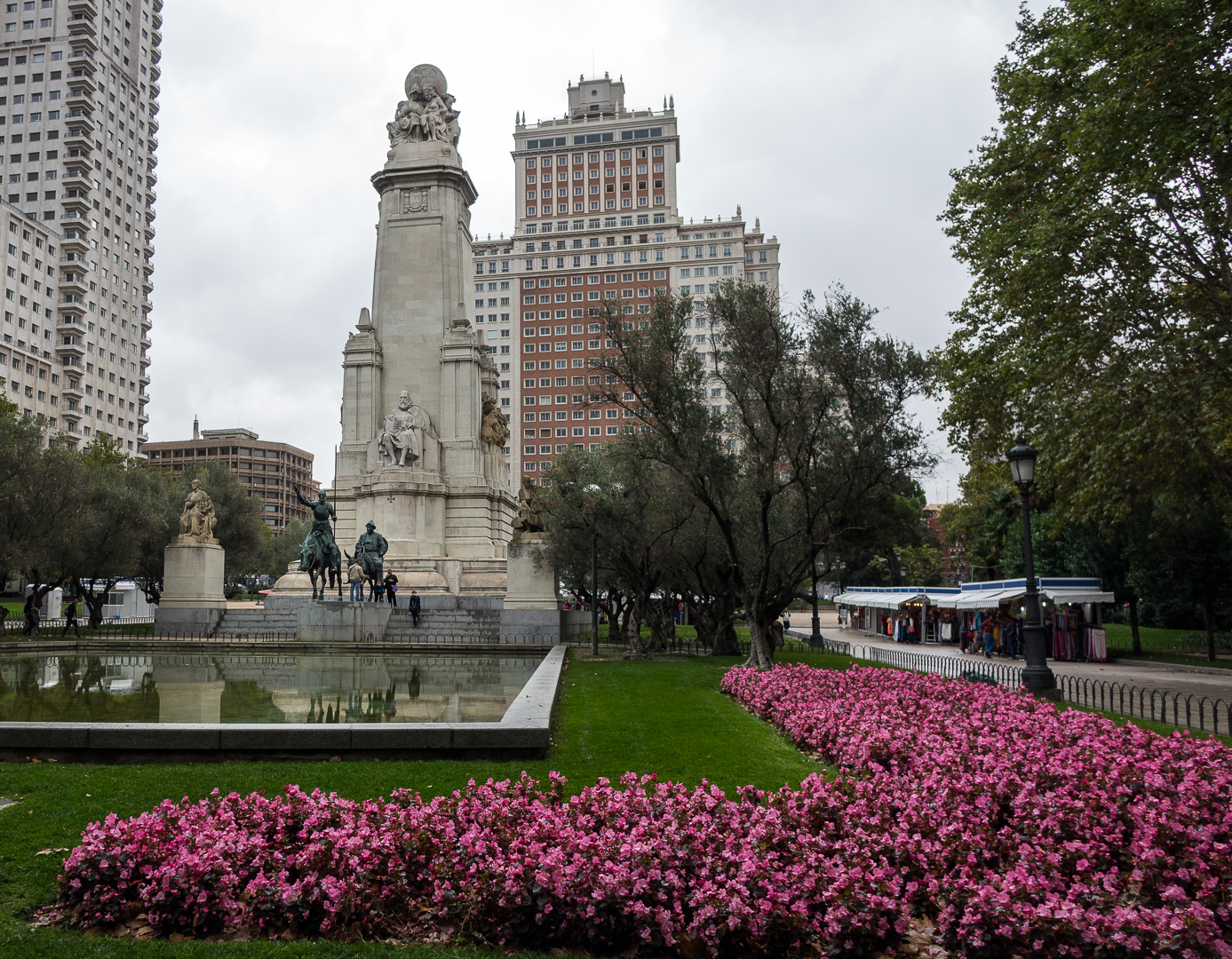
Close up–Cervantes and his literary creations depicted in bronze at his feet.

Fountain Hills High School students enjoying the sights in Madrid during the fall 2014 trip.
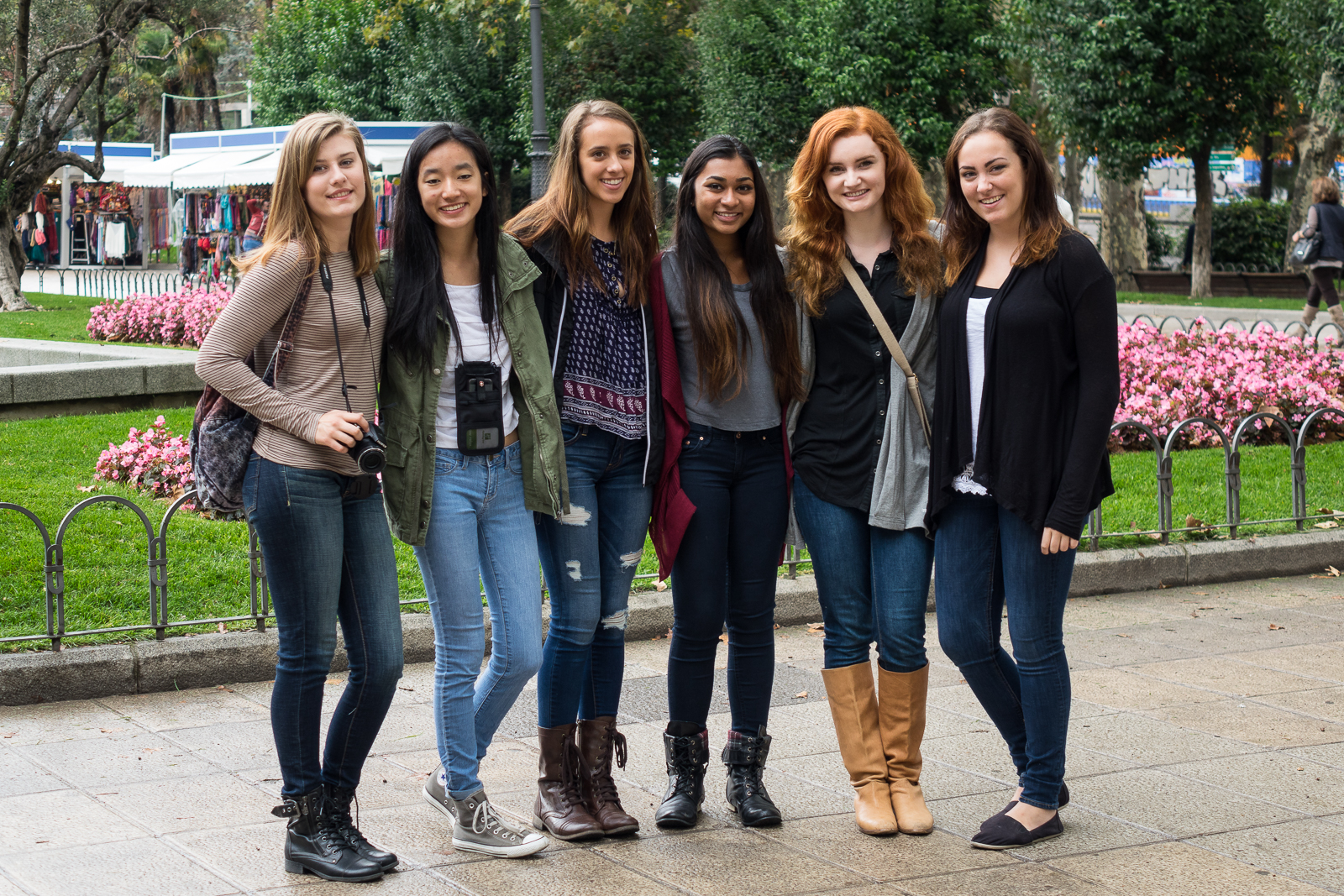
Fountain Hills High School students posing near the Cervantes monument. Students were treated to tapas and a musical “tuna” serenade later in the evening.

‘
A charming musician playing at the park outside the Spanish Royal Palace.
‘
Entrance gate to the Spanish Royal Palace in Madrid.
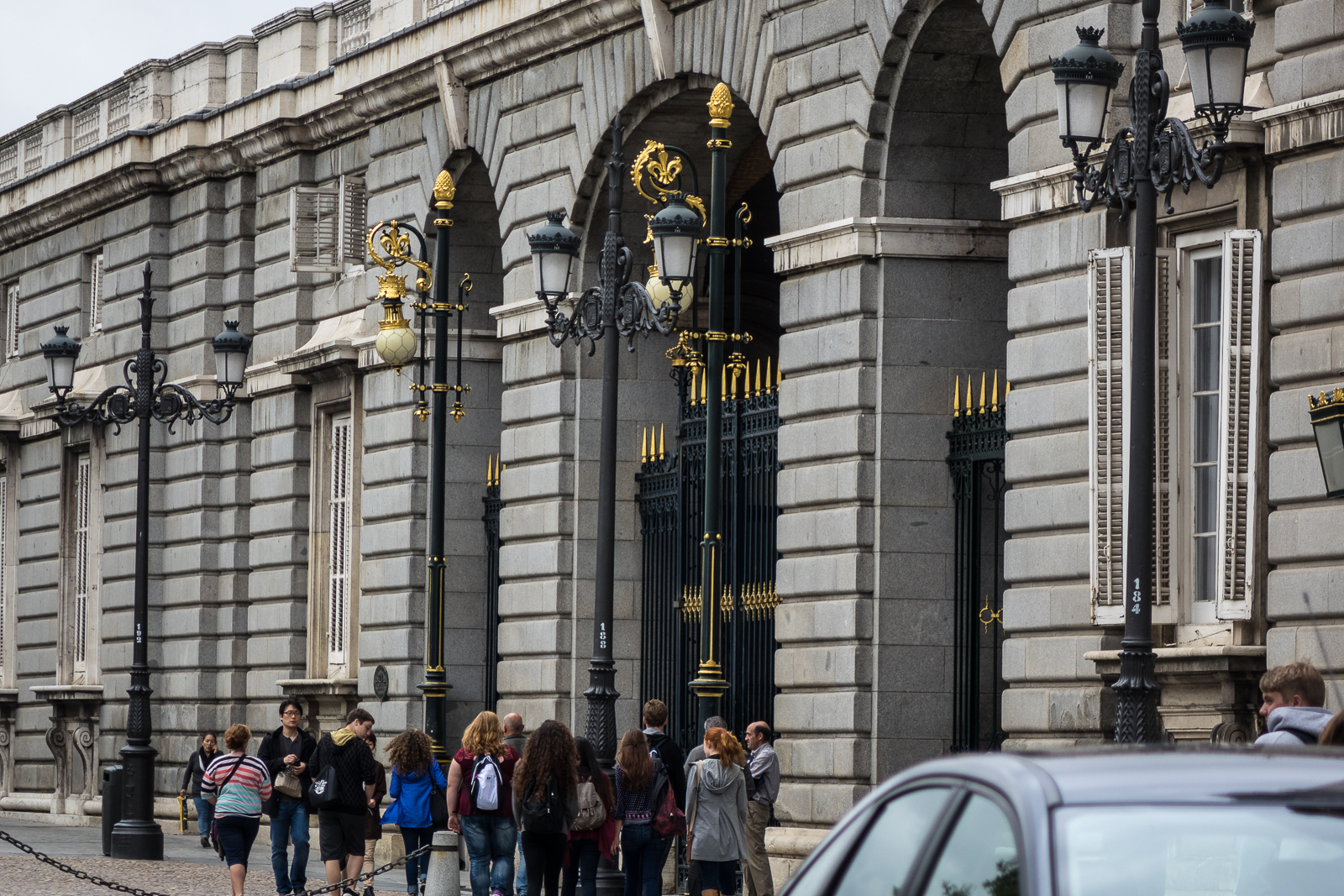
View of the interior courtyard within the royal palace area. This side faces a cathedral.
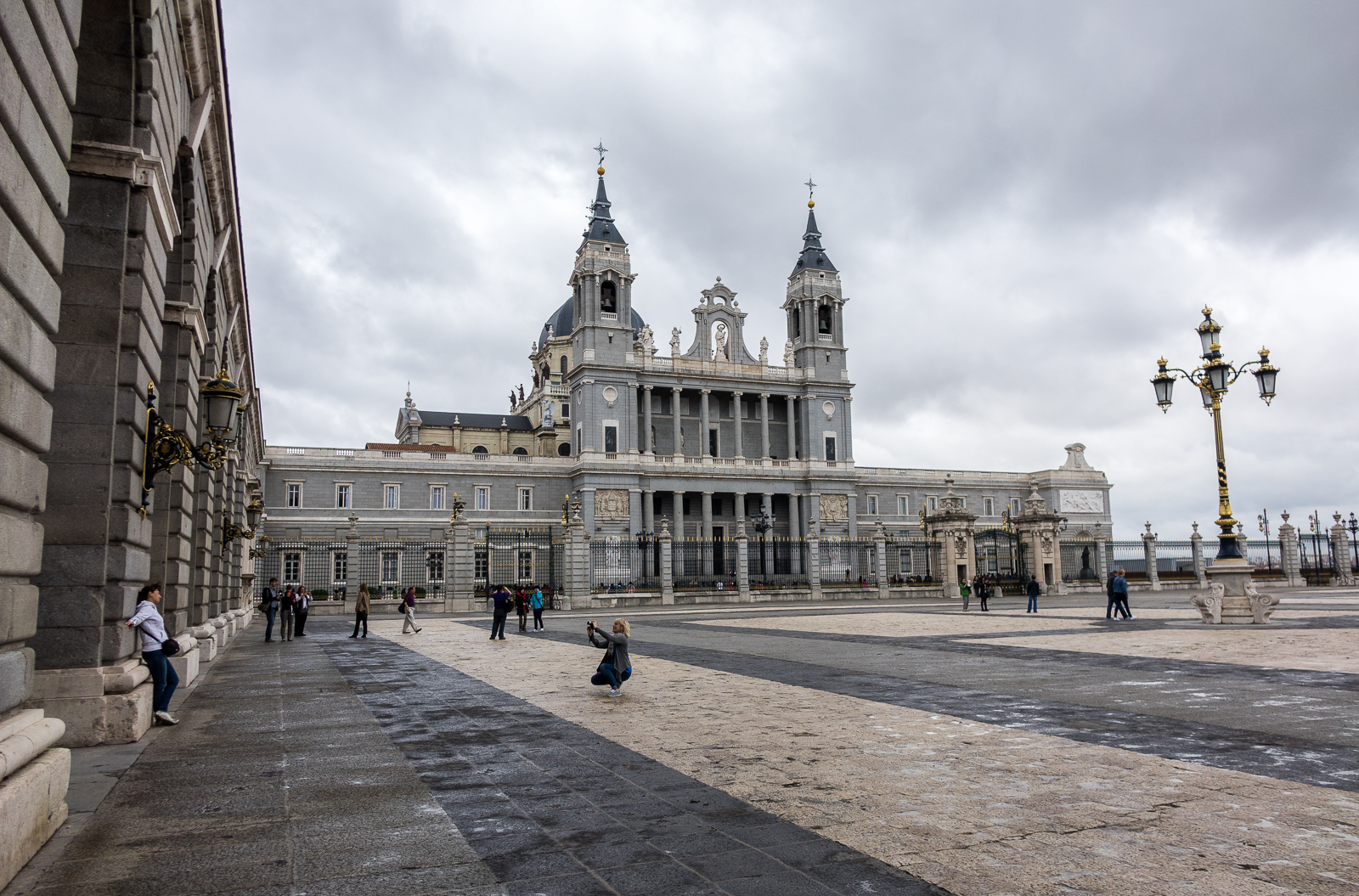
Ceiling fresco in the grand entrance hall to the Spanish Royal Palace. This is the only interior room that allows photography–the throne room, reception halls and dining room do not, sadly. The Spanish monarchy no longer lives at this palace. They have opted for more a more modest residence and use this only for official state business. Juan Carlos abdicated in favor of his son Felipe in June of 2014 in this palace.
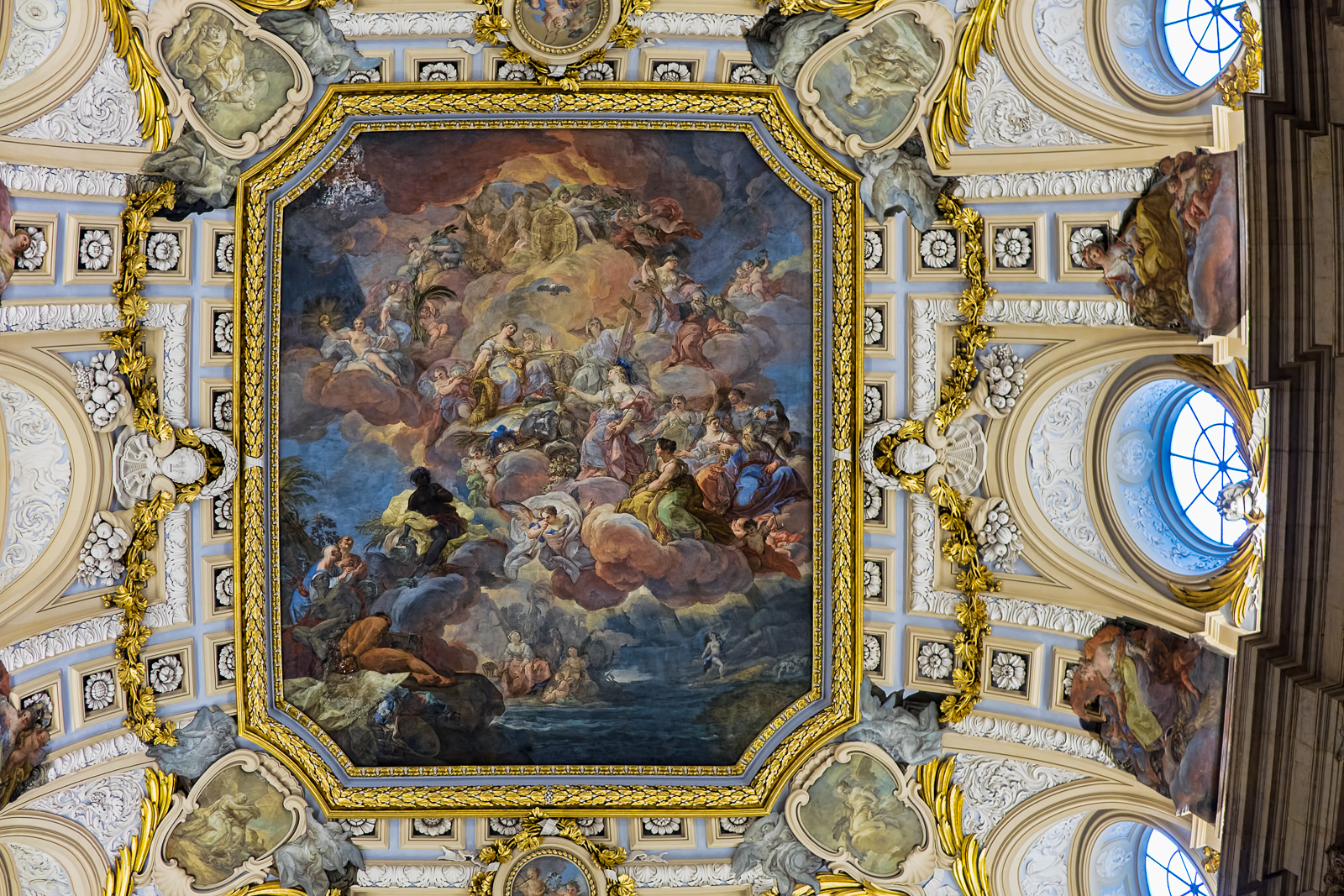
Foyer in the palace below the fresco.
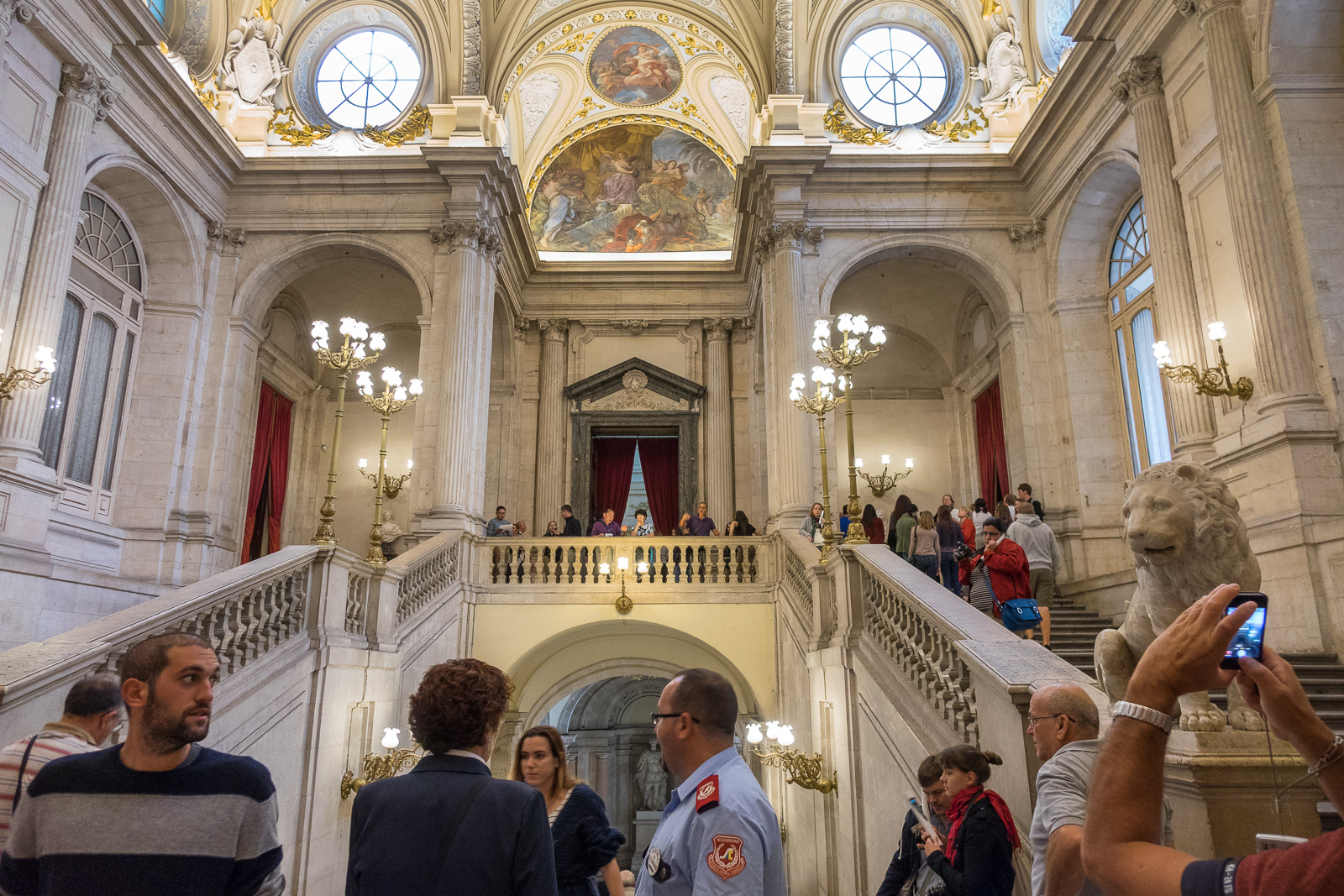
Contessa “standing guard” in the royal palace courtyard.
‘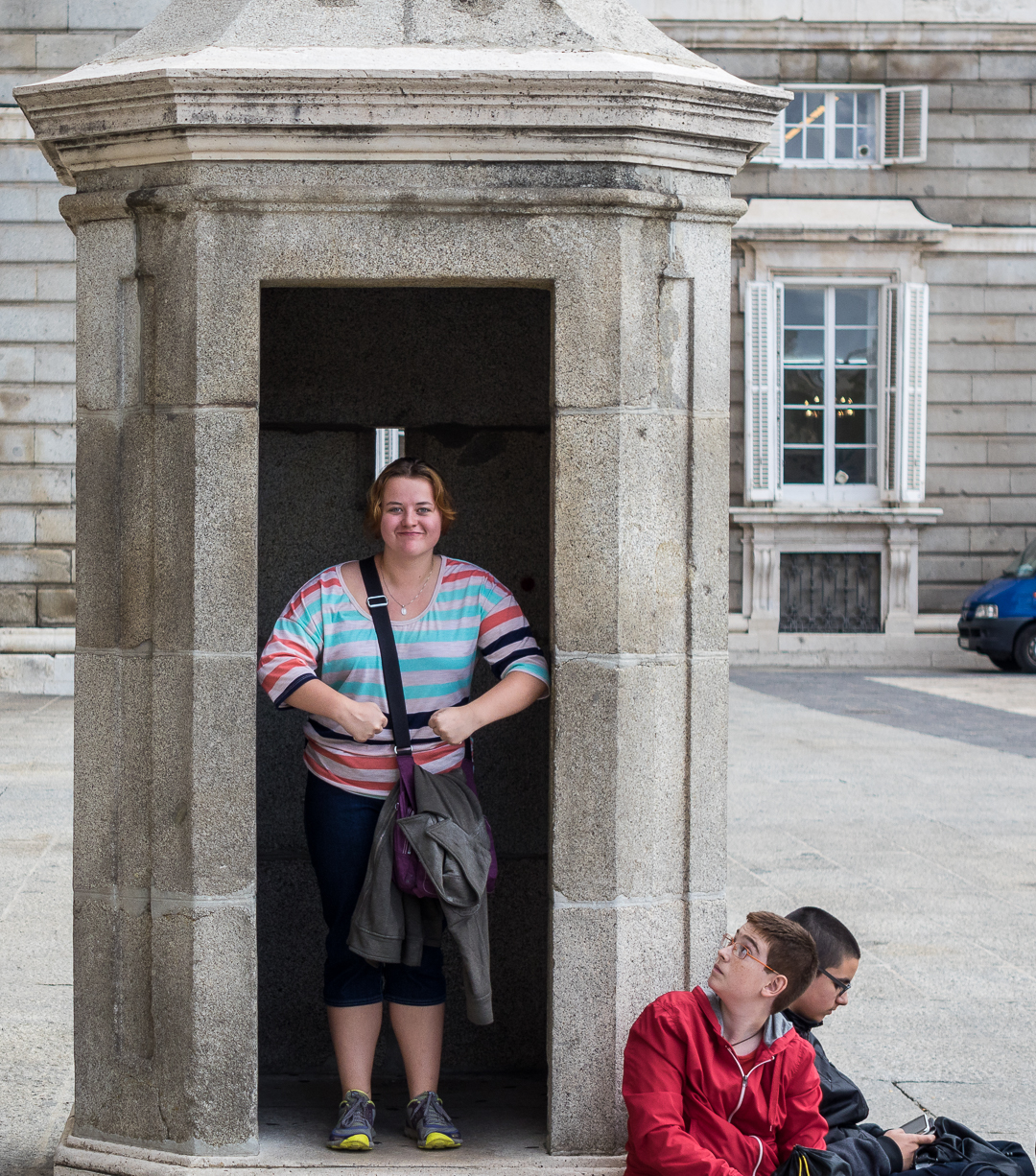
Marie posing in the courtyard of the royal palace.
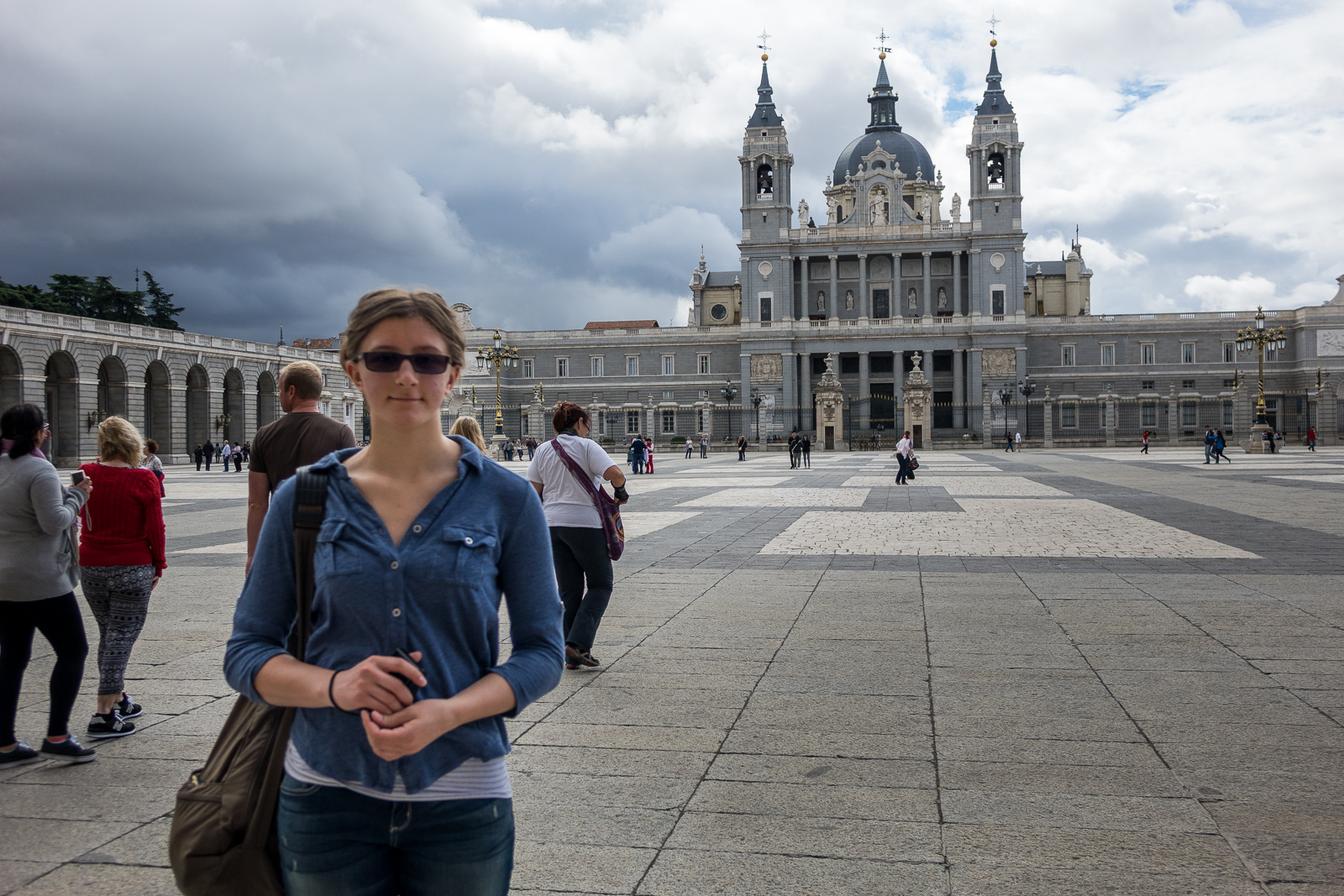
View of the city of Madrid from the palace.

Fountain Hills High School students and chaperons enjoyed the tour of the palace and the armor exhibit in its adjacent armory museum.
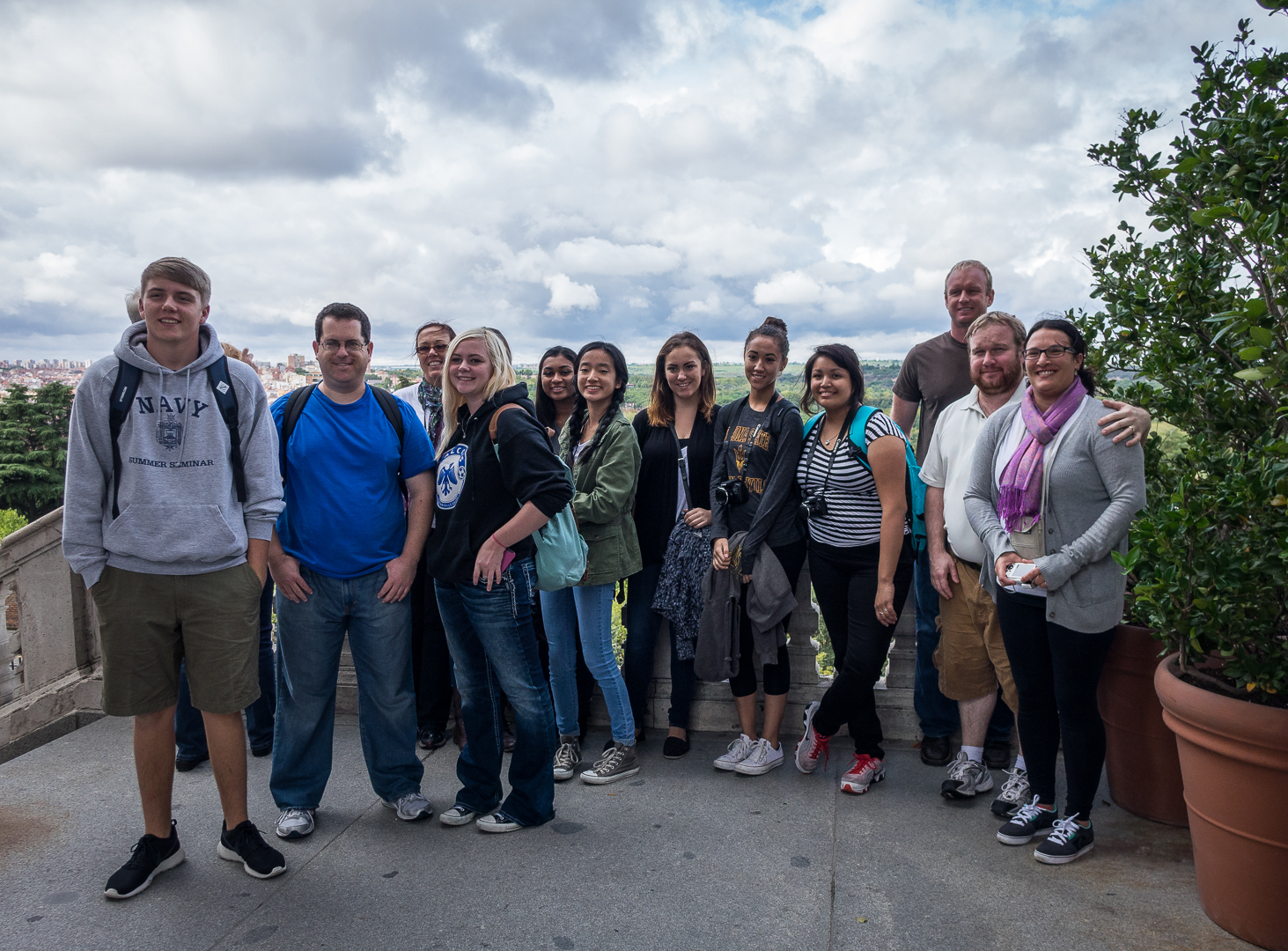
Panoramic view of the Spanish Royal Palace.
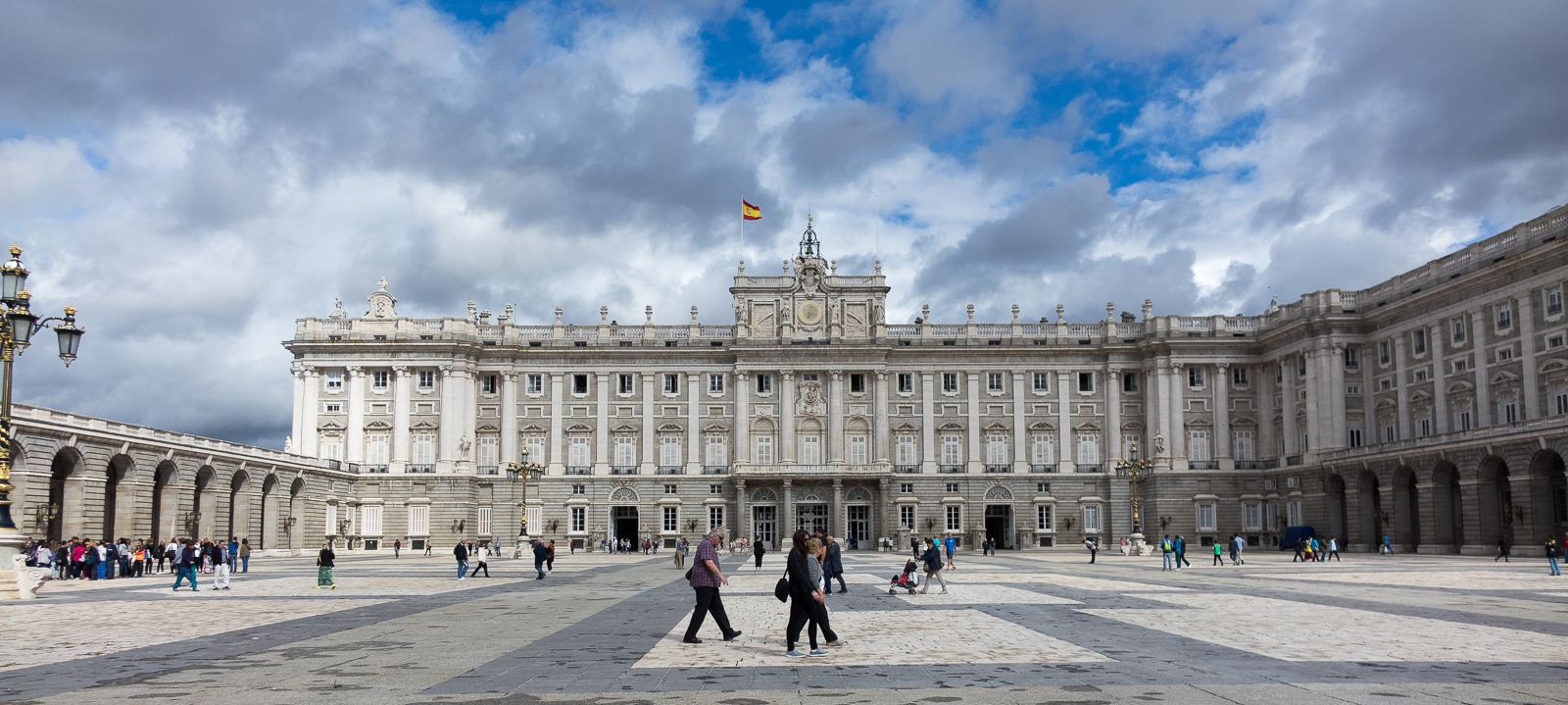
Sculpture of Diego Velasquez, one of Spain’s most famous painters, outside the Prado Museum. Velasquez’s masterpiece, Las meninas, portrays la Infanta Margarita, a Spanish princess of the Hapsburg line. You have to be patient to see it because, despite its enormous size (the canvas occupies an entire wall), there are equally huge crowds waiting to view it.
‘